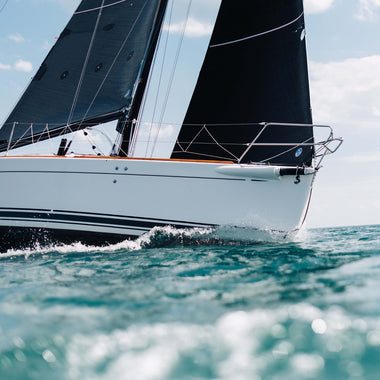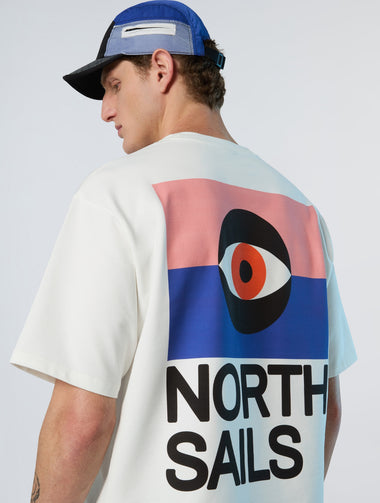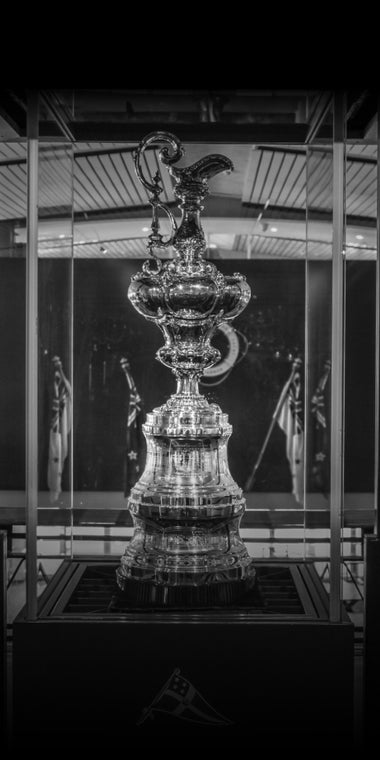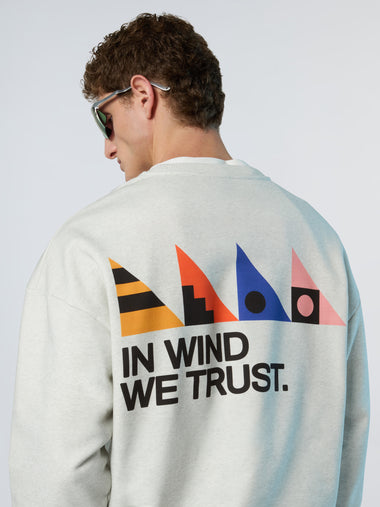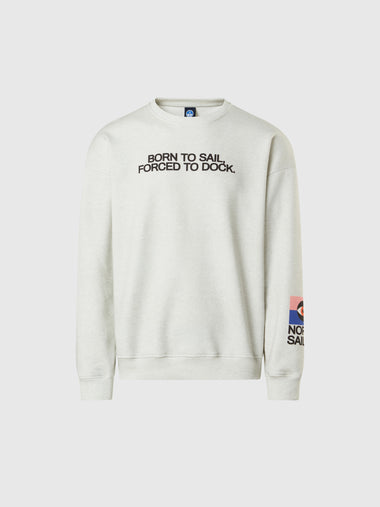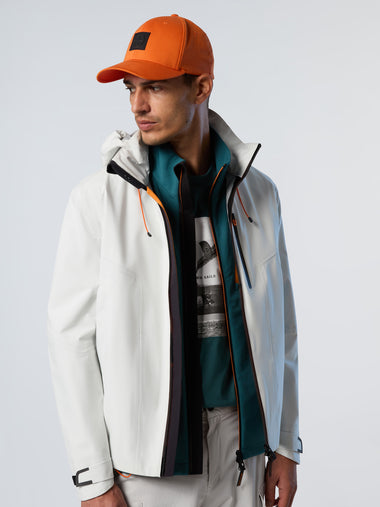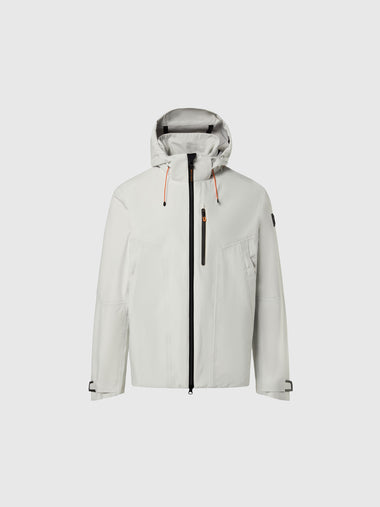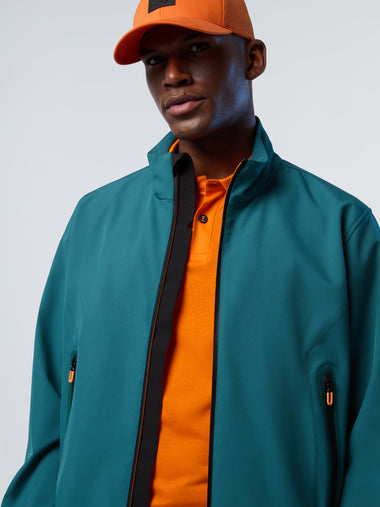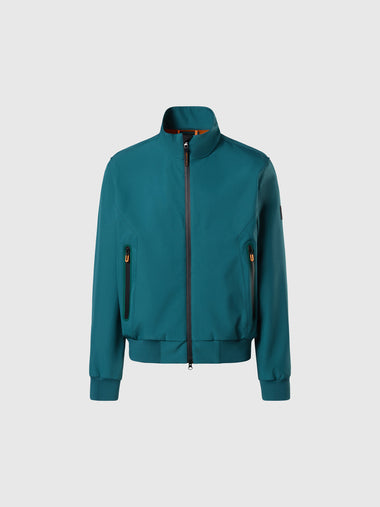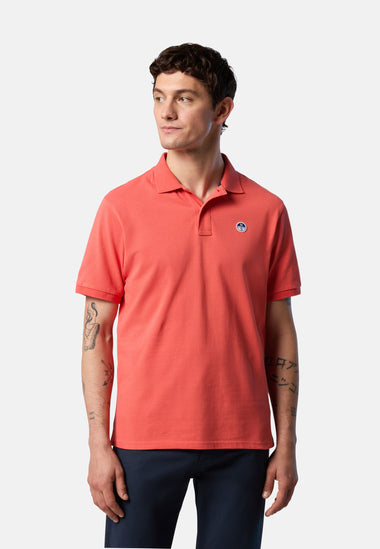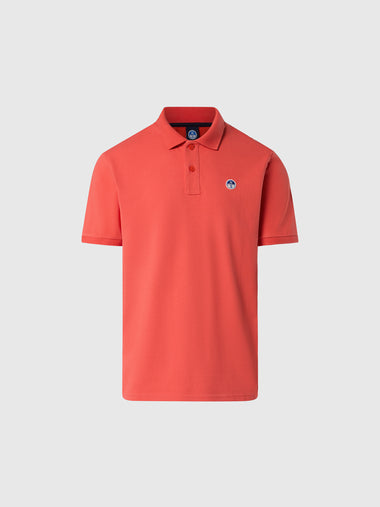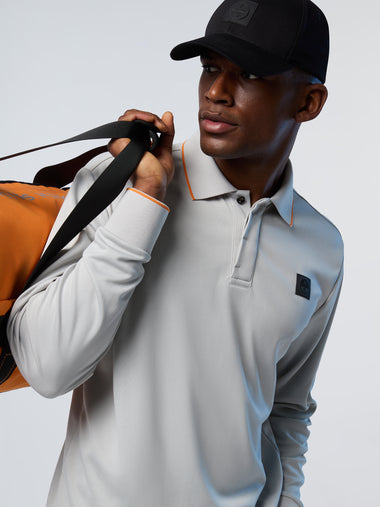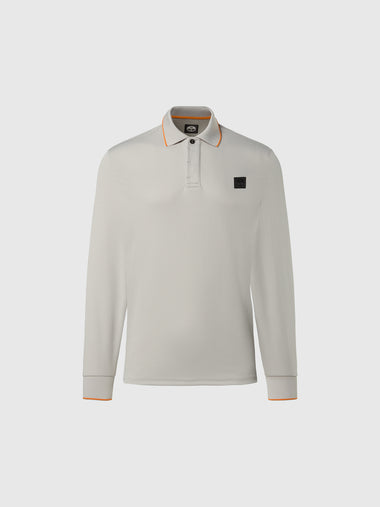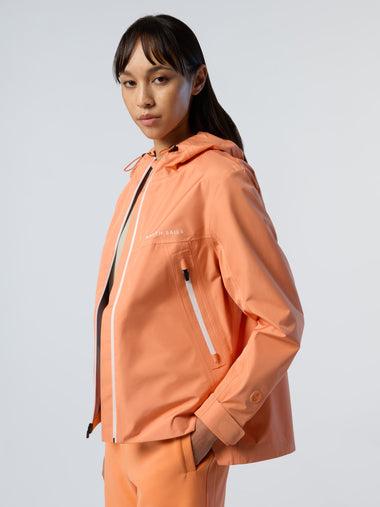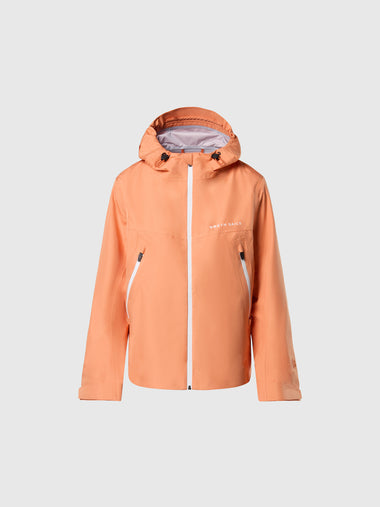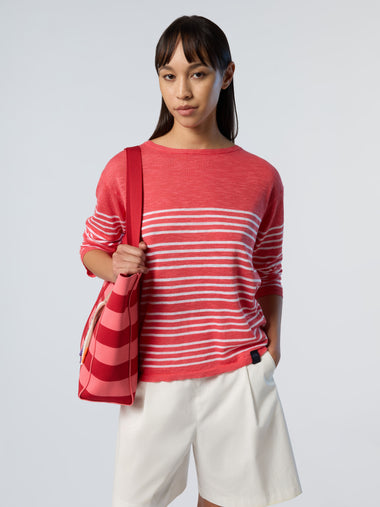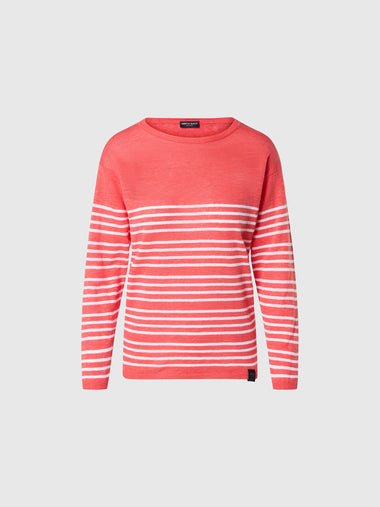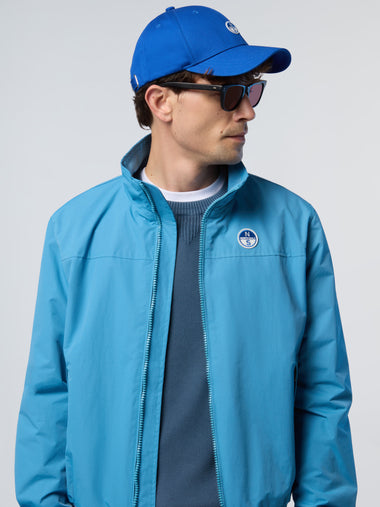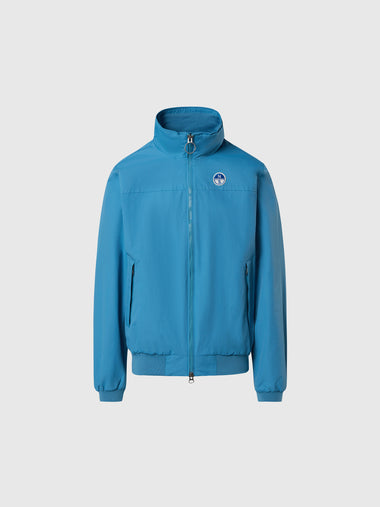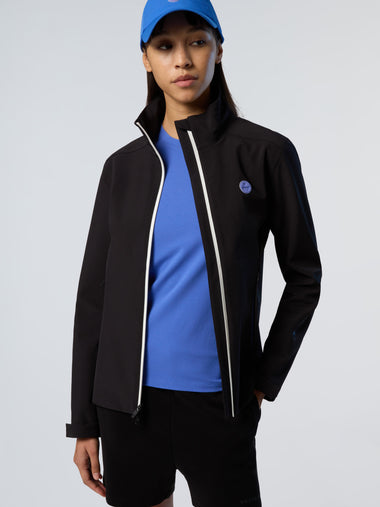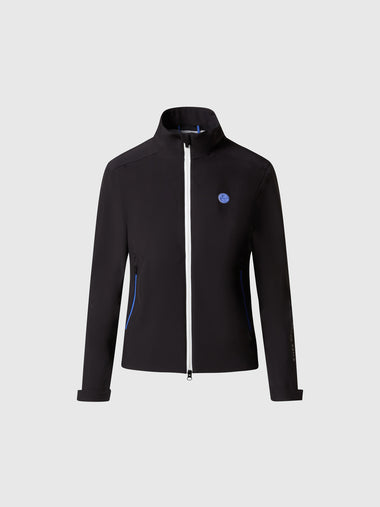NORTH SAILS BLOG
All
Events
Guides
News
People
Podcast
Sustainability
Tech & Innovation
Travel & Adventure

UNE ÉQUIPE DE CHOC À VOTRE SERVICE
UNE ÉQUIPE DE CHOC À VOTRE SERVICE
Du haut-lac aux rives de Genève en passant tout le tour du lac de Neuchâtel, notre équipe de choc se tient à votre disposition.
Faites connaissance avec notre équipe !
Julien Monnier : Avec une véritable passion pour la monotypie, Julien pourra vous conseiller autant en Surprise, D35, Flying Phantom ou GC32, car il ne suffit pas d'avoir de bonnes voiles, il faut également les adapter à votre bateau et à votre style de navigation ! Responsable commercial et du réseau revendeurs, il est actif partout autour du Léman et particulièrement dans le haut-lac. Julien partage son temps entre le travail technique du développement des voiles, conseiller commercial, et depuis 2019 en tant qu'associé de la voilerie.
Michel Vaucher : Autant à terre que sur l’eau, Michel est multi-tâches depuis plus de 30 ans : coaching des clients North Expérience, réparations en tout genres, travail sur le plancher, vente, représentation… Vous aurez l’occasion de le croiser autant du côté des Trois Lacs que du Lac Léman, car Michel est un excellent régatier et un metteur au point hors-paire !
Nicolas Groux : Spécialisé dans la formation, les nouveaux bateaux ou les nouvelles équipes, c'est LA bonne personne pour vous aider à mettre tous vos projets en place !
Extrêmement polyvalent, autant à la réparation des voiles, qu'à la vente, le service aux clients, les mises à bord, les navigations, Nicolas est un véritable couteau-suisse et est à votre disposition principalement autour de Genève. Polyvalent et disponible, il sera à votre écoute pour vous satisfaire en régate comme croisière.
Philippe Massat : avec plus de 20 ans d'expérience sur le plancher et après des débuts plutôt dans le parapente, Philippe est le responsable du service des voiles amenées chez North Sails. Méticuleux, rigoureux, rien ne filtre ! Vos voiles seront bichonnées et soignées une fois passée entre ses mains.
Patrick Mazuay : Patrick a rejoint la famille North Sails Suisse en 1998. Avec, entre autres, de nombreuses America's Cup à son palmarès en tant que sail designer, et naviguant sur tout ce qui flotte (du dériveur au TF35, en passant par de magnifiques bateaux comme le « Black Swan » avec lequel il a remporté le Bol d’Or toutes classes !), Patrick sera à votre écoute quel que soit votre projet !
Arnaud Psarofaghis : Depuis tout petit, il compte parmi les meilleurs navigateurs de la jeune génération en Suisse. Sails designer pour North Sails Suisse depuis 2009, Arnaud peut naviguer sur tous les types bateaux, que ce soit en Toucan, Psaros 40, Ventilo M2, D35, TF35, mais également en mer à bord de GC32, Moth à foil ou F50... Peut importe vos idées, Arnaud saura vous guider.
Christine Jorand : responsable de l'administration et de la comptabilité, Christine est également en charge de la gamme "Crew Collection" pour les vêtements sportswear et technique. Elle est de la partie pour toutes les remises des prix, et vous pourrez également croiser Christine sur le bateau start lors des régates !
Pierre-Yves Jorand : avec une expérience en multicoque lémanique depuis 1994 comme barreur, régleur de Gd Voile et performer, Pierre-Yves a un sens aiguisé pour développer l’efficience et est passé maître dans l’art d’améliorer les performances. Egalement directeur de l'équipe Alinghi, passionné par le sport d'élite et la relève, avec un profil d’analyste rigoureux et fin régatier, Pierre-Yves vous attend pour développer à vos côtés vos projets les plus fous.
Ben Schagen : Avec un premier Bol d'Or en 1966 à l'âge de 11 ans, Ben a toujours été un mordu de voile ! Il ouvre une voilerie à Genève en 1977, qui devint plus tard “Voiles Phi Schagen & Cie”, et enfin “Voiles Phi S.A” en 1986 avec la construction de notre voilerie actuelle à Satigny. Même en levant légèrement le pied à partir de cette année, Ben se tiendra toujours à votre service et à votre écoute à temps partiel à la voilerie, mais surtout sur les pontons, à bord, dans les ports !
Pierre Ratajski : Passionné de voiles, Pierre dit Rata, s’associe à la voilerie Phi dès 1978. Toujours à fond après toutes ces années, Rata reste à votre écoute partout où vous le croiserez et se fera un plaisir de vous conseiller sur tous vos projets ! Vous le verrez encore souvent à bord de son beau Grand Surprise, pour le plaisir et en régates tout autour du lac Léman, ainsi qu'à temps partiel à la voilerie.
READ MORE
READ MORE

LE SALON NAUTIQUE EST DE RETOUR
UNE AVALANCHE D'OFFRES EXCEPTIONNELLES ACCOMPAGNE LE RETOUR DU SALON NAUTIQUE DU 12 AU 14 NOVEMBRE
Le Salon Nautique du Léman est de retour : et avec lui, une période d'offres exceptionnelles ! Contactez-nous maintenant pour optimiser votre bateau avant d'hiverner votre bateau (pendant qu'il est encore à l'eau), et rencontrons-nous pendant le salon nautique à Palexpo.
Rien de mieux que de discuter à bord de vos nouveaux projets de voiles pour 2022. Profitez de l’expérience de nos experts pour passer à la vitesse supérieure ou à un meilleur confort en croisière durant cette fin de saison. Ils discuteront avec vous des nouveautés, vous conseilleront sur l’entretien de vos voiles ou sur un bon hivernage et vous proposeront une pléiade d’offres exceptionnelle.
Afin d'anticiper tout cela, prenez contact avec notre équipe d'experts pendant que votre bateau est encore à l'eau, pas encore hiverné, afin de pouvoir discuter de vos futurs projets et faciliter la prise de cotes. Retrouvez.nous ensuite au salon nautique du Léman du 12 au 14 novembre 2021 à Palexpo pour profiter des "offres spéciales salons" et d'autres superbes opportunités ! Toute notre équipe sera ravie de vous accueillir à nouveau sur notre stand et sera à votre disposition. Obtenez votre invitation gratuite ici.
Contactez-nous pour prolonger la durée de vie de vos voiles !
READ MORE
READ MORE
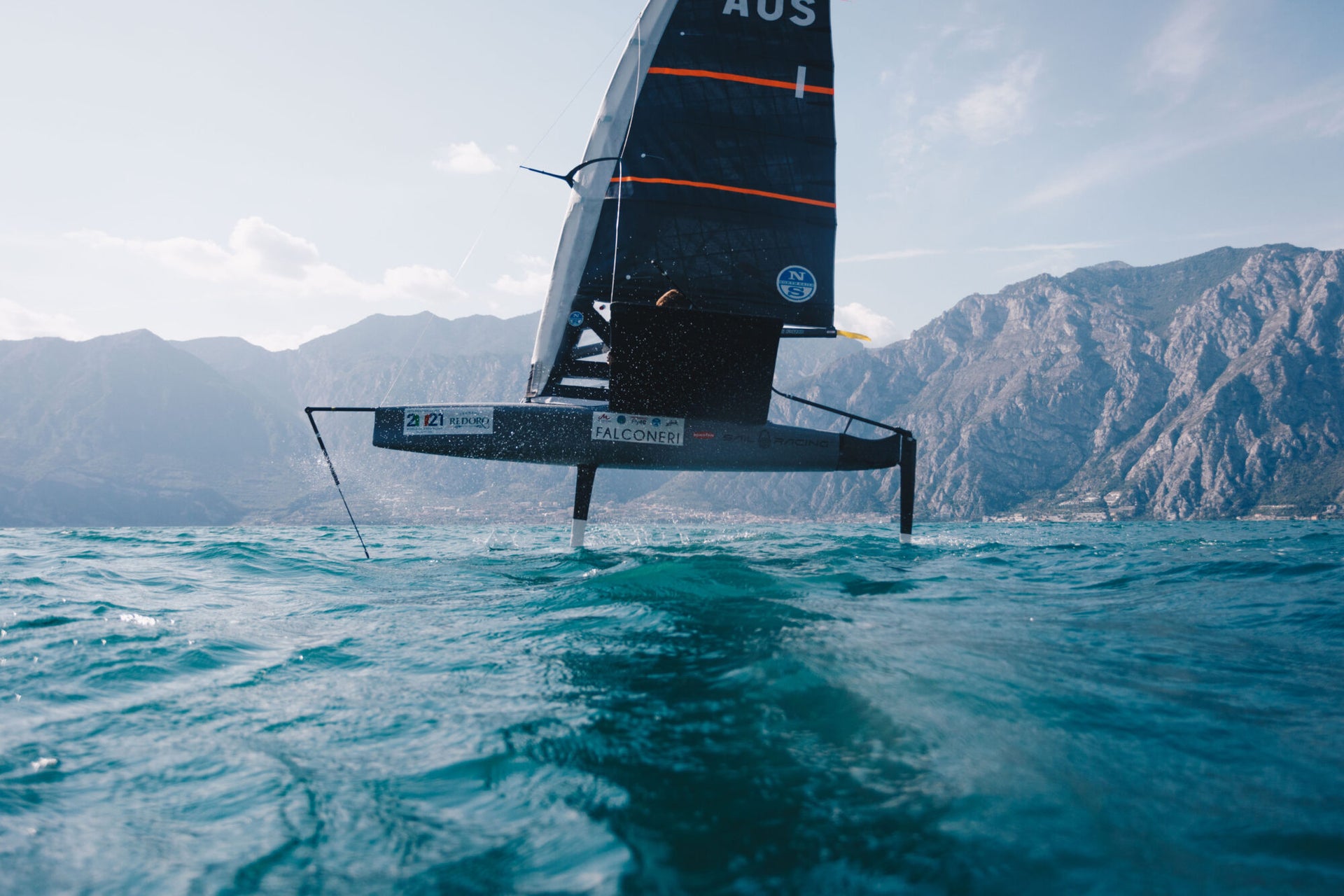
THAT'S A WRAP FOR MOTH WORLDS
THAT’S A WRAP FOR MOTH WORLDS
The Moth event was everything and more for the sailors: exciting, tricky, surprising, challenging, and really (really) fun.
Imagine this for a second, 140 Moths buzzing around with just the sound of the foils cutting through the water. That was the scene on Lake Garda last week during the 2021 REDORO International Moth World Championships.
This development class is known for attracting the best in the game. Slingsby, Jensen, Bruni – good luck trying to add up the Olympic Medals, America’s Cup wins or World Championship titles shared amongst the entry list. 2021 Women’s World Champion Josie Gliddon summed the competition up: “it’s a seriously tough fleet. If you look at the amount of gold medalists in the top 10, it’s insane.”
While Moth sailors make it look easy, flying on foils is anything but. 2021 World Champion Tom Slingsby likens a Moth Worlds to his own personal America’s Cup. In addition to out- sailing your competition, competitors have to make critical performance decisions such as; foil, platform and mast selections, and last but not least – what sails to use (Slingsby uses North 3Di). It’s the combination of these unique decisions that make or break your success on the water, and in the class.
North Sails joined the competitors during the event on Lake Garda and we’re happy to share our latest video drop.
📸 Atila Madrona / North Sails
READ MORE
READ MORE
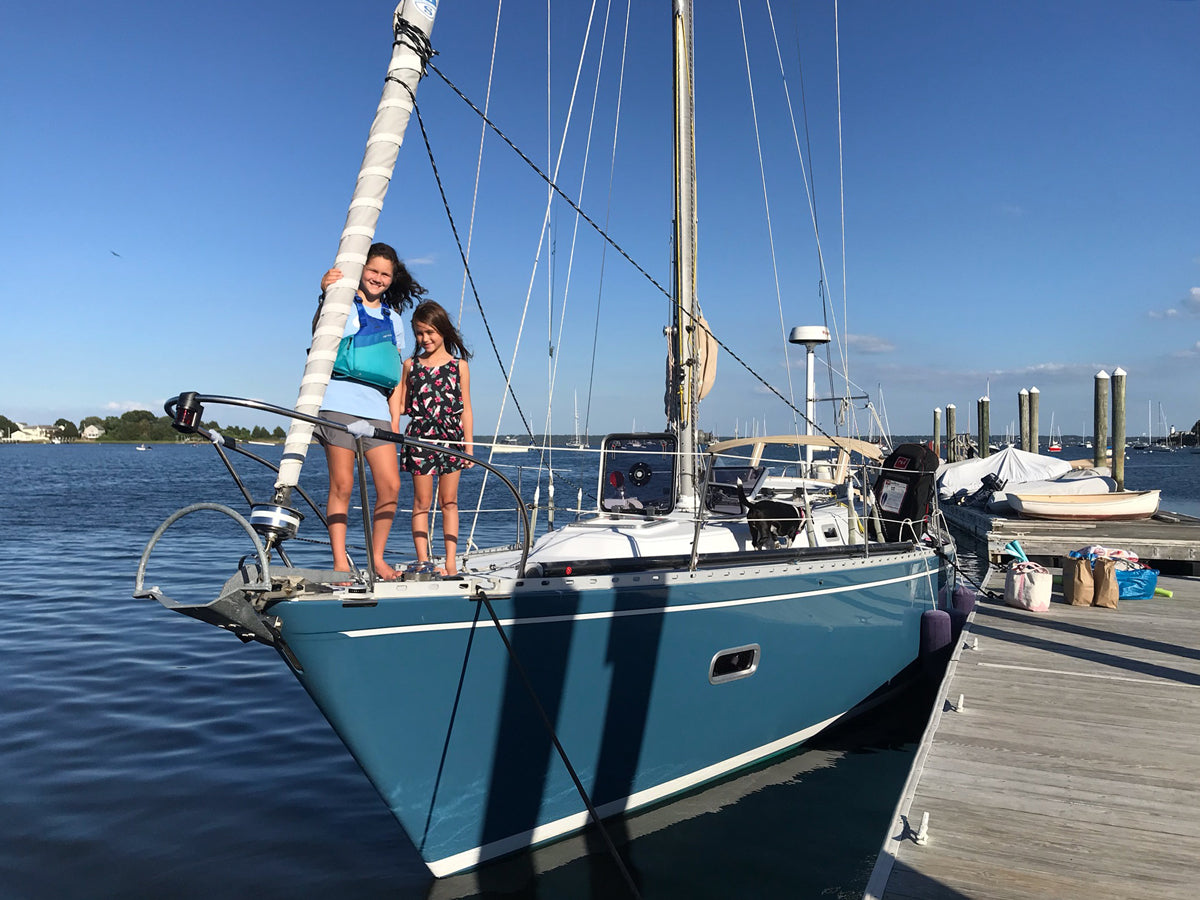
3 TIPS FOR FUN FAMILY CRUISING
3 TIPS FOR FUN FAMILY CRUISING
Two Fast-Growing Kids Required a Leap of Faith to a Larger Boat, and Now it’s a Lot More Fun for the Whole Smith Family.
It was Memorial Day weekend of 2020 when Tracy and Ezra Smith suddenly realized: their family of four had outgrown the Marshall catboat they’d owned for eight years.
“We did a lot of overnights on that boat when the kids were young,” Tracy remembers. “But Mailie Rose grew five inches in a year, and suddenly she was as tall as I was. It was obvious that the four of us didn’t fit in that boat anymore.”
Tracy and Ezra had both grown up sailing; Tracy finished third in the 1996 470 Olympic Trials, and together they campaigned an International 14 at a world level. Once they started a family, though, their priorities shifted from racing to family cruising with their two daughters, Mailie Rose (13) and Amelia (9).
The catboat was perfect for small kids with short attention spans, Tracy says. But their cruising range was only about five miles from their home port of Wickford, RI. She points to a picture of the boat; she’s steering, with a backpack full of baby Amelia and a toddling Mailie Rose pulling on her shirt.
Both parents have full-time jobs, so most of their cruising has to fit into summer weekends. Once they decided to buy a bigger boat, Ezra admits he thought about a powerboat first. “I figured with our lifestyle, it would be way more practical. We don’t have to take weeks off to go here, and then go there–”
“And I said, we’re not getting a motorboat,” Tracy jumps in. “I grew up sailing around Miami, and I want to sail.”
Ezra was fine with that too: “Hello, sailboat.”
Going farther afield
They were also both keen to extend their cruising territory, so Ezra began sending Tracy boat listings he’d found for sailboats in the 30-35 foot range. Then one afternoon, Onne van der Wal stopped by their house and made a surprise announcement: he was ready to sell his Pearson 36. Within weeks, Snoek moved onto her new mooring in Wickford Harbor.
“We both felt pretty honored that Onne wanted us to have the boat,” Ezra says. “He and Tenley spent five seasons cruising with their own kids, and they know we’re going to take care of it. We went for our first sail last August, and then hauled out in October. It’s worked out really well.”
Onne had done almost all of the updating needed for 21st century cruising, but he hadn’t replaced the head and holding tank. Ezra (who’s a marine designer) took on that job over the winter. And last spring, he and Tracy decided to sign up for the Wickford Yacht Club’s 2021 midsummer cruise, a full week’s commitment.
“I was very nervous,” Tracy admits. “That we were going to be on this boat for eight days, and the kids weren’t going to like it.”
Ezra says he was also hesitant at first about their summer plans. “I’m pretty risk-averse, especially with the family, because I know what can happen. You don’t want to get in over your head.”
But the kids loved it, Tracy says with a proud smile. “In pretty much every harbor we went into, we instantly found friends to hang out with.” Many of their fellow cruisers were her former college sailing competitors, now cruising with their own kids. “People we only see once a year, but who are on the same page about what we’re doing in life. It was just amazing—the kids had a great time, and we had a great time. Every day got progressively more fun, because sailing is not a sport where you get burned out; it’s something you can do for the rest of your life.”
Their eight day cruise took them to Cuttyhunk and several anchorages around Buzzards Bay. On the last day, they set out for the final cruise rendezvous off Third Beach (Middletown, RI), when their kids came up with a better idea. “It was a real stormy day, so we’re bashing upwind hugging the islands,” Ezra remembers. “We’re going along, and Mailie Rose says ‘hey, our friends are in Cuttyhunk. Can we go meet up with them?’” She’s on a chat group with all the other cruising kids, Tracy explains. The entire family happily stopped bashing upwind and instead joined a raft-up in a protected harbor—and best of all, it had been the girls’ idea.
Taking the kids’ input is an important part of learning to cruise as a family, Tracy says. “You don’t want to bore them and ruin it; one bad experience, and they’re never going to want to go back out.”
For both parents, the best part of the cruise was watching Mailie Rose take on more responsibility. Before they left, she’d gotten her boater’s license, so she was in charge of running the dinghy. She also helped with sails and boathandling on Snoek, thanks to the sailing lessons she’d taken at Wickford Yacht Club.
“A big part of us being happy on the boat is that we have a thirteen year old who is a significant contributor,” Tracy says. “A thirty-six foot boat can be super-stressful for two people to handle. Going into docks and anchorages, we needed three people who were competent on the boat. And that third was Mailie Rose. She can steer the boat. She was playing the main, coiling lines, putting fenders away. And she really enjoyed finding out that she has the skills.”
Junior sailing is not about your kids going to the Olympics, Tracy continues. “And that’s a hard thing for me to say, because I was so competitive. The purpose of junior sailing is for us to comfortably cruise on our boat for eight days. Doing a passage with young kids can be scary, especially when the breeze is full on. She and Amelia both passed that test.”
Nine year old Amelia says her favorite part of the weeklong cruise was visiting a candy shop in Woods Hole on a rainy day ashore. But she likes the sailing, too. “Downwind’s probably my favorite, just because there’s less tipping.” Mailie Rose enjoyed the candy store visit as well, and she also remembers the joy and freedom of swinging from a halyard before dropping into the water.
Each one of them has climbed a cruising learning curve this year, Tracy admits. Ezra adds,
“The pleasant surprise is that now we’ve really grown into a boat that size. And it’s been really, really fun.”
3 Cruising Tips from the Smiths
1. Plan, plan, plan
Plan out both provisioning and packing ahead of time. Tracy made lists of everything they might need well before the start of their cruise. This allows you to really enjoy the process, rather than running around at the last minute looking for AAA batteries.
2. It’s not about how far you go
Don’t try to make too many miles each day, especially at first, and adjust plans to fit wind and weather. Sticking to a tight schedule will burn out the kids (and maybe the adults too).
3. Keep it simple
The right family cruiser isn’t too complicated. “We kept it very small and very simple before jumping up to Snoek,” Ezra says. “That way, we were ready for it.”
READ MORE
READ MORE
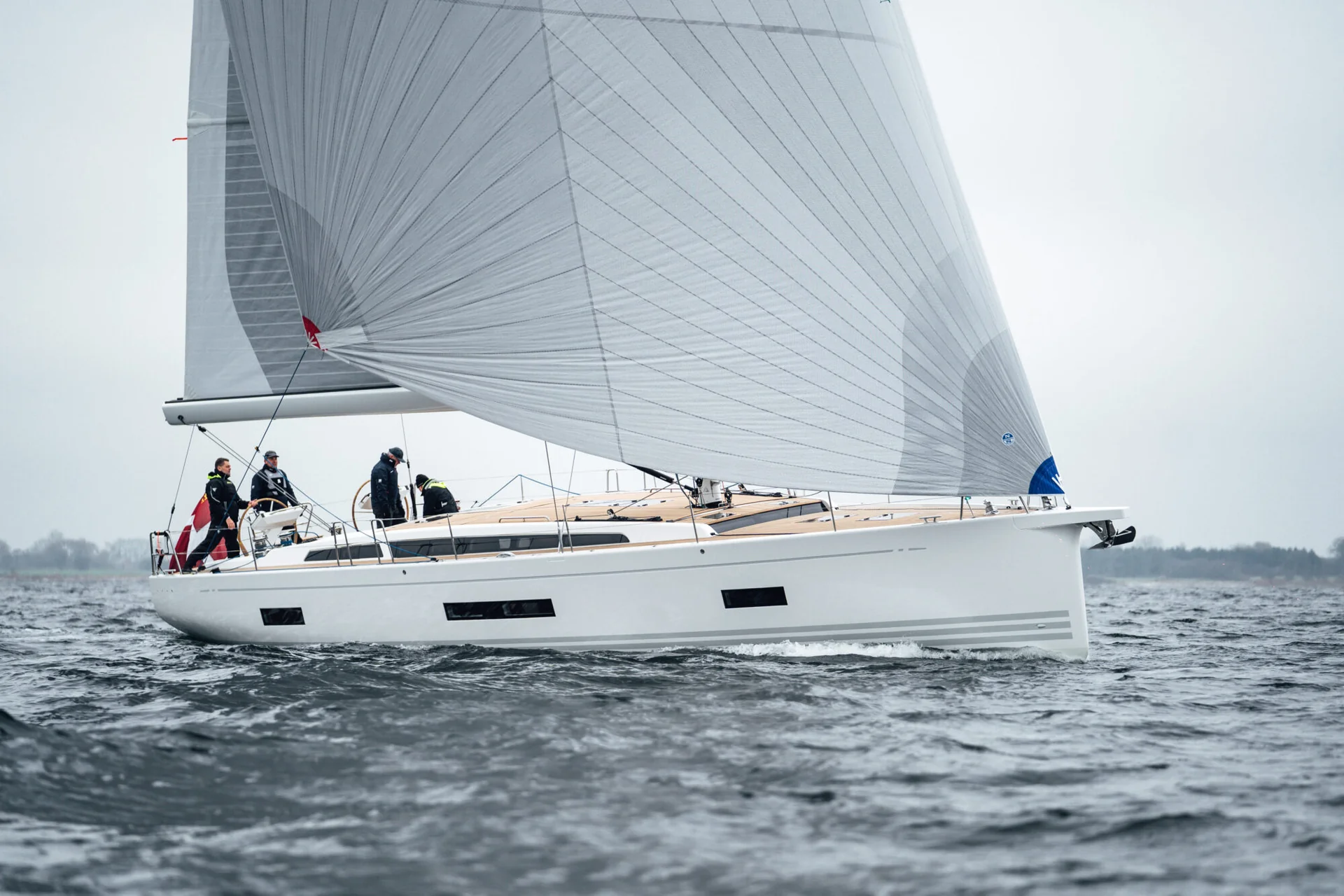
CRUISING INVENTORY RECOMMENDATIONS FOR LIGHT AIR
INVENTORY RECOMMENDATIONS FOR LIGHT AIR CRUISING
Top Picks, New Additions, Rigging and Tuning Tips
📸 Amory Ross / North Sails
Being prepared for whatever Mother Nature serves up is key to maximizing your cruising adventures. Our cruising experts share their inventory top pick, which sails to consider adding and light air rigging and tuning tricks.
An all-purpose cruising gennaker is a great first step. It offers a broad range of horsepower and can be used for higher and lower angles off-wind. Cruising gennakers are great for both tight reaching and broad reaching.
The Helix Furling Gennaker is North’s new option that is a reliable, top-down furling sail. The Helix Furling Gennaker is lighter weight and meant to be furled, providing easy, accessible horsepower that isn’t problematic. Most cruisers don’t sail upwind as often as they sail off-wind, which is why gennakers have become more popular and highly recommended as the perfect all-around sail choice.
Code sails are another great inventory option for more experienced cruisers. Code Zeros and G Zeros offer an extensive amount of power, which a lot of cruisers don’t realize until they’ve sailed with one.
The convenience of a full-batten mainsail outweighs the performance. It’s a quick option for boats with a lazy jack set up so at the end of your sailing day, you come in, simply let the halyard go and secure it to the boom. Enjoy your cocktails sooner! Full-batten mainsails also offer more support when it comes to sail shape. With standard cruising mainsails there is more time at the end of your day making sure your sail is put away properly. Keep in mind, your local North Sails service team can retro-fit any cruising mainsail with battens to help extend the life of your sail, improve sail shape, and make the derigging process quicker and easier. It’s standard to have reef points, especially in cruising sails, which will give more flexibility when it comes to reducing sail area which is key in long distance cruising, especially if weather is expected (or unexpected!).
Foam luffs on genoas also aid with flying shape if you are not ready to add a spinnaker or gennaker to your inventory. Foam luffs have more side to side symmetry and can assist with flying shape, especially for DDW angles.
There are an array of different sail options that can support cruisers of all kinds depending on their needs. Contact your local expert to get help deciding which options may be best for you.
View this post on Instagram
A post shared by North Sails (@north_sails)
Upwind inventory top choices
3Di OCEAN is a great step up from traditional materials. It lasts longer, is lighter weight, has lower stretch, and provides more stability– which makes cruising more comfortable.
NPC CROSS-CUT is the preferred dacron option for everyday cruising. NPC RADIAN would be our recommendation for in-mast furling system setups. When it comes to headsails, a 135% genoa is a great place to start. Keep in mind, no sails want or like to be furled, so 3Di OCEAN is the most robust product that will last the longest and withstand furling.
Our Favorite Inventory Additions
For cruisers willing to leave the comfort of the cockpit, a spinnaker snuffer is the way to go. They are easy to hoist and when it comes time to douse, you simply pull a line, the sock comes down, and it drops on deck. This can be set up too where the sock drops directly into the front hatch.
If you are not up for going to the foredeck, that’s where the furler comes into play. Both options are affordable, but all depend on what you are willing to do and your set up. Furlers are also convenient when you want to leave the sail up for extended periods of time. Simply unfurl or furl whenever you want. External cables come into play depending on the furler you have and the sail type you choose. With North Helix Structured Luff, there is no external cable.
Rig Settings and Tuning
Moving the fairlead forward will allow for a more powerful sail shape. Halyard tension should be tighter in stronger wind and more sea state, looser in flatter water and lighter air. When it comes to weight placement, if you know you’ll be on the same tack for a long time, adjust things below deck accordingly. It’s good to accept a bit of heel, as this helps keep the sails powered up and keeps them full as the breeze dies off. Once you’re set up for speed, all you need to do is keep an eye on the instruments.
Outhaul should be eased, as well as cunningham and vang which controls leech twist. Too much twist in lighter air conditions will de-power the boat.
For downwind sail settings, you can float the tack when you are running. As the wind lightens up, you want the tack lower.
Ease outhaul, cunningham, vang to control leech twist. You don’t want too much twist because that de-powers the boat
Floating the tack is an option:
Running in more breeze you can raise the tack up
Light air day you want the tack a little lower than you normally would
Attachment points for non-conventional rigs: Sometimes the headstay doesn’t go all the way to the bow, so we install a pad eye in front of the headstay and a free floating block. You can purchase a keeper that will keep the tack from floating from side to side. Acts as a bowsprit with a fixed tack point. Tack will sit just above the bow pulpit, 3-4 feet from the headsail and with two snap shackles in the back and the right lines leading back to the cockpit makes an affordable/ simple option.
📸 Amory Ross / North Sails
READ MORE
READ MORE
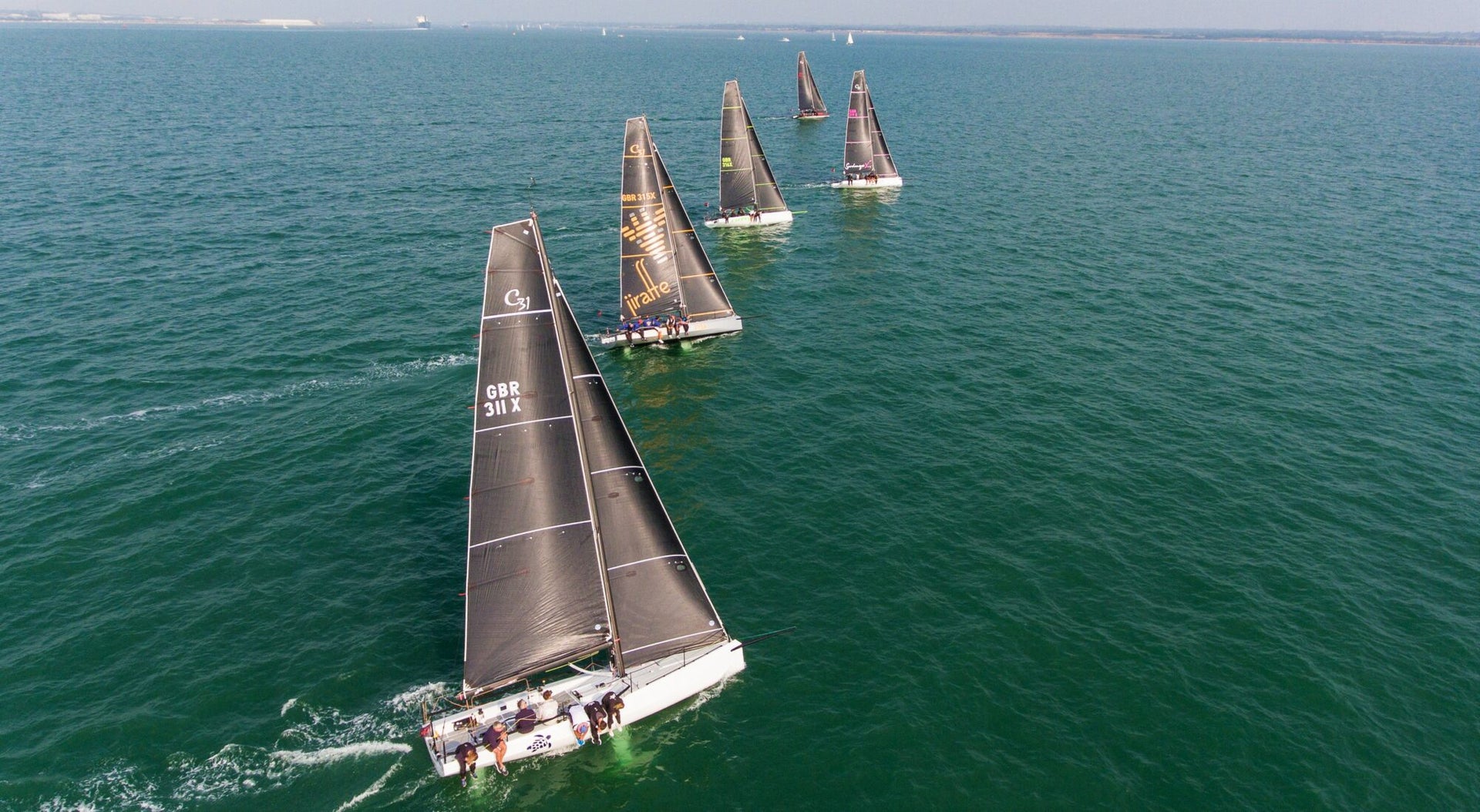
NORTH CLIENTS LEAD THE WAY AT THE CAPE 31 UK NATIONALS
NORTH CLIENTS LEAD THE WAY AT THE CAPE 31 UK NATIONALS
Tricky Wind & Tight Competition on the Solent
📸 Live Sail Die / PKC Media
Having won every Cape 31 event this year, including Cowes Week, the icing on the cake for Russell Peters’ Squirt is to take home the inaugural UK National Championship title. That is precisely what the team of seven did this season, and we are delighted to uncover some inside knowledge from North expert and mainsail trimmer onboard, Pete Redmond.
The busy season of events in the run-up to the Nationals has been the best preparation for the team. Speaking about what they have learned since the start of the season, Pete explains: “We have been working on developing our rig tune which was particularly beneficial in the lighter airs we had throughout this event.’’
“Good boat speed is our key to get out of bad spots or a congested fleet, and the North 3Di RAW 780 upwind sails, paired with our three nylon kites, help us to achieve that speed. We also generally get strong starts which is important, and have good crew handling so can push until the very last second before a maneuver. If we fall behind for whatever reason, we don’t panic.’’
Closest rivals Sardonyx finished just one point behind Squirt on the overall leaderboard after five races. Squirt focused on sailing their own races, and with conditions so light and shifty, heads were out of the boat, constantly assessing the right move to make next.
Congratulations to North clients who claimed the top seven places from a fleet of eight boats. “We have had a good few generations of sails now, and they are constantly getting faster as we learn more,’’ says Pete. “We also produce excellent smooth sails for the smaller boats, which can be seen in this fleet where all the 3Di RAW sails look great.’’
Russell Peters' Squirt, 2021 UK National Champions 📸 Live Sail Die / PKC Media
📸 Live Sail Die / PKC Media
Nifty and Gallvanter battling upwind 📸 Live Sail Die / PKC Media
READ MORE
READ MORE

NYYC INVITATIONAL REGATTA WEATHER
BE PREPARED. KNOW THE WEATHER
Complimentary Forecasting For The 2021 Rolex NYYC Invitational Cup
North Sails is offering complimentary weather forecasts to all teams competing in the 2021 Rolex New York Yacht Club Invitational Cup. Sign up today for your free daily forecast delivered right to your inbox, prepared by weather expert Chris Bedford.
READ MORE
READ MORE

2021 SCOW SEASON - A SUCCESS!
2021 SCOW SEASON – A SUCCESS!
Continuous Scow Product Improvements Deliver Great Results
Podium sweep at the MC Inlands 📸 Hannah Lee Noll
North Sails clients have been winning regattas on the MC, E, A, C Scow, and X Boat circuits for several decades, and just like the past years, we have had another great season to report. We continue to design, optimize our products and, most importantly, share our expertise so that you can achieve your sailing goals at the next regatta.
Just recently, North Sails Scow expert Allan Terhune won the prestigious Inland Championship in the MC Scow posting 4 bullets in the scoreboard. After our internal regatta, it was clear that it was the right time for an update from Scow country.
What Worked at the MC Scow Inlands
Allan credits his four bullets and overall victory at the MC Scow Inland Championship to a lot of homework beforehand. “The reason I was fast enough to win this regatta is that our sail-shape analyst Eric Doyle and I spent six months last winter working with the North design team. We ran numerous two-boat testing, and sail designer Mike Marshall used the collected data to combine with the North 3D design capabilities. The result was two fast sails, the Magnum and the Rocket. The Magnum is for light air, or for heavier teams and anyone who sails two-up. We redesigned our most popular sail, the Z-Max, and then smoothed out the panels. We also updated the cloth to a higher quality RSQ fabric that offers a different feel; it’s not as stiff and rigid.” And, of course, we published an updated Tuning Guide that shares everything they learned about how to set up the new sail.
The Rocket was a spin-off of the Z-One, and Allan says it’s ideal for heavy air and lighter teams. “We made a little shape change in the head, and now it’s much more forgiving. It’s pretty amazing how much difference it makes to get all the little details right.”
“When North Sails take control of a design program, we bring a lot more detail and precision to making sails faster. It’s refreshing, and we’ve got so many new ideas! We’re giving the Scows a higher level of attention and it’s very exciting. Welcome to the North Sails way – Let’s get faster!”
New E Scow 3D-designed mainsail at the Easterns. 📸 Leon Stein
E Scow R&D Wins the Easterns
North is just finalizing three new designs after a similar intensive R&D in the E Scow. After sweeping the podium at the “Easterns,” class experts will release these hot new products this Fall. Second place finishers Chris Bigos and Colleen Obrien had North Sails E Scow experts Jeff Bonanni and Eric Doyle onboard to field-test the new mainsail, jib, and spinnaker. “We were very confident in our boatspeed,” Jeff said after the regatta. “Upwind is where we really excelled, especially when we were in good pressure. Downwind, we jumped lots of boats on jibes and were able to defend going into the leeward gates or finish line.”
“Our sail designer Mike Marshall put in a ton of time helping Jeff get these sails right,” Allan adds. “The whole team was involved. We’re bringing a fresh approach and attitude to this class, and we’ve been trying out different ways to make the boat faster. Meanwhile, if you just want to order new sails from the designs you already know and trust, we have those too!”
Success at the A Scow Inlands
Unlike the MC and E, the North’s A Scow inventory didn’t need as much updating—because the current designs are fast and continue to dominate. “The boat that won the Inlands used a 2-year-old 3Di RAW mainsail, showing the superior quality of the 3Di technology. The A boats are so cool and modern looking! It makes to have modern technology sails on such a high-tech design—they just fit the boat right.”
Fastest Design at the C Scow Nationals
In the C Scow, Cam McNeil won the 2021 Nationals using the same North design that has powered National champs for countless years. “The North I-1 Gold mainsail is a design that C Scow sailors know and trust. It has been the fastest mainsail over the years and it’s still the fastest. Why would you choose a different design?” Cam finished the 6-race series at the Nationals with only 8 points and three bullets. A solid victory over many experienced sailors.
X Boat Designs
Much like the other Scows, the X Boat sails you know and trust are available from North Sails. Our designs have been winning X Boat regattas for years and we are ready to make you SAIL FAST!
Whatever Scow you sail, we hope you had as much fun this summer as the North Sails experts. Please contact your North Sails expert for the fastest sails for your boat.
E Scow Easterns winners Chad Hillyer, Ryan Bailey and Jimmy Kennedy. 📸 Kirby Slack
Cam McNewil, 2021 C Scow National Champion powered by the North I-1 Gold mainsail. Photo courtesy Spring Lake Yacht Club
Allan Terhune, MC Scow ILYA Winner with 4 bullets! 📸 Hannah Lee Noll
A Scow 3Di Mainsails Dominate the Inlands 📸 Hannah Lee Noll
READ MORE
READ MORE
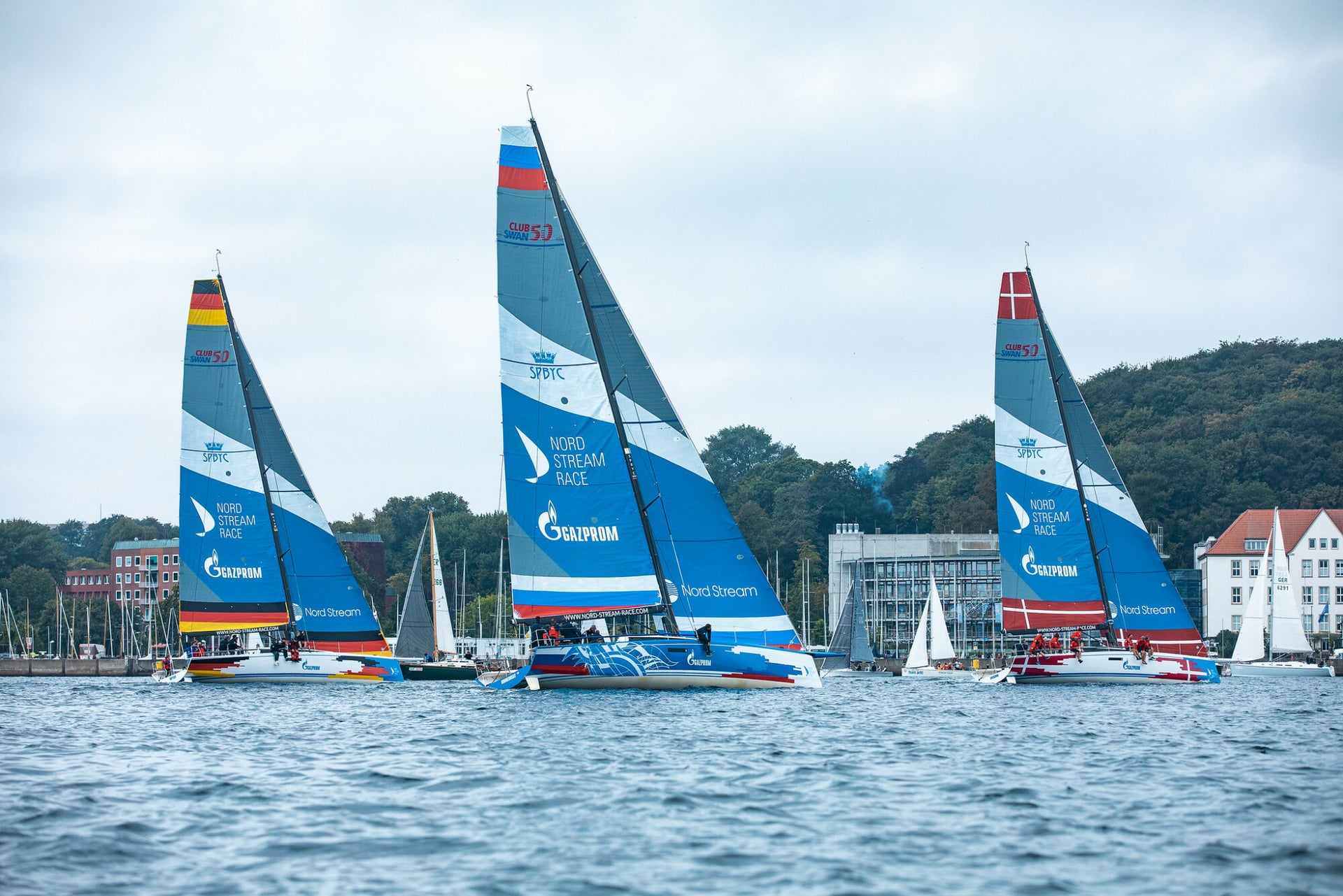
HOW TO FOLLOW: NORD STREAM RACE 2021
HOW TO FOLLOW: NORD STREAM RACE 2021
The longest offshore race through the Baltic Sea sets sail
📸 Nord Stream Race
After many months of planning, re-planning, and making adjustments due to travel restrictions, the Nord Stream Race is finally ready to welcome the 2021 fleet to the starting line. The Nord Stream Race began in 2012 with the mission of “connecting the Baltics through sport.” This 1000 mile race starts in Kiel, Germany, and finishes in St. Petersburg, Russia, with stops in Copenhagen, Stockholm, and Helsinki.
View this post on Instagram
A post shared by Nord Stream Race (@nordstreamrace)
The 2021 race features teams from five countries with 60% of the sails under 30 years old. Teams from Germany, Denmark, Sweden, Finland, and Russia qualified for the event by winning their respective country’s National Sailing League. Each of the five ClubSwan 50s carries a four sail North inventory. Since 2017, North Sails has worked closely with the event to produce identical sets of sails for the entire Juan K-designed fleet.
Here’s how to follow the Nord Stream Race 2021
Save these dates and get to know the teams: https://nord-stream-race.com/en/2021
Read the latest race news and press releases and view images and media on the race website: www.nord-stream-race.com
Follow the fleet with the Nord Stream Race Tracker. The track is love for all four offshore legs and the inshore races at each stopover: www.nord-stream-race.com/en/live2021
Make sure to follow and “like” Nord Stream Race on social media:
Instagram: @nordstreamrace | Facebook: @nordstramrace | Twitter: @NordStreamRace | YouTube: @NordStreamRace
And don’t forget to tag your photos and videos with the official race hashtags: #NSR2021 #ConnectingBalticsThroughSport #NordStreamRace
Nord Stream Race Course Route
READ MORE
READ MORE

DIE INTERBOOT 2021 FINDET STATT
DIE INTERBOOT 2021 FINDET STATT!
North Sails Schweiz freut sich vom 18. – 26. September auf Ihren Besuch bei uns am NEUEN Standplatz 200 in der Halle A3.
Bitte informieren Sie sich im Voraus über die aktuellen Covid-19 Einschränkungen
READ MORE
READ MORE
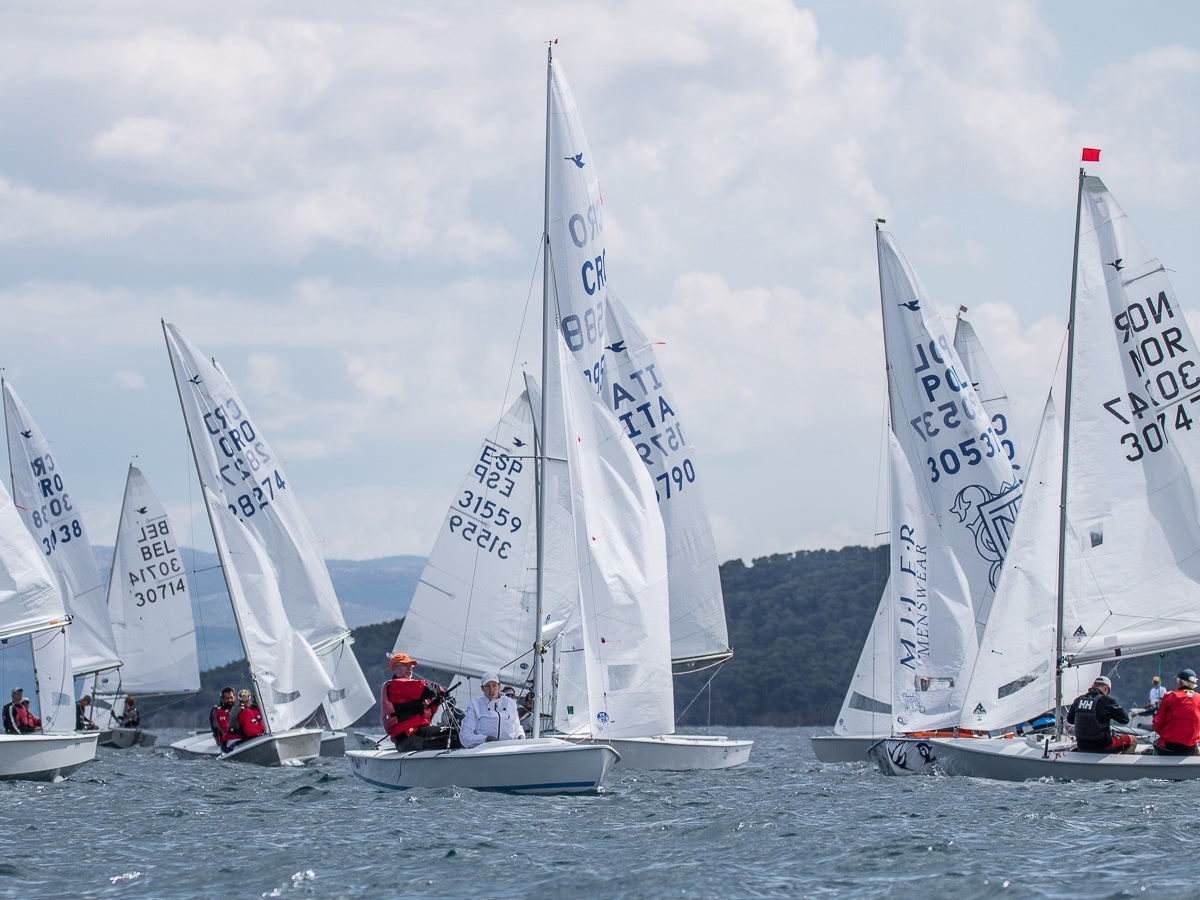
SAMO JEDAN PLOV NA PH ZA KLASU ŠLJUKA
Samo jedan plov na PH za klasu Šljuka
📸 regate.com.hr
Kao što naslov kaže, ove godine nije se proglasio pobjednik Prvenstva Hrvatske za klasu Šljuka. Razlog je što se u tri dana jedrenja uspio do kraja odjedriti samo jedan plov!
Jedriličarski klub Split bio je organizator ove regate koja je ujedno bila uvertira u Europsko prvenstvo klase koje će se jedriti u istom akvatoriju od srijede 1. rujna, pa do subote 4. rujna. To je razlog zašto je ovogodišnje PH imalo u svom nazivu i "otvoreno", jer je za nastup na njemu dozvolu dobilo i mnoštvo posada koje su ovu priliku iskoristile za testiranje uvjeta koji bi ih mogli očekivati nekoliko dana kasnije.
Ukupno je zajedrilo 28 posada, a od čega je 6 bilo iz Hrvatske. Uglavnom je bila riječ o kormilarima koji imaju dosta dug staž u klasi, a u svojstvu flokista moglo se vidjeti i nekoliko novaka, dok je jednoj posadi ovo bio premijerni nastup, a da bi sve skupa bilo zanimljivije i neobičnije za hrvatske uvjete treba naglasiti da je riječ o kompletno ženskoj posadi!
Kao što se već zna, Šljuka je klasa koja nema spolnih i dobnih ograničenja i podjela, pa su se tako i u Kaštelanskom zaljevu mogle vidjeti sve moguće kombinacije po pitanju posada. Nastupile su čisto muške, čisto ženske, mješovite, pa čak i kombinacije u kojima su flokisti još uvijek teenageri i po više desetljeća mlađi od kormilara.
Što se tiče regate, natjecateljski dio trajao je od petka, pa do nedjelje. Organizatori su uložili vrlo velik trud i uz pomoć velikog broja volontera iz kluba izvrsno su odradili sve što je bilo u njihovoj moći. Međutim, vremenske prilike nisu im išle na ruku.
Prvog dana jedrenja stvorili su se uvjeti za jedan start. Postavljeno je regatno polje, pokrenuta je procedura, startalo se i jedrilo neko vrijeme dok se nije morao svirati prekid. A da sve bude zanimljivije cijeli dan je obilježila jaka kiša, po kojoj se i jedrilo to nešto malo organiziranog obilazaka bova.
Drugi dan zapuhala je bura i bilo je oblačno uz malo kiše. Polje je postavljeno i uspješno se startalo. Sve je bilo po planu, ali nevera iza Kozjaka bila je razlogom što se situacija razvijala obrnuto od službene vremenske prognoze koja je najavljivala slabljenje vjetra kako dan bude odmicao. Vjerojatno prognostički model nije mogao predvidjeti takav razvoj na ovoj mikrolokaciji. Uglavnom, kako se nevera približavala tako je vjetar jačao, a to se uskladilo s približavanjem tog plova njegovom kraju. Posljednje jedrilice ulazile su u cilj s vjetrom koji je puhao i više od 20 čvorova.
Nakon toga više nije bilo jedrenja, ali napokon su se dobili prvi rezultati, a da bi regata bila regularna i da bi se mogli proglasiti najbolji morala su se odjedriti još najmanje dva plova.
Sve nade sad su bile usmjerene prema nedjelji. Prvi start bio je predviđen za 12 sati, dok je ograničeno vrijeme za startni signal bilo 16:00.
Flota i regatni odbor na vrijeme su se postavili na željenu poziciju, a naše posade vrijeme do starta nastojale su maksimalno iskoristiti. Naime, bio je angažiran vrlo iskusni španjolski šljukist Damian Borras da svojim savjetima poboljša nastup naših predstavnika.
📸 regate.com.hr
Njemu ovo nije prvi put da je u Hrvatskoj, a zadnji put smo ga mogli vidjeti prije dvije godine kad je u JK Split organizirana klinika čiji je bio voditelj.
Uvjeti po kojima se krenulo u drugi plov Prvenstva bili su slični onima od subote. Nakon kišnog oblaka nad Kozjakom zapuhala je burica koja je držala oko sat vremena. Međutim, nakon što su postavljene bove i odrađena predstartna procedura najbrži su po vjetru u nestajanju jedva uspjeli obići orcu i offset, dok je oko pola flote još jedrilo prvu dionicu kad je sviran prekid.
Nažalost, to je bilo sve jer je ubrzo nastupila totalna bonaca i nije bilo drugog izbora do povratka u Lučicu.
A što se tiče rezultata iz tog jedinog plova, njih možete pronaći na ovom linku. Ukratko, najbrži u subotu bili su Talijani Tinoco - Bracciano, dok su se naši mogli pohvaliti jedino plasmanima u top ten društvo. Na osmom mjestu imali smo posadu Marinović - Zelić, a na devetom mjestu posadu Jerčić - Prosinečki.
Šljukisti su još jednom potvrdili da su promotori jedrenja u najbolje mogućem svjetlu i pokazali svo veselje i užitak koje ovaj sport pruža. Nadajmo se da će se klasa nastaviti širiti u nas i da će se ove jedrilice moći viđati po klubovima kao što je to bilo prije 40 i više godina.
Do tada, ako vas put ovih dana vodi prema Splitu, svratite do JK Split gdje imate priliku vidjeti na djelu, po mnogima jedne od najljepših dvosjeda.
📸 regate.com.hr
Na Europskom prvenstvu očekuje se oko 50 posada, a sve novosti možete pratiti na službenim web stranicama, odnosno na pratećim Facebook stranicama, dok fotogaleriju posljednjeg dana PH možete pronaći na ovom linku.
READ MORE
READ MORE
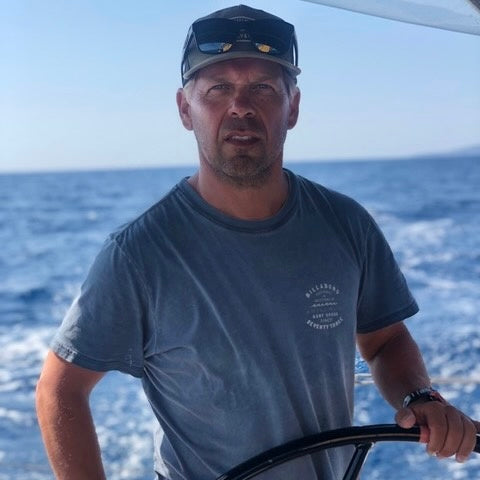
MIKKEL RØSSBERG SLUTTER SIG TIL NORTH SAILS DANMARK
MIKKEL RØSSBERG SLUTTER SIG TIL NORTH SAILS
Den professionelle sejler glæder sig til at hjælpe dig med at finde de rigtige sejl og at udnytte dine sejls fulde potentiale.
Halbtrocken Sailing Team ved ORC VM i Tallinn 📸 Felix Diemer
Mikkel Røssberg har netop sluttet sig til North Sails teamet efter to årtier som professionel sejler på America’s Cup og flere Grand Prix hold. Han arbejder fra sejlloftet i Herlev og supporterer klienter i Danmark, Tyskland og Middelhavsområdet.
NS: "Velkommen til North Sails teamet! Hvornår begyndte du at sejle?"
Mikkel: "Jeg voksede op i en sejlerfamilie og min far var aktiv i den lokale klub, da jeg var barn. Jeg blev faktisk kastet ud i det, da det var lettere end at få fat i en babysitter. Jeg arbejdede mig op fra optimistjolle til Yngling og andre små kølbåde. Da jeg var 18, begyndte match racing at blive stort i Danmark, så det brugte jeg en del år på; først som styrmand og siden som besætning for et par andre hold, deriblandt med Sten Mohr og Magnus Holmberg."
NS: "Hvordan kom du med til America’s Cup?"
Mikkel: "Med Sten og Magnus lå vi længe nummer et på verdensplan med nogle gode resultater, så jeg blev inviteret med til Victory Challenge som sejlkoordinator og trimmer for cuppen i 2003, og sidenhen sejlede jeg med det spanske hold Desafio Espanol 2007 i America’s Cup i Valencia i 2007. Derefter begyndte jeg at sejle TP52, Farr40 og meget andet og det gør jeg stadigvæk."
NS: "Hvilket TP52 team sejler du med?"
Mikkel: "Jeg startede med at sejle med et amerikansk team, Windquest, så havde jeg to sæsoner med Platoon, derefter to sæsoner med det portugisiske team Bigamist. Senere hen havde jeg et længerevarende samarbejde med Gladiator."
NS: "Sejler du andet?"
Mikkel: "Ja, jeg arbejder med en tysk ejer med Team Halbtrocken Sailing Team, der har en Mills 45, det er et ret fedt lille mini Grand Prix program, hvor vi netop har vundet ORC VM i Tallinn. Jeg sejler også lidt match racing og J/70’er med Jens Christensen. Jeg sejler lidt af hvert."
Mikkel Røssberg ombord på Farr40 Siragusawa
NS: "Hvornår begyndte du at tænke på at slutte dig til North Sails?"
Mikkel: "Jeg har efterhånden kendt stort set alle på loftet længe. De seneste tre år har vi snakket lidt mere indgående og nu er jeg klar til at prøve noget nyt. Det er jo et meget velkendt territorium for mig men det er selvfølgelig et nyt job. Jeg har ikke haft et normalt job i mange år!"
NS: "Hvad glæder du dig mest til i dit nye job?"
Mikkel: "Jeg glæder mig rigtig meget til at hjælpe folk med at finde de rigtige sejl til deres både og bruge dem til deres fulde potentiale, hvilket er mit speciale. Den udfordring glæder jeg mig til."
NS: "Hvad bruger du din fritid på?"
Mikkel: "Jeg windsurfer rigtig meget, så jeg glæder mig til at se hvad North Sails kommer med af nyt der. Jeg kan også godt lide at spille golf, jeg står meget på ski og cykler en del… bare være udenfor. Og jeg elsker at sejle en tur med min kæreste Mia. Jeg kommer jo fra en sejlerfamilie, så for mig har havet har altid været det bedste sted at være."
READ MORE
READ MORE
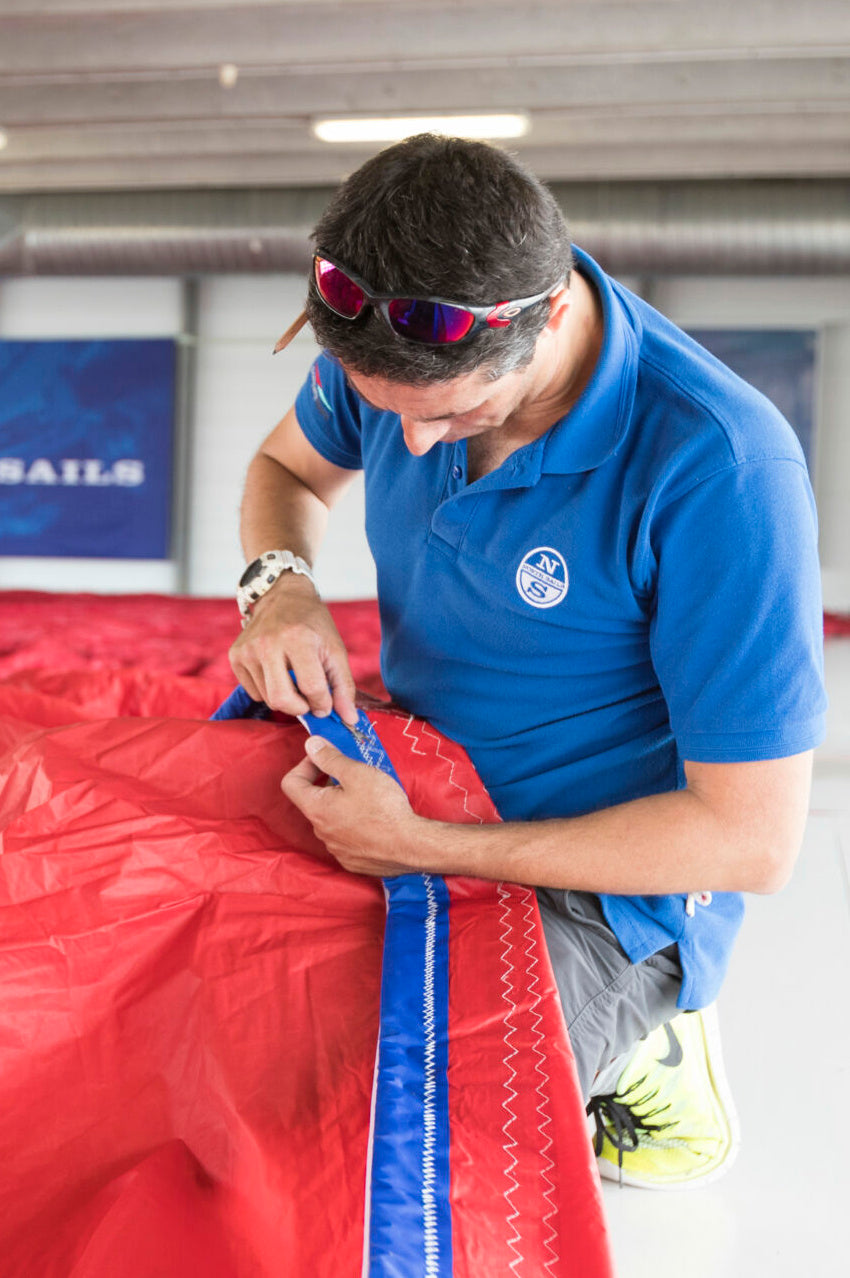
UNE ÉQUIPE AUX PETITS SOINS POUR VOS VOILES
UNE ÉQUIPE AUX PETITS SOINS POUR VOS VOILES
Une équipe aux petits soins pour vos voiles : avec la fin de saison qui approche, renseignez-vous sur notre service d'enlèvement à bord pour que l'hivernage de vos voiles se passe le mieux possible ! Notre équipe vous les ramènera sur votre bateau dès le retour des beaux jours.
Faire un bilan de votre inventaire de voiles, dresser la liste des travaux d’hiver à effectuer, planifier le stockage pour l’hiver et la mise à bord au printemps prochain : nous sommes là pour vous ! Nos services hivernaux à la carte sont à votre disposition pour prendre soin de vos voiles et augmenter leur longévité. Pour toutes les marques de voiles, nous vous proposons 2 options : 1) un contrôle complet “Certified Service” gratuit de vos voiles, quelle que soit la marque. Pour cela il suffit de les amener à la voilerie (en les déposant 24/24 dans notre SAS sécurisé à l’entrée de la voilerie). 2) un forfait premium comprenant l’enlèvement quelle que soit votre région par nos commerciaux, le contrôle complet “Certified Service”, le stockage durant tout l’hiver, et la mise à bord au printemps : vous ne vous souciez de rien, on s’occupe de tout ! Afin de répondre au mieux à toutes vos attentes, découvrez également tous nos services sur mesures, conçus spécialement pour vous. Appelez-nous au 022 782 32 22 pour avoir plus d’infos ou prendre rendez-vous avec l’un de nos experts.
READ MORE
READ MORE
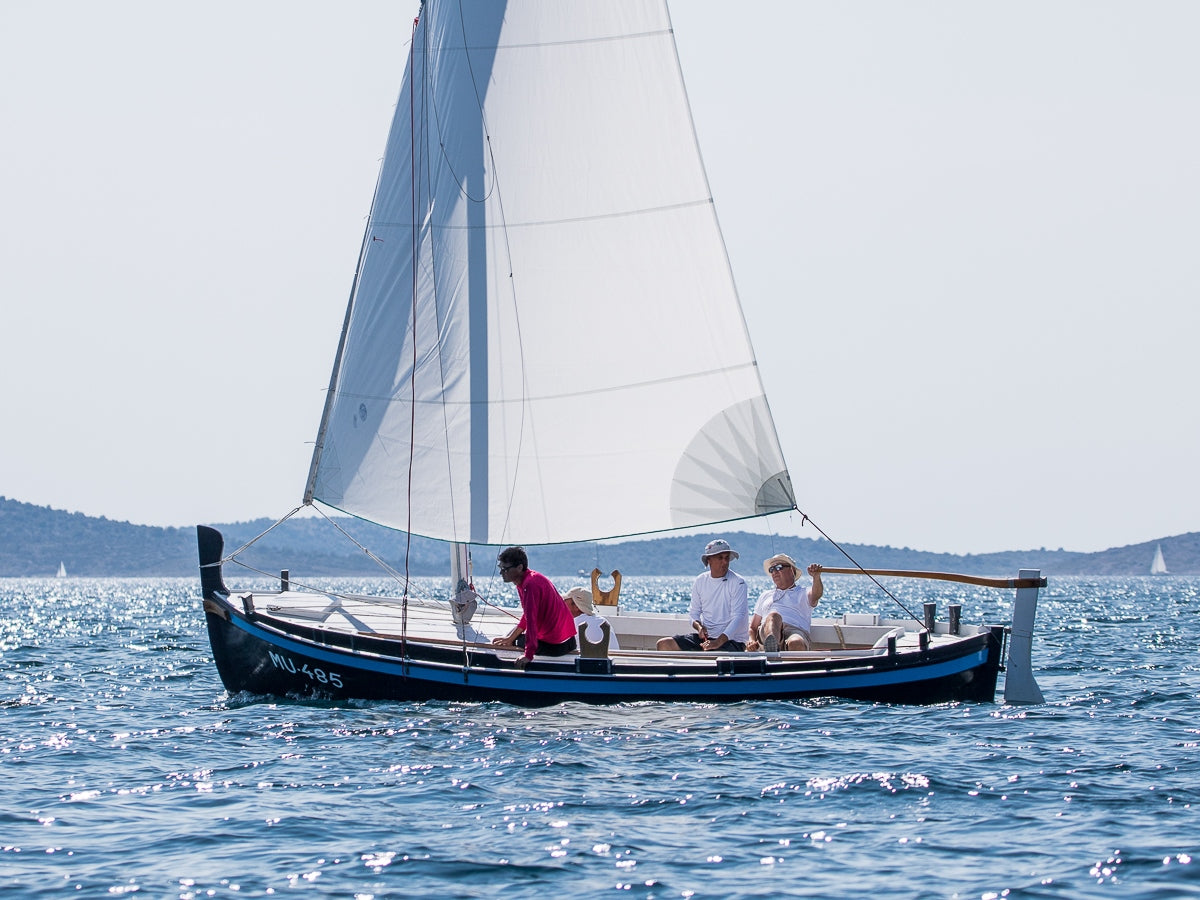
SIROTICA S NS JEDROM NAJBRŽA NA BURTIŽU 2021
Sirotica s NS jedrom najbrža na Burtižu 2021
📸 regate.com.hr
U nedjelju 22. kolovoza odjedren je 14. Burtiž, regata tradicionalnih barki s latinskim idrom, a koju je ove godine organizirala Ekološka udruga Šepurina. Sudjelovale su 33 gajete, leuta i kaića, a pobjedu je s nevjerojatnom prednošću odnijela gajeta Sirotica.
Vremenski uvjeti koji su vladali na regatnom polju ispred Prvić Šepurine bili su pravi kasnoljetni, puno sunca i lagani maestral, tako da se moralo jedriti na nešto kraćoj ruti nego inače. Ovog puta sve se odigravalo u malom trokutu ispred samog mjesta Šepurina, a Regatni odbor se poslužio bovama da definira područje jedrenja.
Start je postavljen ispred starog porta i startalo se "na lancanu". Sidra su bila bačena točno u smjeru zapada, pa je start bio u malo laškiju orcu, ali s obzirom na maritimne karakteristike ovih jedrilica neke su već tu morale značajnije otpasti od kursa. Uglavnom, svi da bi stigli do prve bove, koja je bila postavljena u smjeru Logorunskih vrata, morali su napraviti bar dvije vire.
Nakon njenog ostavljanja lijevim bokom jedrilo se s vjetrom u pola krme u smjeru jugoistoka prema punti Gaćice, otoka Tijata. Tu je bila postavljena druga bova koju je također trebalo ostaviti lijevim bokom, te s vjetrom u bok odjedriti do cilja ispred Šepurinske nove rive.
S obzirom na lagani vjetar, koji je puhao brzinom odo oko 5 - 7 čvorova, bolja pripremljenost barki i iskustvo posada najviše je dolazilo do izražaja u postizanju boljih pozicija. Već od početka vodstvo preuzima jedna od najtrofejnijih gajeta u ovom akvatoriju, riječ je o Sirotici. Posada Damira Čorkala prva obilazi bovu od orce sa značajnom prednošću, a u etapi niz vjetar ta razlika se nastavila povećavati, da bi kulminaciju postigla u posljednjoj etapi kad je u cilj ulazila dok je prva pratnja bila tek u prvoj polovici ove posljednje etape. Ekipa Sirotice regatu je odjedrila za manje od sat vremena, dok su najsporiji za njima kasnili i po sat vremena.
📸 regate.com.hr
Startali smo po sredini, jer smo vidjeli da je u jednom i u drugom kutu bilo dosta gužve. Mislili smo da ako se izvučemo kako treba, na pravu stranu, nema više problema.
Tako da smo start odradili kako treba, malo nam je sidro podoralo, ali imali smo čisti vjetar i brzo smo se izvukli.
Brod je išao lijepo u vjetar, brzina nam je bila stvarno dobra. Već nakon prve vire vidjeli smo da se odvajamo i na bovu smo stigli s već dobrom prednošću. Okrenuli je i tad je bilo sve manje više gotovo.
Kad se sve kritički pogleda mogu reći da nismo imali niti jednu grešku, osim što nam je sidro podoralo, a tu ne možemo ništa.
Kako smo na startu bili u sredini, u čistom vjetru mogli smo startati komodno, nije bilo nikakvih poklapanja, odabrali smo pravu stranu i to je bilo to.
Damir Čorkalo, gajeta Sirotica
Situacija sa sidrom posade Sirotice je jedna od realnosti koja se dešava na startu ovakvih regata, kao što se ponekad desi da sidro zapne na dnu i da se ne može izvući. U tom slučaju dozvoljeno je da ga se ostavi na dnu, naravno, označeno nekom bovicom ili pajetom i nakon ulaska u cilj posada se na miru može uhvatiti u koštac s njegovim oslobađanjem.
Ovo je zanimljiva situacija, jer ako je na provi član posade koji dosta eksplozivno može obaviti posao povlačenja po konopu, onda je donekle i poželjno da sidro zapne na dnu, ali u tom slučaju posada mora vrlo brzo reagirati u smislu ostavljanja oznake za pajet i odustajanja s pokušajima za njegovo izvlačenje.
Suprotna situacija je ako sidro podore i ako se brodu ne može dati odgovarajuća početna akceleracija. A najgori je scenario, najčešće realiziran kad je flota velika, ili ako je lancana kratka, da se isprepletu sidreni konopi.
U svakom slučaju, može se reći da je ovo jedan od najkritičnijih trenutaka regate tradicionalnih barki i ako reakcija posade nije dobra i brza teško se kasnije može nadoknaditi nastali zaostatak, u principu nešto slično startu formule 1.
Što se tiče gajeta, poredak na postolju bio je sljedeći:
Sirotica - MU 485 - Damir Čorkalo
Godulica - MU 229 - Krešimir Papeša
Baba Tone - MU 612 - Dario Filipi
Treba istaknuti da je Godulica bila i trećeplasirana u generalnom proetku.
Posebno osvježenje ove regate bila je mlađahna posada na kaiću Marinka. Poznavaoci prilika u Latinskom idru znaju da je to kaić obitelji Frop i da je s njim osvojeno mnoštvo nagrada na ovim regatama, pa tako i Burtiž 2019., a ove godine na njemu je jedrio kadetsko/juniorski dream team iz JK Split. Nekoliko njihovih optimista i laseraša preuzelo je argolu i škotu te vrlo dobrim jedrenjem stiglo do drugog mjesta u generalnom plasmanu.
📸 regate.com.hr
S obzirom da im je ovo bila prva samostalna regata ovog tipa trebalo im je malo vremena da se snađu sa startom, ali nakon toga dolaze na svoje. Dobrim čitanjem regatnog polja malo po malo prolaze između većih gajeta i leuta, te prestižu jednog po jednog, da bi na kraju u cilj ušli par metara iza Lipe moje, plastične gajete koja inače jedri van konkurencije jer nije izgrađena tradicionalnim tehnikama i materijalima.
Kaića i leuta inače na svim regatama latinskog idra ima značajno manje nego gajeta, pa je samim tim uspjeh ove mlade posade tim veći, a evo tko se još s njima popeo na postolje:
Marinka - MU 906 - Šime Bosna Rusković
Mali plavi kaić - Nikola Burtina
Zadnji - VD 180225 - Jakov Cvitan
S obzirom na lagani vjetar, teški leuti nisu imali nekih posebnih šansi za plasmane na vrhu, kao što se zna desiti na vjetrovitijim regatama. Međutim, cijela flota je uspješno završila regatu, pa tako i svi prijavljeni leuti, a njihov poredak bio je ovakav:
Palma - ŠB 4166 - Đorđe Ljuba
Gušte - MU 85 - Tonko Skračić
Bažokići - MU 8 - Ivan Šikić
📸 regate.com.hr
Iduća regata bit će u nedjelju 29. kolovoza s početkom u 15 sati i to ponovno u Betini, ali ova nije u standardnom touru, jer jedino za nju ne vrijedi pravilo "1.6" koje je objašnjeno u prethodnom članku. Ovo je regata koja je otvorenog karaktera i nema nikakvih ograničenja po pitanju površine jedrilja, duljine lantina itd, a posebnost joj je i to što je start leteći i jedri se isključivo oko bova.
Pa ako vas put nanese ove posljednje kolovoške nedjelje na otok Murter imat ćete prilike uživati u još jednom atraktivnom tradicijskom sportskom događaju.
📸 Damir Čorkalo
Nakon Betinske Vanka škvare slijedi posljednja ovogodišnja regata Latinskog idra, tradicionalna Za dušu i tilo koja se za blagdan Sv.Mihovila organizira u Murteru.
READ MORE
READ MORE
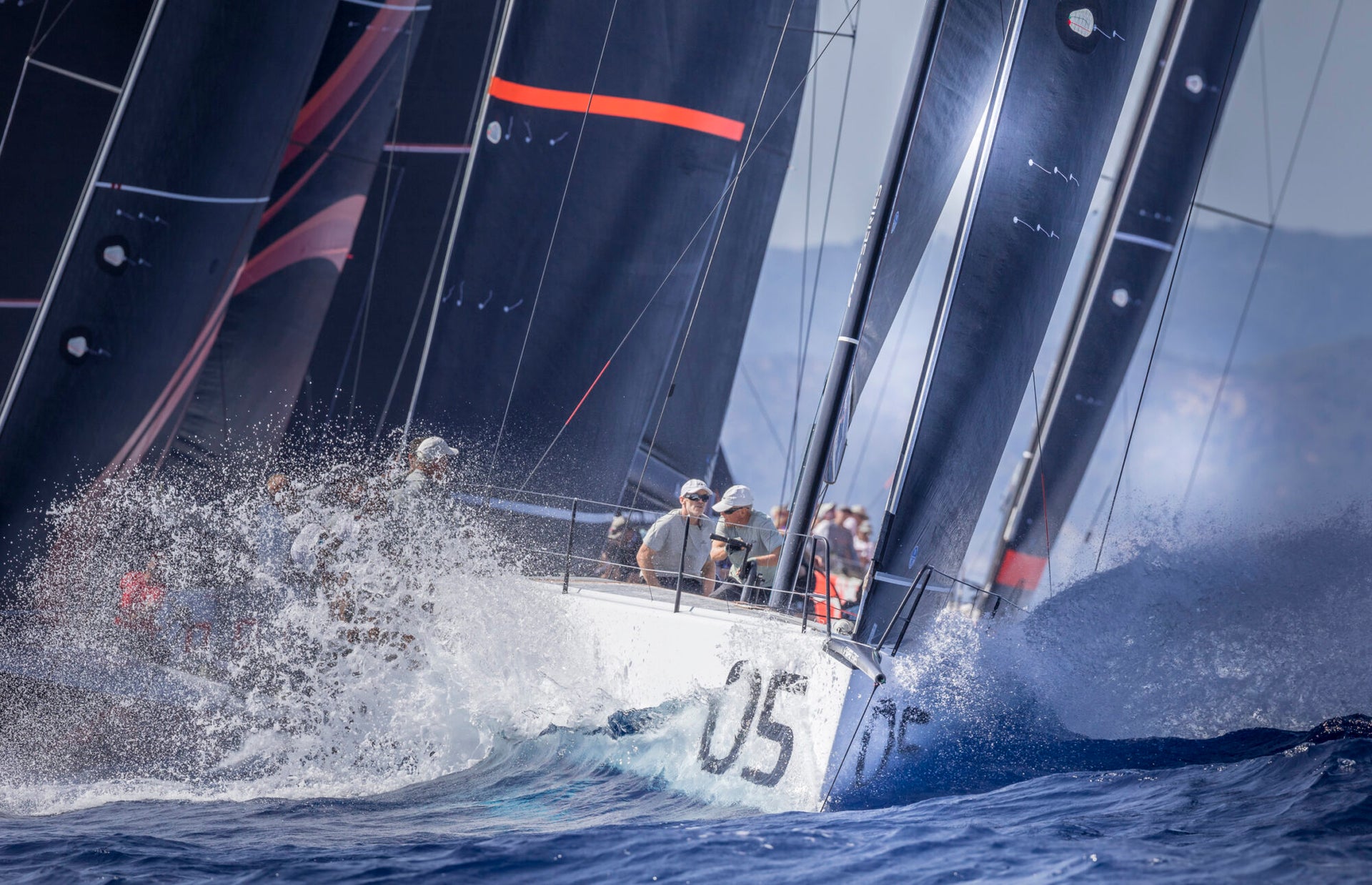
THE 52 SUPER SERIES KEEPS NORTH SAILS IN CONSTANT DEVELOPMENT
THE 52 SUPER SERIES KEEPS NORTH SAILS IN CONSTANT DEVELOPMENT
Did you know that many times the latest advancements for North 3Di are tested on the TP52s?
📸 Nico Martinez / 52 Super Series
The 52 Super Series is known as one of the most competitive circuits in the sport and for North Sails, it keeps us on top of our game.
This week, 16 TP52s are in Puerto Portals, Mallorca, re-igniting the circuit’s fierce competitive spirit after an 18-month Covid hiatus. The special showcase event brings together 9 Super Series circuit regulars, plus 7 guest teams for the 20th Anniversary Invitational. The entry list is a quick lesson in over two decades of class history.
It’s well documented that events like the America’s Cup and Ocean Races are multi-year intensive development cycles that return an influx of technology back into North Sails. What’s less obvious is the constant evolution and refinement of the North Design Suite and development of our top-tier products that results from the 52 Super Series.
North Sails Grand Prix leader and Bronenosec mainsail trimmer Paul Westlake comments: “North Sails’ success in the class boils down to two elements; our people and our product. Similar to the America’s Cup, each of our 52 teams has a North Sails designer dedicated to their program. At the end of each season, we collect feedback from the teams, learn from their experiences, review our baseline designs and structures, and ultimately, incorporate that into our seasonal development cycle.”
📸 Nico Martinez / 52 Super Series
Many of the latest advancements for North 3Di were first tested on the TP52s, and 3Di RAW is a direct result of development within the Super Series. This minimum weight, maximum performance sail material has seen a lighting-speed engineering evolution over the last three seasons.
“The 3Di RAW structure has taken major steps through the evolution of RAW 870 to RAW 880 in 2018-19, and now the latest: RAW 890, which debuted in Cape Town last season,” Westlake explains. “Our focus is on increasing modulus (resistance to stretch), reducing weight, and at the same time extending the racing range and lifespan of each sail. Sail buttons are like gold in this class!”
The Super Series boats are built within strict tolerances, so winning programs demand sails capable of the smallest gains in boat speed. Mickey Ickert is North’s lead sail designer for the 52s, and with decades of experience, he is no stranger to continually advancing the performance of the sails supplied by North.
Ickert explains his thought process: “Would the boat be going faster if the jib was flatter or fuller? How might we expand the range of the sail? Our design tools can help in making these decisions. The higher end flow predictions give an idea of what direction the combined system of the boat, the hydro, the aero, and the sailing team want to go.”
Luckily for Ickert and his design group colleagues, they are able to combine the world’s highest performance sail material with modeling powered by the North Design Suite. This custom-built software makes it possible to create shapes that will exactly match the finished sail. “Our tools are very, very accurate in terms of predicting the loads and resulting flying shapes we’ll have on the water,” Ickert says. That gives designers the confidence to create a sail with a wider range of application. “One jib and one mainsail that deform themselves into the optimum as you go through the wind range. That’s the holy grail, not the reality, but you can push the envelope to it.”
Of the nine boats competing in the 2021 season, seven have chosen North as their sailmaker. This is a testament to industry- leading technology and tools, and also to the North Sails team. In total, six sail designers support the Super Series program year round. With Ickert as the lead, the design group has made a concerted effort to work as a team, because that will raise the game of all North-supported teams.
“It’s a privilege to work with these owners and their teams,” explains Westlake. “ We know they have a choice of sailmaker, and that motivates us to improve our tools and product and lean into the expertise of sail designers like Mickey. We have a lot of trust built up with these teams, and while we always strive to advance and improve their results, their feedback pushes us to be more aggressive with development. In the end, everyone wins.”
Learn more about the 52 Super Series and follow along with the 2021 season on https://www.52superseries.com/
📸 Nico Martinez / 52 Super Series
READ MORE
READ MORE

ONBOARD WITH 3 WINNING ROLEX FASTNET RACE TEAMS
ONBOARD WITH 3 WINNING ROLEX FASTNET RACE TEAMS
A Conversation with North Sails UK
📸 Carlo Borlenghi/Rolex
Finishing the 690 nm Rolex Fastnet Race is an achievement in itself, but racing with just one other crew member takes bravery to the next level. North Sails designer Kelvin Matthews joined Tim Goodhew on the SunFast 3200 Cora, and the pair claimed the UK Doublehanded Offshore Series overall season win.
"It is daunting to know you will be sailing a large part of the race alone on deck, but we were excited more than anything," explains Kelvin. "We have been sailing well together this season, and we knew this race was the big one, both in terms of our overall season and the legendary race itself. Our priority was Class 4; you can only really focus on similar-sized boats sailing a similar race to you. Of course, we kept a close eye on our rivals in the doublehanded class, especially those in the running for the overall season trophies, which can be won or lost in a big race like the Fastnet.''
"We used our new 3Di RAW 360 mainsail reef for the first time,” he continues, “which was exceptionally tough and fast in the strong conditions at the start. It is quite a shallow reef which meant we still had to trim the sails correctly and be very active on the helm, but it worked perfectly under 28 knots, producing plenty of power to get over the steep waves. Although, admittedly, we had too much sail up through the Hurst Narrows with gusts of 35 knots!"
The finish was pretty intense, he says. “We lost a lot of places at the Isles of Scilly when the wind died, and we were determined to make back the losses. We are fast downwind and got ourselves back into the race by Alderney. Gybing around the south side of Alderney as the sun was rising was a special moment.”
The pair are now looking forward to the Castle Rock Race in September, and hoping for light airs “which have been good for us so far this year.” The race marks the final race in the RORC Class 4 series.
📸 Solent Sail Photography
The TP52 Tala, owned by David Collins, won IRC Zero and finished 8th in IRC Overall. Main trimmer and North expert Pete Redmond says he’s drawn to offshore racing because a longer race presents more opportunity to make tactical moves—and, where conditions allow, really "let loose and send it.’’ He says the highlight of the race was "rounding the Fastnet Rock in bright sunshine and light winds, allowing us to get the closest we've ever been as all other times I've been around the rock it has been horrendous weather." In contrast, Pete adds, "the first 24 hours were the hardest; huge sea state created by a strong wind against tide. We knew it would be like that, so we were mentally prepared and just had to deal with it for a while. Our sails handled the conditions excellently, and we didn't have any sail damage all race."
Pete says the team’s first priority was to win their class and then see what happened with IRC Overall. "Oystercatcher, a new 52-footer, was just behind us, and she kept us pushing. Up next for us is the Rolex Middle Sea Race in October, followed by the RORC Transatlantic Race in January 2022."
📸 RORC/Paul Wyeth
North expert, tactician, and watch leader Mike Henning raced onboard James Neville's INO XXX, which won IRC One but lost the IRC Overall top spot to Tom Kneen’s North-powered Sunrise. Despite an after-dark arrival into Cherbourg, a crowd of locals came out to congratulate the crew on finishing—and holding the overall lead at the time.
Without very many boats close to their ratting, Mike said they had to trust themselves and focus on their own race. "We knew we needed to sail our own game plan, utilizing what the wind and tide were doing at the time," he says.
"Rounding the Scilly Isles and setting the MHO with a jib and GS was the highlight of the race, very much needed after so many days slogging upwind. We surfed up to 20 knots and knew we could be finishing that day, so pushed 110% to the end. With 0-35 knots, we used every sail on board at some point in the race. We started on a reefed mainsail and a J4, and the mainsail performed excellently across the wind range."
Mike says he loves the endurance challenge of offshore racing. "You can't win the race on the first day, but you can certainly lose it. Teamwork and understanding between everyone on board is key, and really rewarding when everyone gels better than you could have anticipated. We are looking forward to coming together again for the Rolex Middle Sea Race."
📸 RORC/Paul Wyeth
READ MORE
READ MORE
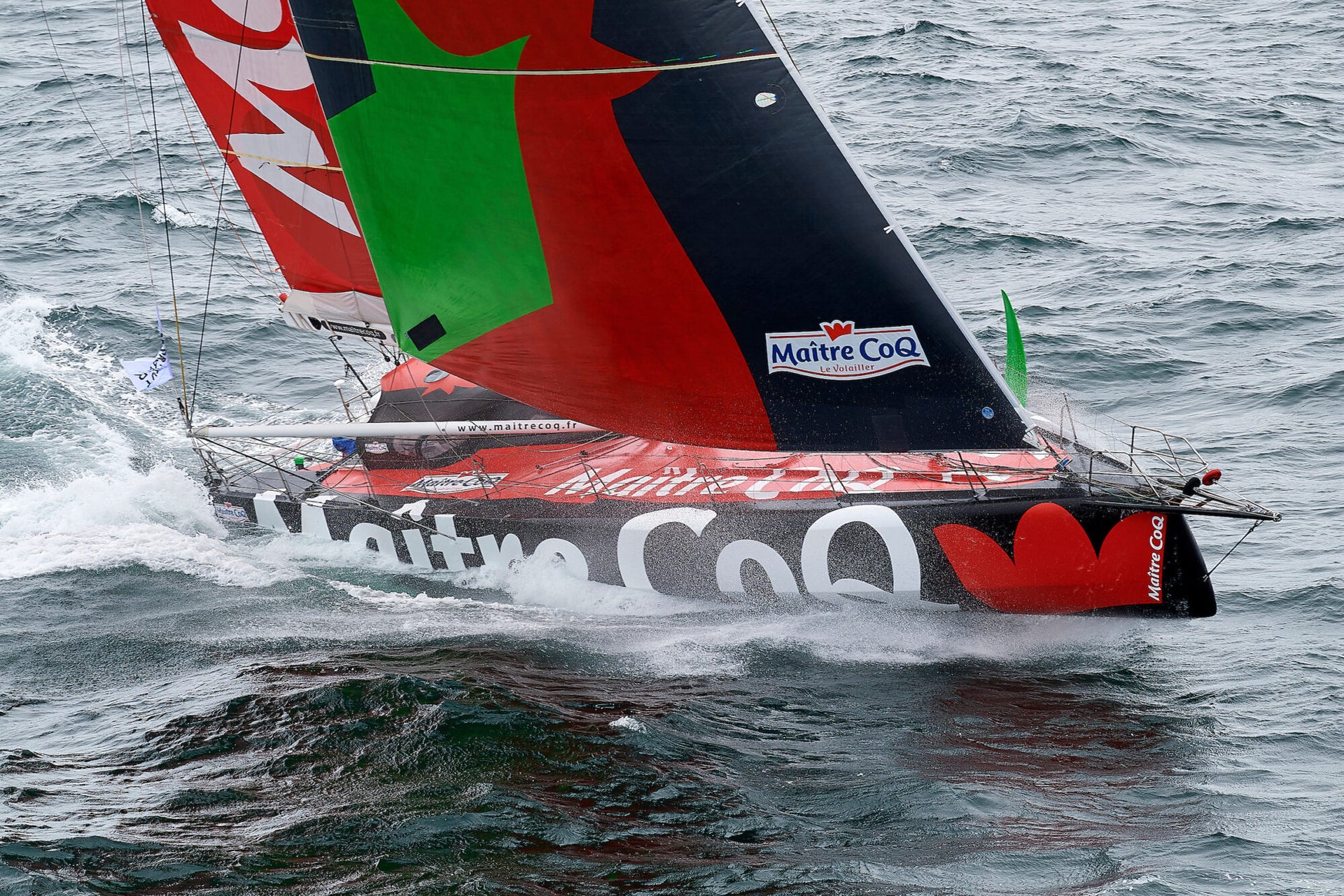
NOT ALL SAILS ARE CREATED EQUAL
North 3Di is an indispensable building block of championship projects. JB Braun and the senior North sail designers team up to explain how they deliver custom solutions using 3Di technology.
READ MORE
READ MORE
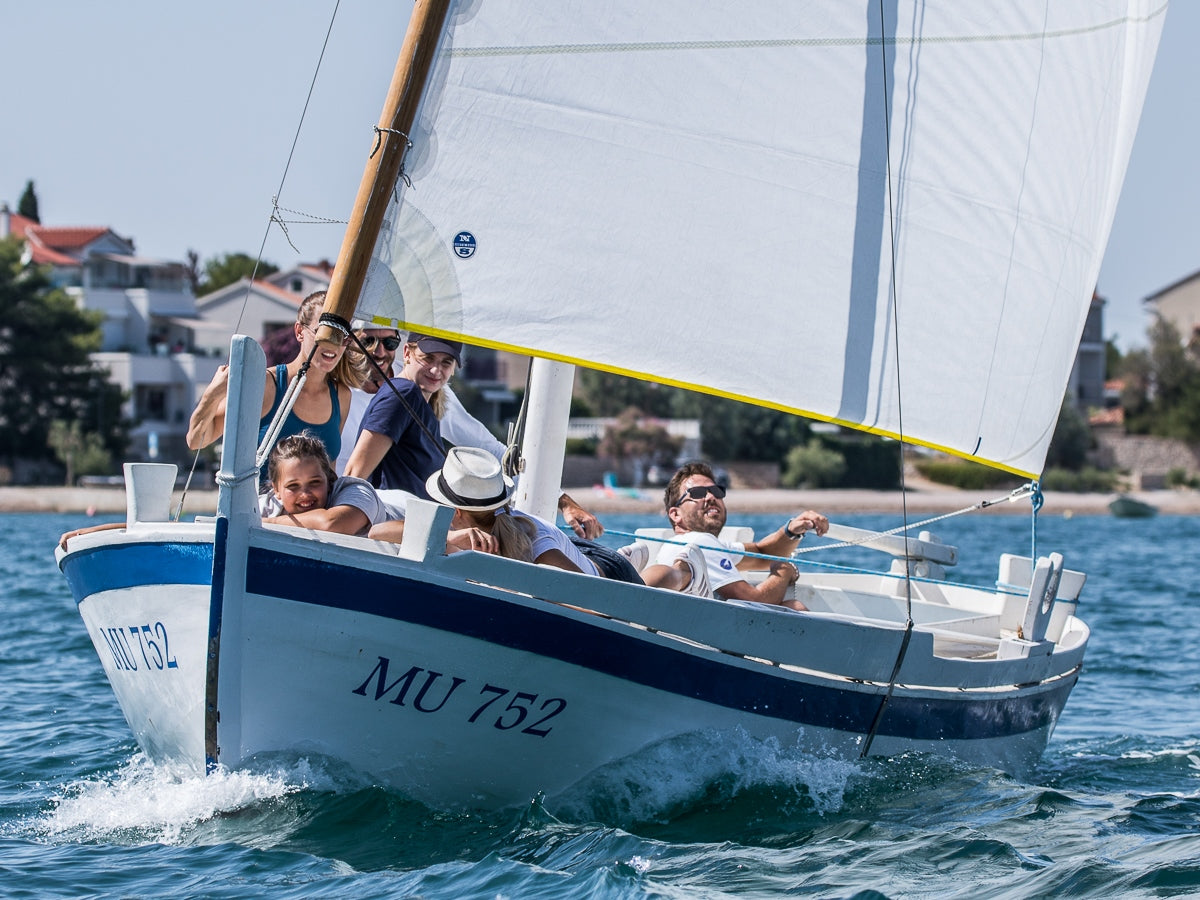
TRTUŠA I NS NAJBRŽI U BETINI NA REGATI ZA DUŠU I TILO
Trtuša i NS najbrži u Betini na Regati za dušu i tilo
📸 regate.com.hr
Treća ovogodišnja regata Latinskog idra na otoku Murteru jedrila se u nedjelju 15. kolovoza u Betini. Uglavnom je sve bilo po prokušanom organizacijskom receptu, a razlika u odnosu na prethodnih par godina, kao i na sve prethodne ovogodišnje regate iz ovog ciklusa, bilo je to što je vjetra bilo na kapaljku.
Sve vezano uz 19. Regatu za dušu i tilo odvijalo se na Betinskom mulu, na kojem su sve barke i bile vezane. Tu su se obavljale prijave, marendavalo se, pjevalo, a u 14 sati odrađen je i sastanak kormilara, a sat kasnije krenulo se s jedrenjem.
Ove godine puhao je dosta lagani jugozapadnjak, a kako je prvi dio regatnog polja smješten odmah uz sjeveroistočnu obalu otoka Murtera, tako je taj južin bio i još slabiji nego na otvorenom s druge strane Murtera. Sudjelovalo je oko 40 kaića, gajeta i leuta, a ruta na kojoj se jedrilo bila je nešto drugačija nego inače. Ovog puta glavne oznake su bile bove postavljene na dva mjesta. Prva je bila u Plitkoj vali, klasičnoj poziciji i na osnovnoj ruti, a druga je bila postavljena ispred Prosike.
Start je bio s krmama vezanim na rivu i sidrima bačenim ispred gajeta, pa se prvo jedrilo prema Plitkoj vali, zatim prema Prosici, a nakon toga oni koji nisu odustali od jedrenja vraćali su se u Plitku valu nakon koje su jedrili prema cilju.
Kad se uzme u obzir smjer vjetra i pozicije bova može se reći da je ovo bila skoro pa i regata jedrena u štap polju. Podjednako su se jedrile i orca i krma. To je bilo dosta dobro s jedriličarske strane, jer je zahtijevalo taktiziranje u određenim dijelovima, a ne samo puko jurcanje, pa čija barka je brža taj će doći prvi.
S obzirom na neizdašni vjetar na startu je bilo vrlo važno da je član posade zadužen za povlačenje po sidrenom konopu u dobroj formi, kao i da je sidro dobro uhvatilo, a također i da sidreni konopi nisu isprepleteni i da nečije sidro je bačeno preko vašeg.
Ako je to sve dobro odrađeno i nije bilo zaplitanja do prve bove se moralo i viravati, a s obzirom na smjer vjetra slobodno se može reći da su u nešto boljoj poziciji bili oni koji su bili bliže Murteru. Ta pozicija im je omogućavala mnogo dulje jedrenje na desnim uzdama, a kad su morali viravati (ići u burdadu) bili su u prilici kontrolirati konkurenciju. Naravno, sve ovo pod uvjetom da ste dovoljno brzi, poput gajete Trtuša, koja je na kraju i odnijela pobjedu, a koja je upravo i startala s desne strane startne linije.
U ovoj etapi prvi su jedrili relativno brzo, pogotovo u zoni bliže bovi, dok se sporiji dio flote poprilično rastegnuo i oni koji nisu bili u prvim redovima dobivali su još slabiji vjetar. Uglavnom, nekoliko vodećih brodova odjedrilo je i više od pola druge dionice prema Prosici, dok je glavnina pratnje tek uspjela obići bovu u Plitkoj vali.
Ova etapa se jedrila u čistu krmu i u prednosti su bili oni koji su reducirali broj članova posade, te čije barke su lakše i pliće forme, a sigurno je nezanemarivo bilo i to da li su se zaboravili listovi kormila podignuti iz mora, te i na taj način smanjiti otpor jedrenju.
Krma se jedrila po osjetno slabijem vjetru, a u povratku vjetar više nije ni ravnomjerno popunjavao regatno polje, već su se lovili privatni dricevi kao što se i u određenoj mjeri igralo na kartu sreće u izboru lijeve i desne mogućnosti za jedrenje do Plitke vale.
Vodeće jedrilice i dalje uspješno igraju svoju ulogu favorita i sigurno jedre dalje, dok među pratnjom polako kreću odustajanja. Jedan dio sudionika nije uspio dojedriti do Prosike, odnosno procijenili su da možda dojedre do nje, ali da se neće uspjeti vratiti. Odustajanja su se nastavila kako je prolazilo vrijeme, ali vodeći su i dalje imali nešto više sreće s vjetrom i nastavljaju s jedrenjem.
Ponavlja se situacija sa snagom vjetra koji ponovno jača u blizini Plitke vale. U ovoj fazi bilo je važno da li će se izabrati povratak bliže lanterni s lijeve strane kanala ili sredinom, a o detaljnije o tim izborima ispričao ja kormilar pobjedničke gajete Ante Turčinov:
Start je klasika, pogotovo u Betini... ono što kažu da je start pola regate, pogotovo po ovakvo vjetru.
Dobro smo se uspjeli izvući. Krenuli smo s desne strane, s pontona, to nam je standardna pozicija svake godine.
Dobro smo izašli, sidro je dobro zakučalo, mislim da smo najbolje startali... odmah smo napravili razliku i imali čisti vjetar. Tako da smo imali samo voziti brod što brže i stići na bovu u što manjoj gužvi.
Do nje je bila praktički čista orca. Tu smo napravili malu razliku i uputili se prema dolje, prema Prosici, gdje je bila bova od krme.
Cijelo vrijeme nas je pratila gajeta Godulica i Jezerska gajeta Emilija Lapova. To je nova gajeta... u stvari stara, ali obnovljena. Kupljena je u Betini u pokojnog člana udruge Betinska gajeta 1740.
Kad smo jedrili prema dolje mi smo dali malo više prema Betini, da ne bi upali u bonacu ispod Rata, a koja po ovako slabom vjetru može značajno utjecati. Tako smo povukli smo ekipu za nama.
Kako smo sve više ulazili u kanal tako je vjetar sve više slabio, a to je bilo za očekivati, pa smo se do bove praktički dovukli.
Kad smo zaorcali tu su četiri broda bili na hrpi i onda je bila igra živaca jer se vjetar gasio. Tu je bilo najvažnije što kraćom rutom se domoći kraja, uhvatiti se Betine. U jednom moentu doslovno je svatko imao neki svoj privatni vjetar... nekom je došlo po maestralu, nekom po jugu, nekom ništa...
Mi smo se iz te situacije uspjeli solidno izvuči.
Jezerska ekipa je dobila jedan privatni reful s kojim su se uspjeli izvući ispred nas i praktički nas držali u šaci, imali su kontrolu situacije.
Također nam je i Sirotica došla na samu krmu, ali su onda zapeli u nekoj bonaci, a onda se dovukla i gajeta Dišpetoža koja je na kraju bila druga.
Kad smo ušli u piriju između Betine i Tišnjanskog dijela, tu se vjetar ustalio i mi smo čekali priliku da nas Jezerska ekipa pusti, da nas više ne parira. To se i desilo i to im je bila velika greška jer su na kraju zbog toga i izgubili regatu. Pustili su nas da odemo desno. Oni su otišli lijevo i nakon vire i s njihove i naše strane mi smo im napravili prednost od stotinjak metara i došlido bove čisti s dobrom razlikom da možemo mirno doći do cilja.
I tako da mislim da smo na kraju pedesetak metara bili brži u cilju.
A u posadi su bili još Ivan Skračić, cura mi Ana Ježina, sestra Marija Turčinov, nećakinja Tonka Pavičić i prijateljica Eva Vodopija.
U zadnjih par godina mi nekako uvijek idemo u pet do šest u ekipi, nikad nismo ispod.
Jedra su dosta velika i kad gleda netko sa strane rekao bi da ti ne treba puno ljudi, ali kad dođe friški reful brod zagrabi, pa je bitno uvijek imati dosta kila na brodu. A sad da li se radi o 100 kg više ili manje po meni nije toliko bitno, jer važno je da se reful dobro iskoristi i da brod zaveze i da se zapumpa kad treba i to je to.
Ante Turčinov, Trtuša
📸 regate.com.hr
Nastavak ciklusa Latinskog idra trebao bi biti u Prvić Šepurini, ali još se ne zna konačna odluka. Ono što je sigurno je regata "Vanka škvare", koja će se jedriti posljednje nedjelje u kolovozu. Organizira se u Betini i karakterizira je da je otvorenost za sve što posadama padne na pamet, za razliku od klasičnih regata u kojima mora biti zadovoljeno pravilo "1.6". I na kraju ostaje najveća fešta, Murterska regata za blagdan Sv.Mihovila.
A pravilo "1.6" odnosi se na duljinu jedra na lantini i kaže da njegova maksimalna duljina ne smije prijeći broj koji se dobije kao umnožak duljine trupa pomnoženog s koeficijentom 1.6.
U oglasu regate u Betini čak je bilo i objavljeno u Oglasu da će se obavljati kontrola svih prvoplasiranih po pitanju ovog pravila. Svi standardni sudionici su ga bez problema zadovoljili, dok je nažalost mlada Jezerska posada platila danak neiskustva i tu izgubila drugo mjesto, jer im je duljina jedra na lantini bila veća od dozvoljenog. To je bio razlog zašto je na drugom mjestu na kraju završila Dišpetoža, a na trećem Sirotica.
Za one koji nisu upućeni u podjelu na kaiće, gajete i leute, ona izgleda ovako:
gajete - brodovi od 5.5m duljine pa dalje
leuti - brodovi od 7.0, duljine, pa dalje
kaići - brodovi kraći od 5.5m
READ MORE
READ MORE

FAMILY CRUISING: LONG TERM SAILING WITH LITTLES
FAMILY CRUISING: LONG TERM SAILING WITH LITTLES
How to Make that Family Cruising Dream Work
In the fall of 2019, Katrin (“Kat”) German and Warwick (“Wazza”) Kerr left Mallorca, Spain, and sailed to the Caribbean with their three year old son, Kilian. The plan for the family was to spend the winter in the islands and then continue west, eventually circling the globe. Both parents grew up cruising in their native countries (Germany and Australia respectively), and in the pre-pandemic world Wazza could commute to the next pro sailing job from wherever they dropped anchor.
Like so many plans though, theirs had to adapt in the spring of 2020, when COVID-19 shut down the Caribbean regatta circuit and all casual island-hopping. They spent the first several months locked down on St. Maarten, then moved down the chain as individual islands opened up to liveaboards. They were able to ride out hurricane season on Grenada, and by the time they sailed back up to St. Maarten Kat was pregnant again. So instead of heading west to the Pacific, they returned to Europe to settle down in Kat’s childhood home of Kiel, Germany.
With the family of three (soon to be four plus a dog) back in Europe and gearing up for a Bay of Biscay crossing, we were able to catch up with the lively pair. With nearly two years of family cruising experience, we knew they’ve had some great advice for families who haven’t yet made the cruising leap. We also learned about their future sailing plans, which will of course include Kilian and his new sibling.
Family Cruising: Casting off
“You just have to do it,” Wazza insists. “Don’t be afraid. The worst thing that happens is you end up back where you were, which is not that bad.”
Nodding, Kat agrees. “Kids are so adaptable! On our first offshore trip Kilian got seasick, but after that it was never a problem. We always try to keep him busy with arts and crafts, and there’s always sea life to look at, like dolphins and flying fish. And we read a lot of books.” Then she laughs, remembering the final days of their 18-day Transatlantic in 2019. “We really ran out of ideas, and we had only downloaded two kids’ movies before we left! So we just let him watch the same movie, Madagascar, twice a day. He called it the bird movie.”
The only special boat modifications they made to keep a three year old safe and happy was to add netting all around the deck, Wazza says. Kat adds that they put up a leeboard in the salon to wall off a play area. “But that really depends on the boat. And other than that, we really didn’t prepare anything special.”
As for their 3Di sails, Wazza says they’ve been even better than expected. “The original plan was for me to go old school and build some cross cuts by hand, like I did when I was an apprentice. Instead we ended up with 3Di. Now we’re 10,000 miles in, and except for adding a little bit of chafe protection on the spreaders, we haven’t done anything to the sails.
“The staysail is our go-to sail when it is really windy or really rough. Even the genoa shape has barely changed, and it gets a bit of a beating. Much as you try and look after it, you always get into a situation where it’s not a perfect furl. I’d have to go look at a picture and measure it all properly to really see any change in shape.” Chuckling, he adds, “It’s a bit disappointing, in a way; I was hoping to build my own sails! But these are so good, I might never sail with another paneled sail.”
Grenada Getaway
Grenada was the perfect place to ride out hurricane season, Kat says, because they met so many other cruising families. “We spent four and a half months there, because it was the only Island open. And we hadn’t seen any other kids for four months before that.” There was even a Facebook page dedicated to Grenada cruising kids. “They organize so much, like Friday night movie and popcorn night and arts and crafts days. And there’s so many waterfalls and other cool stuff to explore as well.”
And even though they had to constantly modify their plans to stay within CoVID rules, she’s happy that the past year forced them to slow down. “Otherwise our life would have been as crazy as always, with work and cruising…”
“And we were so lucky to experience the Caribbean with so few boats,” Wazza adds. “We were in an anchorage where there’s normally 30 or 40 boats, all crammed in. And now there were only three.”
Return to Europe
With another baby on the way and Wazza’s pro sailing starting up again, life was suddenly too complicated to continue pandemic cruising. They decided to sail the boat back to Europe—but this time without Kat and Killian. “I was super, super stoked for the crossing,” says Kat, who has more ocean miles than Wazza. “But I think flying back was absolutely the right decision.”
Going offshore pregnant, Wazza explains, “is just a step too far. If something did happen, you’re so far away.” He found some crew to replace his family, and sailed the boat back across the Atlantic via the Azores. But he says it wasn’t nearly as much fun as their previous Transatlantic.
“We’d never sailed the boat without each other,” he explains. “Having Kat on board is a lot more stress-free, and it was a bit weird not being with the family. I felt like I was delivering the boat.”
“I tell you, it’s so much more stressful to be on the shore than on the boat,” Kat adds. “I would have much rather been onboard than watching on the web. And we were missing each other! For the past two years, it has been 24/7. And then all of a sudden we didn’t see each other for six weeks, which was a long time for us.”
Learning from Other Cruising Families
Kat says they recently met another couple new to the cruising life who are “like us, half Australian and half German. It was really interesting to talk to them.” Unlike Kat, the woman didn’t grow up sailing, so she’d been learning from other cruising moms via social media. “They were giving each other tips and tricks,” Kat says. “A lot of people post realistic things (not just the ‘social media’ version). And you can also then get in contact with these people.” This other couple plans to join the 2021 Atlantic Rally for Cruisers, which Kat thinks will include about 35 family boats. “With the ability to work remotely, there are many more cruising families than there were ten years ago.”
Even though Kat and Wazza don’t participate in cruising rallies (because they prefer to pick their own departure times to adjust for weather), she understands how people might gain confidence from traveling with a group. And then she repeats a variation of what Wazza has already said about getting started: “Of course, you just have to take the leap at some stage. As soon as you start, you’ll start meeting other families quickly. And that’s such a boost of morale.”
Future Family Sailing Plans
Kat and Wazza are already looking forward to cruising the coastlines of Denmark and Sweden next summer. “I grew up sailing around the Baltic on a Nordic folk boat,” Kat says. “It’s so beautiful when the weather’s nice, and I’m really excited to show that to Wazza. We thought it would be really cool to take a couple of months. Even if he has to go off for a week here or there, I can be on the boat with the kids.”
“It will be nice to see something different,” Wazza adds. ”A lot of people just do the barefoot route, but we’ve got plenty of friends up in Sweden and Denmark and Germany.”
They are also looking forward to kiting, even though Wazza knows he will have to wear a thicker wetsuit than the better acclimated Kat. “The house that we live in is a three minute walk from an amazing place to go kitesurfing,” he says. “And as soon as number two is out, Kat will be back out there too.”
Making fun sailing plans again is what has kept Kat going through this latest life transition: from “the supercool cruising lifestyle” to moving back to her childhood coastline. “I haven’t lived here in so long! We’re gonna give it one winter. See how it goes without seeing sunshine for a few months…”
For anyone still uncertain about taking the cruising leap, Wazza puts it into perspective: “We’re actually more afraid of getting ourselves back into the system and the grind. I’ve said it before, but the worst thing that happens is you end up back where you were, doing what you were doing before, and that’s not that bad.”
READ MORE
READ MORE

PODIUM SWEEP AT THE E SCOW ECESA CHAMPIONSHIP
PODIUM SWEEP AT THE E SCOW ECESA CHAMPIONSHIP
Learn About the New 3D Designed Mainsail Tested at the Event
New 3D-designed mainsail at the Easterns. 📸 Leon Stein
The ECESA Championship “Easterns” took place at Chautauqua Lake Yacht Club with twenty-four teams competing over three days of great, competitive racing.
Chad Hillyer with Ryan Bailey and Jimmy Kennedy on T-17 “Hunter” won three of six races using a new North Sails AP Mainsail, LM Jib and AP spinnaker. Chad said “we really focused on keeping our eyes out of the boat looking for pressure, especially in the last two races when it was very light. I thought upwind we were higher & same speed as the fleet, and we were able to reach towards pressure with the AP spinnaker”.
North Sails E Scow experts Jeff Bonanni and Eric Doyle sailing with Chris Bigos and Colleen Obrien finished second using a North Sails R&D mainsail, R&D jib and Whomper spinnaker. Jeff commented “we were very confident in our boatspeed and it showed in the consistency of our results with four top 3 finishes in a row. We were able to have conservative midline starts, hang in thin lanes and not have to take excess risk. I thought our bow down / speed forward mode upwind with the R&D sails is where we really excelled, dropping both traveler tracks and eating up the course when we were in good pressure”. “It was very puffy, and the Whomper spinnaker enabled us stay low in the lulls while we waited for pressure, it never really paid to chase it high. Once we were set up lower in the pressure, we jumped lots of boats on gybes and were able to defend going into the leeward gates or finish line more successfully”.
Carl Horrocks with Kirby Slack and Dean Thompson on T-12 “Might As Well” finished third using a North Sails R&D AP mainsail, LM-2 jib and Whomper spinnaker. The team on T-12 used North Sail’s first E Scow mainsail designed in North Sails 3D molding software “Flow”. Carl commented:
“The new North 3D designed mainsail is identical to our AP mainsail, but it’s incredibly smooth with no distortion or wrinkling when we vang hard”.
North expert Jeff commented “Carl returns to skippering after many years crewing for Chad Hillyer. Carl purchased my boat last year, so we’re able to use their team as a benchmark in the sail design and tuning process. The two masts are as identical as possible, and all the sheets have the same trim marks. I’m able to change on a week to week basis, scan the sail photos and make incremental changes to tuning while the North R&D team of Allan Terhune, Eric Doyle and Mike Marshall suggest design changes. Each week we have been a little bit faster and this result for North clients at the Easterns is satisfying, however we won’t stop pushing to design and produce the fastest sails for our E scow clients”.
Winners Chad Hillyer with Ryan Bailey and Jimmy Kennedy 📸 Kirby Slack
📸 Leon Stein
READ MORE
READ MORE

DUBROVNIK S POMLAĐENOM POSADOM IZVRSNO BRANIO BOJE DOMAĆINA NA 41. JUŽNODALMATINSKOJ REGATI
Dubrovnik s pomlađenom posadom izvrsno branio boje domaćina na 41. Južnodalmatinskoj regati
📸 Leonard Kvarantan
Jedna od najiščekivanijih regata svakog ljeta, Južnodalmatinska, ove godine dobila je novu dimenziju zbog koje je imala još veću pažnju u jedriličarskim krugovima nego inače. Razlog je sudjelovanje jedne jedrilice koja je apsolutni vrh u svjetskim okvirima što se tiče tehnoloških rješenja, a od ovog proljeća jedri pod zastavom JK Orsan. Riječ je o Stravaganzi, jednom od najekstremnijih monotrupaca na svijetu, ako se izuzmu vanserijske letjelice s ovogodišnjeg America's Cupa.
Ali idemo po redu.
Regatu organizira JK Orsan iz Dubrovnika u suradnji s PŠU Peliška jedra iz Orebića, a nakon što se starta iz Orebića u tri etape se jedri do Dubrovnika. Prva je startala u petak 6. kolovoza. Nakon Orebića obavezno se jedri prema gradu Korčuli, ispred kojeg se postavlja oznaka koju treba ostaviti lijevim bokom, a usputni otočić Badija desnim, a ciljna ravnina nalazi se u Pomeni, mjestu na sjeverozapadnom vrhu otoka Mljeta. S obzirom da se pobjednik regate proglašava po ORC Club sustavu razvrstanja, potrebno je istaknuti da se na ovoj dionici rezultati obračunavaju s obračunatom duljinom rute od 16NM. Naravno, i onima koji nemaju ORC Club svjedodžbe omogućeno je natjecanje po klasičnom Openu, ali najbrži na ovaj način samo dobivaju titulu koju se u međunarodnim krugovima naziva Line Honors ili po hrvatskom - najbrže jedrilice.
Druga etapa sutradan starta ispred Pomene i da bi se učinila malo zanimljivijom kod otočića Lirica pod Pelješkom obalom ponovno se postavlja jedna oznaka koju se ostavlja desnim bokom. Iduća obavezna točka je jedino cilj koji se nalazi u Prožuri, a u ORC kalkulator ubacuje se duljina rute od 19NM.
I treća, posljednja etapa, krenula je u nedjelju 8. kolovoza. Ova etapa ima dvije opcije predviđene Uputama, a to je ona u punoj duljini i skraćena. Razlika nije prevelika, tako da u slučaju da se jedri kompletna ruta obračunska duljina je 19.5NM, a u skraćenoj varijanti je 17NM. Kod ovog jedrenja obavezan je prolazak između otoka Olip i Jakljan, te jedrenje koločepskim kanalom do cilja kod otoka Daksa.
Na regati je sudjelovalo ukupno 35 jedrilica, a dodatnu ORC kalkulaciju odabralo je 11 posada. Treba spomenuti da je regata imala i međunarodni karakter jer su sudjelovale tri slovenske i jedna talijanska posada.
Osim dobrog i nadasve kvalitetnog odaziva po pitanju sudionika, organizatori su imali i sreće u metereološkom pogledu. Puhalo je svih dana, a jedino što se jedriličarima sigurno nije baš svidjelo je da se skoro cijelo vrijeme jedrilo u orcu. Ako ništa drugo, za vrijeme prevrućih kolovoskih dana to je davalo vrlo poželjan osjećaj osvježenja koji je i u hladnijim godišnjim dobima teško dohvatljiv dok se jedri niz vjetar.
Uz spomenutu Stravaganzu na regati je bilo još nekoliko rasnih jurilica koje su do njenog dolaska mogle konkurirati jedna drugoj i u ovisnosti o uvjetima na moru moglo se dosta dobro prognozirati kakav bi mogao biti finalni raspored. Ovako, Stravaganza je unijela jednu novu nepoznanicu u jednadžbu i tek se treba vidjeti kako će se ponašati u drugim situacijama, ali za sada je izgleda sve išlo njoj na ruku. A osim nje, među open favoritima za line honors, na regati je bio Mareus 3 (ex Full Pelt), zatim još jedan novitet iz Dubrovnika - Outsider, pa Dubrovnik, Fatamorgana II, Gringo 3. Među onima nešto kraće vodne linije tu su Erco D', Adriatica, Južni vjetar, Elaya, Oliva... itd. Sve u svemu, festival brzine!
📸 Leonard Kvarantan
ORC je bio u jednom segmentu predvidljiv, a u jednom čak i zanimljiv. Prvih pet posada na kraju 41. Južnodalmatinske regate možemo redovito vidjeti na regatama CRO ORC Cupa. Međutim, dio njih nije bio u najjačem sastavu, dok jednom dijelu, zbog pripadajuće LOA-e i vrlo duge orce, nisu imali dobro kombinirane uvjete za bolji rezultat.
Pobjedu u prvoj i trećoj etapi, a na kraju i ukupnu pobjedu, odnosi Gringo 3. Od desetak standardnih jedriličara koji izvlače iz ove jedrilice maksimum na štap regatama Kupa, ovaj vikend je jedrilo samo njih troje, a preostale pozicije zauzele su mlade snage JK Uskok, odnosno njihovi juniori iz klasa 420 i 49er.
Slično je bilo i s ekipom na Dubrovniku. Ovdje čak ni kormilar nije bio standardan. Denis Vukas je ove godine preuzeo jednu od uloga u Organizacijskom odboru, pa se bavio postavljanjem oznaka cilja, a kormilo klupske perjanice ustupio je mladom Alecu Cvinaru. Da ni ova postava nije loša pokazuje da su nakon zagrijavanja u prvoj etapi (4. mjesto), u posljednje dvije osvojili dva druga mjesta.
Treće mjesto osvaja slovenska ekipa s Elaye. Njihov kormilar Dušan Ušeničnik iskusni je rutiner po pitanu ORC Cluba, a tek upoznaje regatne mogućnosti svog novog Elana E5, koji mu je zamijenio 450-tku - Karpo.
Na četvrtom mjestu završila je još jedna slovenska posada, ali pod hrvatskom zastavom. Njihova priča je slična onoj od sunarodnjaka i do sad su bili vrlo aktivni s Douforom 460 - Erco, ali od ovog proljeća odlučili su se okušati i na iskusnom Gringu 2 preimenovanom u Erco D'. Inače, oni su osvojili prvo mjesto u drugoj etapi!
Najstabilniji po pitanju rezultata, sva tri peta mjesta bila su njihova, bili su dečki i cure s Adriatice. Ovom Farru 280 puno više odgovaraju uvjeti niz vjetar, a duge navigacijske orce sigurno nisu njegov forte, tako da s ovim rezultatom sigurno mogu biti vrlo zadovoljni, jednako kao i još manji Melges 24 - Lero koji je završio na 6. mjestu. Lerov bljesak bio je u prvoj etapi kad im je Regatni odbor izračunao da su ukupno drugi i ti bodovi su im bili više nego dobrodošli za ovaj solidan rezultat.
A najnovija jurilica pod zastavom JK Orsan - Outsider, završava regatu na 7. mjestu. Činjenica je da je ovaj bolid čisti openaš i da ga posada tek upoznaje, pa je onda ovaj rezultat čak i dobar, a za ubuduće želimo im puno sreće.
Preostale četiri jedrilice također su davale sve od sebe, ali ove godine sportska sreća nije bila na njihovoj strani. Tko je u kojoj etapi zauzeo koje mjesto i koji je kompletan finalni raspored možete pronaći na ovom linku, dok izjavu kormilara pobjedničke jedrilice možete pročitati u nastavku:
Iznenađujuća Južnodalmatinska regata, jer se 85% jedrilo u orcu i mislim da ni u jednom trenutku vjetar nije bio slabiji od 6 čvorova, što je spektakl za ovo godišnje doba i mislim da smo u ta tri dana regate s genakerom jedrili maksimalno pola sata.
A također mislim i da je sreća da nije bilo puno krme jer bi se teško nosili s vrućinom!
Od standardne ekipe bili smo samo ja, Šime Sorić i Marko Kulišić, a s nama su bila četiri juniora i jedna juniorka: Eva Šiško, Buba Pulek, Lorenc Lokas, Bruno Serapilja i Mauro Čupić.
Mi i Dubrovnik imali smo stvarno dobar "fajt", a da smo napravili dobar posao u njihovom lokalnom akvatoriju najbolje pokazuje njihova pohvala na kraju da smo "dobro odradili Kalamotu i Lopudski đir". Tu smo nešto dobro odradili, jer nam je Dubrovnik pobjegao 5-6 minuta, a uspjeli smo ga tu uz kraj sustići i nakon korekcije ponovno ostaviti iza sebe.
Što se tiče jedrilja imali smo standardni set za ORC s tim da smo ubacili J0, a izbacili drifter. To smo sad isprobali i mislim da će taj set ostati za jesenski dio Kupa.
Još planiramo nastupiti i na Lošinjskoj regati. Tamo ćemo isprobati novo glavno jedro, a ovdje smo jedrili s novom trojkom koja je fenomenalno odradila svoj posao, tako da definitivno nastavljamo suradnju s North Sailsom!
A drugi dio prve etape smo napravili još jedan test. Imali smo zajedno podignute J0 i flok i jedrili smo sigurno jedan čvor brže.
U ostalim etapama koristili smo samo jedro i flok s tim da smo u zadnjoj etapi dignuli mediu.
Robert Sandalić, Gringo 3
Po pitanju Opena priča je nešto dulja jer je i flota tri puta veća. Ono što domaćine regate sigurno najviše veseli je to da je pehar najbržeg ostao u klupskoj vitrini, a da u pitanju nije bila samo izrazita dominacija jednog broda, već su dvije dubrovačke jedrilice osvojile pojedinačne etapne pobjede. U prvoj i trećoj najbrža je bila Stravaganza, dok je u drugoj prvi u Prožuru stigao Outsider. Ta pobjeda mu je ujedno osigurala treće mjesto u generalnom poretku, jer je imao jednako bodova kao Dubrovnik, kojem je najbolji pojedinačni Open rezultat bio drugo mjesto u trećoj etapi.
Između Stravaganze i Outsidera smjestio se Mareus 3 koji je za samo jedan bod bio bolji od Outsidera i Dubrovnika!
📸 Leonard Kvarantan
Sve ove četiri jedrilice su ekstremi u pojedinim smjerovima, a nekako najkonzervativniji je baš Dubrovnik, jer jedina egzotika na njemu je karbon kao osnovni građevni materijal.
Ekstremistički dio flote zatvorila je Fatamorgana II. Za razliko od jedrilica ispred sebe koje imaju canting keel, flying bulb, vodene tankove itd, ona se može pohvaliti foilovima. Ako se izuzmu ACI-jevi Swanovi 36, to je jedina jedrilica u nas s ovim "pojačalom". Od sviju nabrojanih Fatamorgana je i najmanja, a taj hendikep joj je bio problematičan u drugoj i trećoj etapi, jer jedino je u prvoj bilo moguće jedriti malo više laško, a s tim kutem i vjetrom koji je puhao ona postaje neuhvatljiva. Tu etapu u cilj je ušla odmah iza Stravaganze.
Na šestom mjestu generalnog poretka završava pobjednik regate - Gringo 3. On je ujedno i prva od jedrilica koje nemaju pomične kobilice i ostale fancy gadgete.
Generalne rezultate po Openu i kako se tko snašao u pojedinoj etapi možete pronaći na ovom linku.
A za kraj je ostala prava poslastica, detaljan izvještaj o jedrenju na ovogodišnjoj Južnodalmatinskoj regati i općenito o primadoni s juga, jedrilici Stravaganza, a sugovornik je njen vlasnik i kormilar Niko Kmetović:
Na regati je bilo dobro s tim da treba uzeti u obzir da smo brod sastavili i bacili u more deset dana prije starta. Napravili smo dva treninga i pošli za Orebić. Tako da sve što smo radili je bilo poprilično konzervativno.
Za prvi dan prognoza je bila maestral, pa je start bio pomaknut za oko sat vremena jer se čekalo da taj maestral pojača i da vozimo po njemu cijelo vrijeme.
U skladu s tom prognozom dan ranije smo odlučili da ćemo na regatu ponijeti mali Code, mali flok i malo glavno jedro.
Veliko jedro nismo niti htjeli nositi na regatu jer smo odlučili dok se dobro ne uigramo da ga još niti ne pokušavamo nositi sa sobom. A razlika između malog i velikog glavnog jedra je oko 20 kvadrata. Malo je otprilike 100 kvadrata, dok je veliko blizu 130. Inače, ta dva jedra dolaze svako sa svojom lantinom, a razlika u njihovim duljinama je oko metar i pol. Znači, svako jedro se sprema sa svojom lantinom i kad se odluči koje će se koristiti samo se zakači na jarbol i zakači se sistem škote i spremno je za podizanje.
Uglavnom, ta odluka će sigurno biti na snazi do kraja ove godine.
Taj prvi start bio je poprilično konzervativan. Startali smo blizu Mate i Mareusa, a tu je bio i Outsider. Potegnuli smo jednu bordadu put škoja pod Badijom. Kad smo došli u kraj smo virali i nakon toga smo jednostavno otišli.
U orcu vozimo od pola, pa do cijelog čvora brže s istim i boljim kutem u odnosu na ostale.
Razlika u kutu i nije nešto pretjerano velika, ali je ogromna razlika u otporu i razvijenoj snazi kad je kolomba van mora. Čim kolomba izađe van mora otpor drastično pada, ali s druge strane dagger se mora ubosti pa se na račun toga vrati nešto otpora jer je narasla uronjena površina.
Ali velika površina jedara i ogroman "righting moment" daju mnoge druge mogućnosti i u forsiranju kuta i u zapojavanju... stvarno se značajno širi opseg mogućnosti trima nego kod klasične jedrilice. Ponašanje je u principu jednako kao u jedrilici koju se dodatno stiska trapezima s tim da je ovo puno bolja varijanta.
Cilj ovog projekta je približiti se katamaranskom režimu jedrenja.. što manje elemenata u moru, što veći righting moment, a poslije se samo krate jedra. Znači, ovaj brod se uvijek mora voziti s minimalnim otporom i u zraku i u moru.
Nakon okreta bove trebalo nam je malo više vremena dok smo složili Code, jer nam je to bilo prvi put da smo ga uopće i dizali, a genaker još uvijek nismo digli!
Uglavnom, nastavili smo konzervativno, jer ipak se posada treba uigrati. Tu je nas 4 - 5 što duže jedrimo, a ostali su surferi i polaznici škole jedrenja za odrasle. Tako da nismo htjeli ništa prepustiti slučaju.
Do Ražnjića smo vozili s Code-om bez ikakvih problema, kad dođe reful malo zapojaš. Baš ispred Ražnjića došao je jedan jaki reful s kojim smo se morali stvarno dobro ispojati i tad smo zavezli 20 bez ikakvih problema. Tada smo skinuli Code i nastavili s malim flokom i punim jedrom.
Vani nas je dočekalo dosta mora, maestral je dobro iskopao i baš me zanimalo kako će se po tim uvjetima brod ponašati.
Tu smo vidjeli da je najbolje kad je kolomba podignuta taman toliko da je iznad površine mora. Jer stvar je u tome da su to bili nestabilni uvjeti. U tim trenucima kad kolomba izađe iz mora značajno naraste righting moment, što od nagiba broda, što zbog toga što svaki put kad kolomba uđe u more ona zbog uzgona postane za više od 100kg laganija. Tako da je već to nekakav auto trim i u tako laškim uvjetima brod se vozi baš kao katamaran.
Mislim da nisam ranije jedrio na katamaranima ne bi mogao kontrolirati Stravaganzu.
Prividni vjetar se mijenja po 30°... moraš pojati 30°, pa se nagradiš s 40°... pojaš 30°, nagradiš se s 30°... pojaš 20°, nagradiš se s 40°... radim s kormilom je strašno važan. Najbolja usporedba je da to izgleda kao da cijelo vrijeme voziš katamaran na jednom trupu.
U tim uvjetima vožnja je bila više nego ugodno, brod je premašio sva moja očekivanja. Val praktički nije ništa smetao i jedina situacija koju smo imali bila je vezana uz brtvu baštuna. Ona je napuhujuća. Kad se izvlači baštun otvori se ventil, brtva se izduši, baštun se izvuće i brtva se napumpa. Ima na sebi ugrađenu malu pumpu poput one na tlakomjeru. Uglavnom to je praktički nepropusno, ali smo imali problem s kuglicom u nepovratnom ventilu pa nismo to mogli najbolje napumpati... To su ti mali tehnički problemi koje moramo ispravljati u hodu. Uglavnom, to smo riješili trakom :)
Kad smo stigli pred Mljet vjetar je malo ukrmio i trebalo se vratiti na Code, ali ja nisam htio ništa dovoditi u rizik jer bili smo prvi. Mate nam je dolazio, ali nije bio dovoljno blizu. Da je bilo možda još dvije milje regate vjerojatno bi se odlučio na taj potez, ali procijenio sam da nas ne može dohvatiti i nisam se htio bez potrebe dovoditi u rizik spuštanja u plitkom, na malom prostoru itd. a tamo se ima možda 100 metara za sve spustiti, plus naših 4 i pol metra gaza...
Drugi dan je start bio ispred Pomeštaka, vozili smo na Liricu, a puhao je nekaka pujalet koji dođe u Mljetskom kanalu kao šiloket. Nakon starta prema Lirici smo vozili prst - dva laško, pa malo orca, pa ponovo prst - dva laško... Tu smo odmah napravili razliku... okrenuli oko bove, oštra orca, došli do Pelješca, burgada na sebe na Mljet i onda nam se tu dogodilo da nam je pukao veliki flok, jedinica. Odlijepio se po sekciji.
Inače veliki je problem što imamo hrpu jedara i na početku dana moraš izabrati s čim ćeš voziti. Mi smo se za taj dan odlučili na flok jedinicu i drifter jer su zvali bonacu, a ostala jedra smo uredno složili u brod. To moram reći, brod unutra ima ogroman slobodan prostor. Dosta je visok i to mu je veliki plus. Npr. Outsider nam stane ispod balkona. A i to je razlog zašto se prvog dana, po valu, vrlo dobro ponašao. Mislim, bili smo kompletno mokri, ali to je bilo zbog prskanja kolombe, zbog brzine.
Uglavnom, kad se dogodilo to s flokom odlučili smo otići pod Mljet jer je tamo bilo nešto manje vjetra, pa smo tu odlučili dignuti drifter. Spustili smo ga tek pred Sobru kad smo se morali vratiti na taj rasparani flok.
Tako smo jedrili jednu bordadu dok nismo udarili u zid od bonace. I tu više nisam imao nikakvih drugih opcija.
Nakon nekog vremena stigli su i Outsider, Mareus i Dubrovnik i kad su vidjeli što nam se dogodilo malo su zaorcali po vjetru koji se tu počeo formirati. S njim su jedrili do punte, a onda im je iz uvale zapuhalo 10-12 čvorova s kojima su ušli u cilj. Nama je to počelo dolaziti tek nakon 5-10 minuta i više ih nismo mogli uhvatiti.
Za treći dan stigao nam je iz Dubrovnika jedan stari flok umjesto tog rasparanog, ali odlučili smo da ipak vozimo s malim od prvog dana.
Na startu smo malo kasnili jer se nisam htio gurati. U jednom trenutku netko nas je pokrio, pa smo legli na svoju stranu. To je sa strane izgledalo gadno, ali nije bila tolika drama. Balkon malo legne u more, ali jednostavno se zapoja i kolomba malo spusti i to je to. Za takve situacije imamo baypass ventil koji kad se otvori kolomba pada iz 90° u nulu za sekundu i pol.
Uglavnom tu dok smo se izvukli da možemo voziti svoju vožnju morali smo biti konzervativniji. Bili smo tu i tamo malo pokriveni, tako da nismo odmah mogli voziti svoj kurs, ali kao i svakim brodom, treba ga naučiti.
Nakon 500 metara, kad smo se očistili, popeli smo se poviše Mareusa i vozili svoju regatu.
Jedrili smo prema Vratniku i kad smo ušli odlučili smo ići lijevo od Tajana i Crkvine, ne uvlačiti se pod otoke. To je bila dobra odluka. Vozili smo potom nam Mišnjak i vozili kanalom s rukom krata.
Inače, brzina u orcu je 9.5 čvorova s tim da se u nekim uvjetima može navuči i na 10 čvorova, dok se prethodni vlasnik zaklinje da se može dovesti i do 12 čvorova!
Nisam baš uvjeren u to, ali oni su inzistirali na tom podatku. Vjerojatno je to bilo po flat uvjetima, s deset ljudi na balkonima i vrhunskom trimu. Uglavnom, ja ga sad mogu konstantno dovesti do toga da ide 9 - 9.5.
Znači, moramo dovesti brod da razvija punu snagu, da kolomba bude u potpunosti van i da je samo dagger u moru. Tada mi je ključan čovjek koji je na glavnom jedru. Tu ulogu ima Lovre. Momak je u treningu , ali svejedno mu je to izrazit napor. Kad su brojevi u pitanju to znači da on sa škotom jedra mora savladavati righting moment od 8500Nm!
I to su ti uvjeti kad se brod ponovno vozi kao katamaran. Vjetar padne za jedan čvor i ja odmah moram pojati da bi dobio na prividnom vjetru, pa ponovno se vraćamo u orcu i tako stalno... stalno se vozi katamaranski stil.
Ovi što su vozili iza nas rekli su nam da oni po nama jednostavno ne mogu shvatiti što se naprijed događa. Oni više ne mogu znati da li nam je došao dric, ili sam taj trnutak zapojao da bi se u idućem nagradio, a brod nam uvijek stoji relativno ravno. On je nagnut maksimalno 10°.
Npr. kad je vjetar jači vozimo ga malo više nagnutog, a kolombu dižemo na 90°, tako da tu ima malo lufta, a kad to padne onda kolombu dižemo na 100°, ali stisnutiji brod.
Ima tu stvarno hrpa nijansi, mi tu nismo još otkrili niti 1% mogućnosti.
Niko Kmetović, Stravaganza
📸 Leonard Kvarantan
O Stravaganzi i njenim tehnološkim rješenjima bit će još riječi uskoro, a do tada još možete posjetiti foto galerije Leonarda Kvarantana, a koje su dostupne na ovim linkovima: petak, subota i nedjelja.
READ MORE
READ MORE
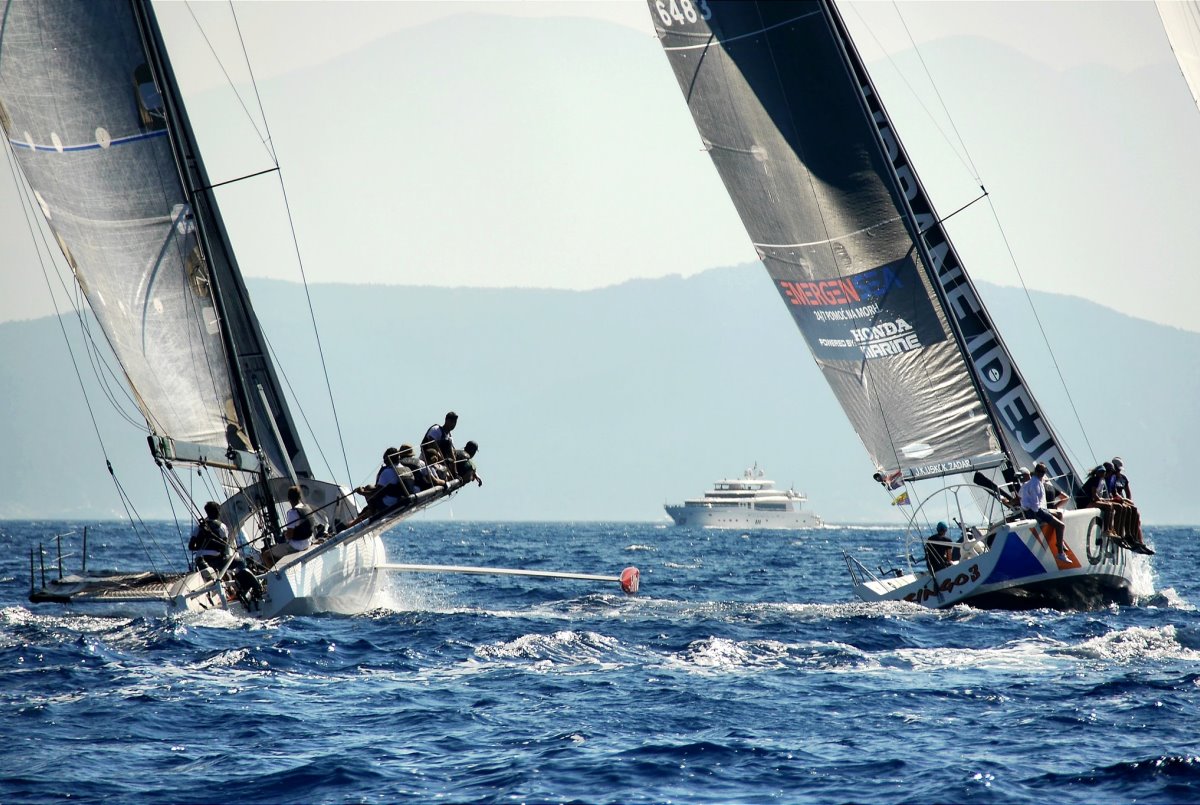
GRINGO - POBJEDNIK 41. JUŽNODALMATINSKE REGATE
Gringo - pobjednik 41. Južnodalmatinske regate
📸 Leonard Kvarantan
Jedna od najiščekivanijih regata svakog ljeta, Južnodalmatinska, ove godine dobila je novu dimenziju zbog koje je imala još veću pažnju u jedriličarskim krugovima nego inače. Razlog je sudjelovanje jedne jedrilice koja je apsolutni vrh u svjetskim okvirima što se tiče tehnoloških rješenja, a od ovog proljeća jedri pod zastavom JK Orsan. Riječ je o Stravaganzi, jednom od najekstremnijih monotrupaca na svijetu, ako se izuzmu vanserijske letjelice s ovogodišnjeg America's Cupa.
Ali idemo po redu.
Regatu organizira JK Orsan iz Dubrovnika u suradnji s PŠU Peliška jedra iz Orebića, a nakon što se starta iz Orebića u tri etape se jedri do Dubrovnika. Prva je startala u petak 6. kolovoza. Nakon Orebića obavezno se jedri prema gradu Korčuli, ispred kojeg se postavlja oznaka koju treba ostaviti lijevim bokom, a usputni otočić Badija desnim, a ciljna ravnina nalazi se u Pomeni, mjestu na sjeverozapadnom vrhu otoka Mljeta. S obzirom da se pobjednik regate proglašava po ORC Club sustavu razvrstanja, potrebno je istaknuti da se na ovoj dionici rezultati obračunavaju s obračunatom duljinom rute od 16NM. Naravno, i onima koji nemaju ORC Club svjedodžbe omogućeno je natjecanje po klasičnom Openu, ali najbrži na ovaj način samo dobivaju titulu koju se u međunarodnim krugovima naziva Line Honors ili po hrvatskom - najbrže jedrilice.
Druga etapa sutradan starta ispred Pomene i da bi se učinila malo zanimljivijom kod otočića Lirica pod Pelješkom obalom ponovno se postavlja jedna oznaka koju se ostavlja desnim bokom. Iduća obavezna točka je jedino cilj koji se nalazi u Prožuri, a u ORC kalkulator ubacuje se duljina rute od 19NM.
I treća, posljednja etapa, krenula je u nedjelju 8. kolovoza. Ova etapa ima dvije opcije predviđene Uputama, a to je ona u punoj duljini i skraćena. Razlika nije prevelika, tako da u slučaju da se jedri kompletna ruta obračunska duljina je 19.5NM, a u skraćenoj varijanti je 17NM. Kod ovog jedrenja obavezan je prolazak između otoka Olip i Jakljan, te jedrenje koločepskim kanalom do cilja kod otoka Daksa.
Na regati je sudjelovalo ukupno 35 jedrilica, a dodatnu ORC kalkulaciju odabralo je 11 posada. Treba spomenuti da je regata imala i međunarodni karakter jer su sudjelovale tri slovenske i jedna talijanska posada.
Osim dobrog i nadasve kvalitetnog odaziva po pitanju sudionika, organizatori su imali i sreće u metereološkom pogledu. Puhalo je svih dana, a jedino što se jedriličarima sigurno nije baš svidjelo je da se skoro cijelo vrijeme jedrilo u orcu. Ako ništa drugo, za vrijeme prevrućih kolovoskih dana to je davalo vrlo poželjan osjećaj osvježenja koji je i u hladnijim godišnjim dobima teško dohvatljiv dok se jedri niz vjetar.
Uz spomenutu Stravaganzu na regati je bilo još nekoliko rasnih jurilica koje su do njenog dolaska mogle konkurirati jedna drugoj i u ovisnosti o uvjetima na moru moglo se dosta dobro prognozirati kakav bi mogao biti finalni raspored. Ovako, Stravaganza je unijela jednu novu nepoznanicu u jednadžbu i tek se treba vidjeti kako će se ponašati u drugim situacijama, ali za sada je izgleda sve išlo njoj na ruku. A osim nje, među open favoritima za line honors, na regati je bio Mareus 3 (ex Full Pelt), zatim još jedan novitet iz Dubrovnika - Outsider, pa Dubrovnik, Fatamorgana II, Gringo 3. Među onima nešto kraće vodne linije tu su Erco D', Adriatica, Južni vjetar, Elaya, Oliva... itd. Sve u svemu, festival brzine!
📸 Leonard Kvarantan
ORC je bio u jednom segmentu predvidljiv, a u jednom čak i zanimljiv. Prvih pet posada na kraju 41. Južnodalmatinske regate možemo redovito vidjeti na regatama CRO ORC Cupa. Međutim, dio njih nije bio u najjačem sastavu, dok jednom dijelu, zbog pripadajuće LOA-e i vrlo duge orce, nisu imali dobro kombinirane uvjete za bolji rezultat.
Pobjedu u prvoj i trećoj etapi, a na kraju i ukupnu pobjedu, odnosi Gringo 3. Od desetak standardnih jedriličara koji izvlače iz ove jedrilice maksimum na štap regatama Kupa, ovaj vikend je jedrilo samo njih troje, a preostale pozicije zauzele su mlade snage JK Uskok, odnosno njihovi juniori iz klasa 420 i 49er.
Slično je bilo i s ekipom na Dubrovniku. Ovdje čak ni kormilar nije bio standardan. Denis Vukas je ove godine preuzeo jednu od uloga u Organizacijskom odboru, pa se bavio postavljanjem oznaka cilja, a kormilo klupske perjanice ustupio je mladom Alecu Cvinaru. Da ni ova postava nije loša pokazuje da su nakon zagrijavanja u prvoj etapi (4. mjesto), u posljednje dvije osvojili dva druga mjesta.
Treće mjesto osvaja slovenska ekipa s Elaye. Njihov kormilar Dušan Ušeničnik iskusni je rutiner po pitanu ORC Cluba, a tek upoznaje regatne mogućnosti svog novog Elana E5, koji mu je zamijenio 450-tku - Karpo.
Na četvrtom mjestu završila je još jedna slovenska posada, ali pod hrvatskom zastavom. Njihova priča je slična onoj od sunarodnjaka i do sad su bili vrlo aktivni s Douforom 460 - Erco, ali od ovog proljeća odlučili su se okušati i na iskusnom Gringu 2 preimenovanom u Erco D'. Inače, oni su osvojili prvo mjesto u drugoj etapi!
Najstabilniji po pitanju rezultata, sva tri peta mjesta bila su njihova, bili su dečki i cure s Adriatice. Ovom Farru 280 puno više odgovaraju uvjeti niz vjetar, a duge navigacijske orce sigurno nisu njegov forte, tako da s ovim rezultatom sigurno mogu biti vrlo zadovoljni, jednako kao i još manji Melges 24 - Lero koji je završio na 6. mjestu. Lerov bljesak bio je u prvoj etapi kad im je Regatni odbor izračunao da su ukupno drugi i ti bodovi su im bili više nego dobrodošli za ovaj solidan rezultat.
A najnovija jurilica pod zastavom JK Orsan - Outsider, završava regatu na 7. mjestu. Činjenica je da je ovaj bolid čisti openaš i da ga posada tek upoznaje, pa je onda ovaj rezultat čak i dobar, a za ubuduće želimo im puno sreće.
Preostale četiri jedrilice također su davale sve od sebe, ali ove godine sportska sreća nije bila na njihovoj strani. Tko je u kojoj etapi zauzeo koje mjesto i koji je kompletan finalni raspored možete pronaći na ovom linku, dok izjavu kormilara pobjedničke jedrilice možete pročitati u nastavku:
Iznenađujuća Južnodalmatinska regata, jer se 85% jedrilo u orcu i mislim da ni u jednom trenutku vjetar nije bio slabiji od 6 čvorova, što je spektakl za ovo godišnje doba i mislim da smo u ta tri dana regate s genakerom jedrili maksimalno pola sata.
A također mislim i da je sreća da nije bilo puno krme jer bi se teško nosili s vrućinom!
Od standardne ekipe bili smo samo ja, Šime Sorić i Marko Kulišić, a s nama su bila četiri juniora i jedna juniorka: Eva Šiško, Buba Pulek, Lorenc Lokas, Bruno Serapilja i Mauro Čupić.
Mi i Dubrovnik imali smo stvarno dobar "fajt", a da smo napravili dobar posao u njihovom lokalnom akvatoriju najbolje pokazuje njihova pohvala na kraju da smo "dobro odradili Kalamotu i Lopudski đir". Tu smo nešto dobro odradili, jer nam je Dubrovnik pobjegao 5-6 minuta, a uspjeli smo ga tu uz kraj sustići i nakon korekcije ponovno ostaviti iza sebe.
Što se tiče jedrilja imali smo standardni set za ORC s tim da smo ubacili J0, a izbacili drifter. To smo sad isprobali i mislim da će taj set ostati za jesenski dio Kupa.
Još planiramo nastupiti i na Lošinjskoj regati. Tamo ćemo isprobati novo glavno jedro, a ovdje smo jedrili s novom trojkom koja je fenomenalno odradila svoj posao, tako da definitivno nastavljamo suradnju s North Sailsom!
A drugi dio prve etape smo napravili još jedan test. Imali smo zajedno podignute J0 i flok i jedrili smo sigurno jedan čvor brže.
U ostalim etapama koristili smo samo jedro i flok s tim da smo u zadnjoj etapi dignuli mediu.
Robert Sandalić, Gringo 3
Po pitanju Opena priča je nešto dulja jer je i flota tri puta veća. Ono što domaćine regate sigurno najviše veseli je to da je pehar najbržeg ostao u klupskoj vitrini, a da u pitanju nije bila samo izrazita dominacija jednog broda, već su dvije dubrovačke jedrilice osvojile pojedinačne etapne pobjede. U prvoj i trećoj najbrža je bila Stravaganza, dok je u drugoj prvi u Prožuru stigao Outsider. Ta pobjeda mu je ujedno osigurala treće mjesto u generalnom poretku, jer je imao jednako bodova kao Dubrovnik, kojem je najbolji pojedinačni Open rezultat bio drugo mjesto u trećoj etapi.
Između Stravaganze i Outsidera smjestio se Mareus 3 koji je za samo jedan bod bio bolji od Outsidera i Dubrovnika!
📸 Leonard Kvarantan
Sve ove četiri jedrilice su ekstremi u pojedinim smjerovima, a nekako najkonzervativniji je baš Dubrovnik, jer jedina egzotika na njemu je karbon kao osnovni građevni materijal.
Ekstremistički dio flote zatvorila je Fatamorgana II. Za razliko od jedrilica ispred sebe koje imaju canting keel, flying bulb, vodene tankove itd, ona se može pohvaliti foilovima. Ako se izuzmu ACI-jevi Swanovi 36, to je jedina jedrilica u nas s ovim "pojačalom". Od sviju nabrojanih Fatamorgana je i najmanja, a taj hendikep joj je bio problematičan u drugoj i trećoj etapi, jer jedino je u prvoj bilo moguće jedriti malo više laško, a s tim kutem i vjetrom koji je puhao ona postaje neuhvatljiva. Tu etapu u cilj je ušla odmah iza Stravaganze.
Na šestom mjestu generalnog poretka završava pobjednik regate - Gringo 3. On je ujedno i prva od jedrilica koje nemaju pomične kobilice i ostale fancy gadgete.
Generalne rezultate po Openu i kako se tko snašao u pojedinoj etapi možete pronaći na ovom linku.
A za kraj je ostala prava poslastica, detaljan izvještaj o jedrenju na ovogodišnjoj Južnodalmatinskoj regati i općenito o primadoni s juga, jedrilici Stravaganza, a sugovornik je njen vlasnik i kormilar Niko Kmetović:
Na regati je bilo dobro s tim da treba uzeti u obzir da smo brod sastavili i bacili u more deset dana prije starta. Napravili smo dva treninga i pošli za Orebić. Tako da sve što smo radili je bilo poprilično konzervativno.
Za prvi dan prognoza je bila maestral, pa je start bio pomaknut za oko sat vremena jer se čekalo da taj maestral pojača i da vozimo po njemu cijelo vrijeme.
U skladu s tom prognozom dan ranije smo odlučili da ćemo na regatu ponijeti mali Code, mali flok i malo glavno jedro.
Veliko jedro nismo niti htjeli nositi na regatu jer smo odlučili dok se dobro ne uigramo da ga još niti ne pokušavamo nositi sa sobom. A razlika između malog i velikog glavnog jedra je oko 20 kvadrata. Malo je otprilike 100 kvadrata, dok je veliko blizu 130. Inače, ta dva jedra dolaze svako sa svojom lantinom, a razlika u njihovim duljinama je oko metar i pol. Znači, svako jedro se sprema sa svojom lantinom i kad se odluči koje će se koristiti samo se zakači na jarbol i zakači se sistem škote i spremno je za podizanje.
Uglavnom, ta odluka će sigurno biti na snazi do kraja ove godine.
Taj prvi start bio je poprilično konzervativan. Startali smo blizu Mate i Mareusa, a tu je bio i Outsider. Potegnuli smo jednu bordadu put škoja pod Badijom. Kad smo došli u kraj smo virali i nakon toga smo jednostavno otišli.
U orcu vozimo od pola, pa do cijelog čvora brže s istim i boljim kutem u odnosu na ostale.
Razlika u kutu i nije nešto pretjerano velika, ali je ogromna razlika u otporu i razvijenoj snazi kad je kolomba van mora. Čim kolomba izađe van mora otpor drastično pada, ali s druge strane dagger se mora ubosti pa se na račun toga vrati nešto otpora jer je narasla uronjena površina.
Ali velika površina jedara i ogroman "righting moment" daju mnoge druge mogućnosti i u forsiranju kuta i u zapojavanju... stvarno se značajno širi opseg mogućnosti trima nego kod klasične jedrilice. Ponašanje je u principu jednako kao u jedrilici koju se dodatno stiska trapezima s tim da je ovo puno bolja varijanta.
Cilj ovog projekta je približiti se katamaranskom režimu jedrenja.. što manje elemenata u moru, što veći righting moment, a poslije se samo krate jedra. Znači, ovaj brod se uvijek mora voziti s minimalnim otporom i u zraku i u moru.
Nakon okreta bove trebalo nam je malo više vremena dok smo složili Code, jer nam je to bilo prvi put da smo ga uopće i dizali, a genaker još uvijek nismo digli!
Uglavnom, nastavili smo konzervativno, jer ipak se posada treba uigrati. Tu je nas 4 - 5 što duže jedrimo, a ostali su surferi i polaznici škole jedrenja za odrasle. Tako da nismo htjeli ništa prepustiti slučaju.
Do Ražnjića smo vozili s Code-om bez ikakvih problema, kad dođe reful malo zapojaš. Baš ispred Ražnjića došao je jedan jaki reful s kojim smo se morali stvarno dobro ispojati i tad smo zavezli 20 bez ikakvih problema. Tada smo skinuli Code i nastavili s malim flokom i punim jedrom.
Vani nas je dočekalo dosta mora, maestral je dobro iskopao i baš me zanimalo kako će se po tim uvjetima brod ponašati.
Tu smo vidjeli da je najbolje kad je kolomba podignuta taman toliko da je iznad površine mora. Jer stvar je u tome da su to bili nestabilni uvjeti. U tim trenucima kad kolomba izađe iz mora značajno naraste righting moment, što od nagiba broda, što zbog toga što svaki put kad kolomba uđe u more ona zbog uzgona postane za više od 100kg laganija. Tako da je već to nekakav auto trim i u tako laškim uvjetima brod se vozi baš kao katamaran.
Mislim da nisam ranije jedrio na katamaranima ne bi mogao kontrolirati Stravaganzu.
Prividni vjetar se mijenja po 30°... moraš pojati 30°, pa se nagradiš s 40°... pojaš 30°, nagradiš se s 30°... pojaš 20°, nagradiš se s 40°... radim s kormilom je strašno važan. Najbolja usporedba je da to izgleda kao da cijelo vrijeme voziš katamaran na jednom trupu.
U tim uvjetima vožnja je bila više nego ugodno, brod je premašio sva moja očekivanja. Val praktički nije ništa smetao i jedina situacija koju smo imali bila je vezana uz brtvu baštuna. Ona je napuhujuća. Kad se izvlači baštun otvori se ventil, brtva se izduši, baštun se izvuće i brtva se napumpa. Ima na sebi ugrađenu malu pumpu poput one na tlakomjeru. Uglavnom to je praktički nepropusno, ali smo imali problem s kuglicom u nepovratnom ventilu pa nismo to mogli najbolje napumpati... To su ti mali tehnički problemi koje moramo ispravljati u hodu. Uglavnom, to smo riješili trakom :)
Kad smo stigli pred Mljet vjetar je malo ukrmio i trebalo se vratiti na Code, ali ja nisam htio ništa dovoditi u rizik jer bili smo prvi. Mate nam je dolazio, ali nije bio dovoljno blizu. Da je bilo možda još dvije milje regate vjerojatno bi se odlučio na taj potez, ali procijenio sam da nas ne može dohvatiti i nisam se htio bez potrebe dovoditi u rizik spuštanja u plitkom, na malom prostoru itd. a tamo se ima možda 100 metara za sve spustiti, plus naših 4 i pol metra gaza...
Drugi dan je start bio ispred Pomeštaka, vozili smo na Liricu, a puhao je nekaka pujalet koji dođe u Mljetskom kanalu kao šiloket. Nakon starta prema Lirici smo vozili prst - dva laško, pa malo orca, pa ponovo prst - dva laško... Tu smo odmah napravili razliku... okrenuli oko bove, oštra orca, došli do Pelješca, burgada na sebe na Mljet i onda nam se tu dogodilo da nam je pukao veliki flok, jedinica. Odlijepio se po sekciji.
Inače veliki je problem što imamo hrpu jedara i na početku dana moraš izabrati s čim ćeš voziti. Mi smo se za taj dan odlučili na flok jedinicu i drifter jer su zvali bonacu, a ostala jedra smo uredno složili u brod. To moram reći, brod unutra ima ogroman slobodan prostor. Dosta je visok i to mu je veliki plus. Npr. Outsider nam stane ispod balkona. A i to je razlog zašto se prvog dana, po valu, vrlo dobro ponašao. Mislim, bili smo kompletno mokri, ali to je bilo zbog prskanja kolombe, zbog brzine.
Uglavnom, kad se dogodilo to s flokom odlučili smo otići pod Mljet jer je tamo bilo nešto manje vjetra, pa smo tu odlučili dignuti drifter. Spustili smo ga tek pred Sobru kad smo se morali vratiti na taj rasparani flok.
Tako smo jedrili jednu bordadu dok nismo udarili u zid od bonace. I tu više nisam imao nikakvih drugih opcija.
Nakon nekog vremena stigli su i Outsider, Mareus i Dubrovnik i kad su vidjeli što nam se dogodilo malo su zaorcali po vjetru koji se tu počeo formirati. S njim su jedrili do punte, a onda im je iz uvale zapuhalo 10-12 čvorova s kojima su ušli u cilj. Nama je to počelo dolaziti tek nakon 5-10 minuta i više ih nismo mogli uhvatiti.
Za treći dan stigao nam je iz Dubrovnika jedan stari flok umjesto tog rasparanog, ali odlučili smo da ipak vozimo s malim od prvog dana.
Na startu smo malo kasnili jer se nisam htio gurati. U jednom trenutku netko nas je pokrio, pa smo legli na svoju stranu. To je sa strane izgledalo gadno, ali nije bila tolika drama. Balkon malo legne u more, ali jednostavno se zapoja i kolomba malo spusti i to je to. Za takve situacije imamo baypass ventil koji kad se otvori kolomba pada iz 90° u nulu za sekundu i pol.
Uglavnom tu dok smo se izvukli da možemo voziti svoju vožnju morali smo biti konzervativniji. Bili smo tu i tamo malo pokriveni, tako da nismo odmah mogli voziti svoj kurs, ali kao i svakim brodom, treba ga naučiti.
Nakon 500 metara, kad smo se očistili, popeli smo se poviše Mareusa i vozili svoju regatu.
Jedrili smo prema Vratniku i kad smo ušli odlučili smo ići lijevo od Tajana i Crkvine, ne uvlačiti se pod otoke. To je bila dobra odluka. Vozili smo potom nam Mišnjak i vozili kanalom s rukom krata.
Inače, brzina u orcu je 9.5 čvorova s tim da se u nekim uvjetima može navuči i na 10 čvorova, dok se prethodni vlasnik zaklinje da se može dovesti i do 12 čvorova!
Nisam baš uvjeren u to, ali oni su inzistirali na tom podatku. Vjerojatno je to bilo po flat uvjetima, s deset ljudi na balkonima i vrhunskom trimu. Uglavnom, ja ga sad mogu konstantno dovesti do toga da ide 9 - 9.5.
Znači, moramo dovesti brod da razvija punu snagu, da kolomba bude u potpunosti van i da je samo dagger u moru. Tada mi je ključan čovjek koji je na glavnom jedru. Tu ulogu ima Lovre. Momak je u treningu , ali svejedno mu je to izrazit napor. Kad su brojevi u pitanju to znači da on sa škotom jedra mora savladavati righting moment od 8500Nm!
I to su ti uvjeti kad se brod ponovno vozi kao katamaran. Vjetar padne za jedan čvor i ja odmah moram pojati da bi dobio na prividnom vjetru, pa ponovno se vraćamo u orcu i tako stalno... stalno se vozi katamaranski stil.
Ovi što su vozili iza nas rekli su nam da oni po nama jednostavno ne mogu shvatiti što se naprijed događa. Oni više ne mogu znati da li nam je došao dric, ili sam taj trnutak zapojao da bi se u idućem nagradio, a brod nam uvijek stoji relativno ravno. On je nagnut maksimalno 10°.
Npr. kad je vjetar jači vozimo ga malo više nagnutog, a kolombu dižemo na 90°, tako da tu ima malo lufta, a kad to padne onda kolombu dižemo na 100°, ali stisnutiji brod.
Ima tu stvarno hrpa nijansi, mi tu nismo još otkrili niti 1% mogućnosti.
Niko Kmetović, Stravaganza
📸 Leonard Kvarantan
O Stravaganzi i njenim tehnološkim rješenjima bit će još riječi uskoro, a do tada još možete posjetiti foto galerije Leonarda Kvarantana, a koje su dostupne na ovim linkovima: petak, subota i nedjelja.
Naslovna foto: Leonard Kvarantan
READ MORE
READ MORE

SUNRISE WINS IT ALL AT THE ROLEX FASTNET RACE
#NSVICTORYLIST: 2021 FASTNET OVERALL
Tom Kneen’s Sunrise wins it all at the 49th edition of the Rolex Fastnet Race
📸 RORC/Paul Wyeth
Tom Kneen’s JPK 11.80 Sunrise is the latest to join the esteemed list of Rolex Fastnet Race overall winners. Upon finishing, Kneen summed up his team’s race quite simply: “it was hard, it’s been a really hard race.”
With a young, primarily amateur crew, Kneen is the first British winner of the race since Charles Dunstone and his maxi Nokia Enigma in 2003. In addition to overall honors, Sunrise is also confirmed as the runaway winner of the IRC Two division.
Kneen’s reflections on the team’s Fastnet success: “When you get everything in the right place, with the right people, in the right conditions… we had four, five, or six hours of that, between the Scillies and the Lizard, when we had 25 knots of breeze and the boat – our so-called ‘caravan’ – was flying along at 20 plus knots. In moments like that, all the rest of it you forget very quickly, when you’re beating in 30 knots of wind and vomiting over the back and wondering why you’re there. It’s the moments of elation that live with you, and it’s what keeps us coming back.”
Congratulations to Kneen and the entire Sunrise crew on their well-deserved results. Continue reading more about Sunrise on the Rolex Fastnet Race 2021 official website.
READ MORE
READ MORE
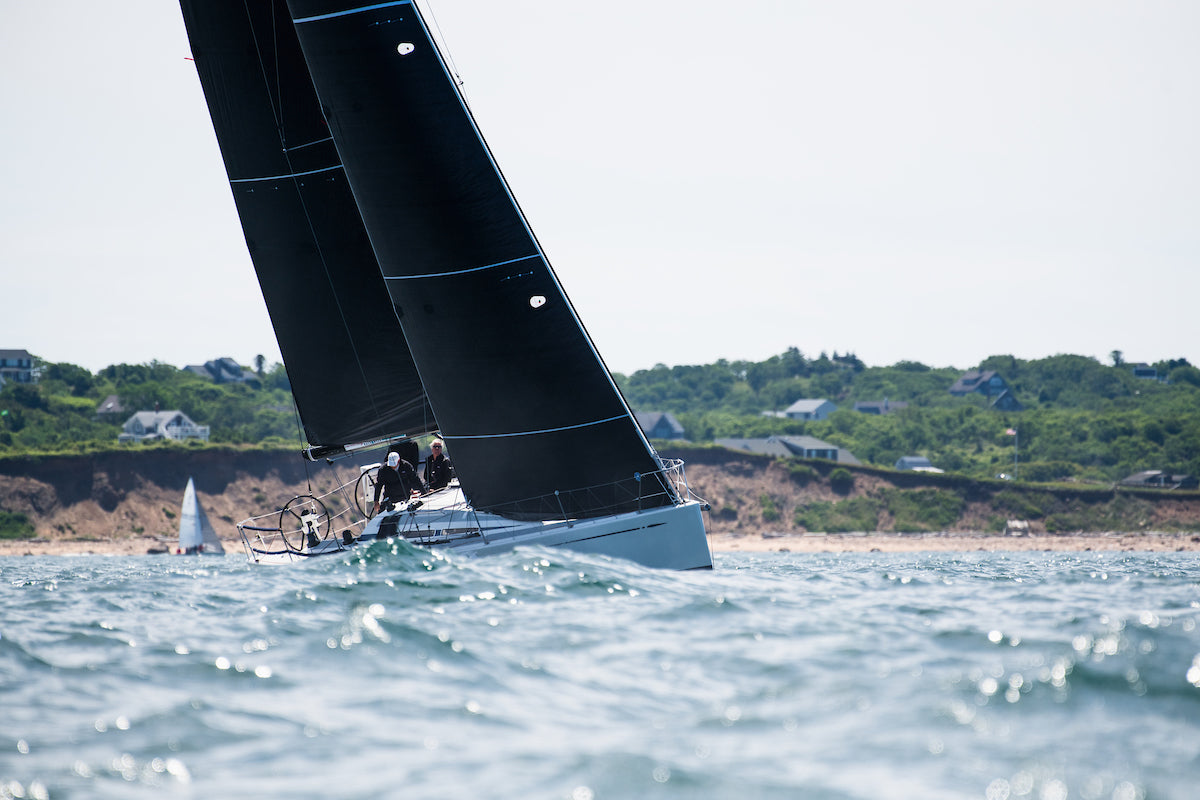
HOW LONG DO 3Di SAILS LAST?
HOW LONG DO 3Di SAILS LAST?
North Sails expert Mark Bradford explains that 3Di sails last “longer than you might think”
📸 Cate Brown
Most sailors shopping for a new 3Di sail ask, “how long will it last?” Based on years of record-keeping, I can honestly say that the competitive life of a 3Di sail is far superior to any other technology on the market. It’s also much better than 3DL, our previous molded technology.
There are far too many variables to predict precisely how long a sail will last, but we now expect race sails to remain competitive for several seasons. That’s a significant change from a decade ago, and it makes perfect sense once you understand how 3Di sails are constructed.
The biggest killer of sails is UV. 3Di sails contain zero Mylar (the main culprit of delamination, use environmentally stable thermo-set adhesive (as opposed to thermoplastic hot-melt) and have a UV protectant added to the outermost surface. They’ll stand up better to the sun than any other sail material. The surface might degrade a bit, especially in the tropics, but those top layers protect the basic structure. As a result, when older sails come into our loft for annual maintenance, we often have trouble finding any damage at all.
One great example of 3Di’s extended life comes from the annual race from Sydney to Hobart. I sail on Black Jack, and before 3Di, we often carried a spare main in case we blew up the first one. Now we’re doing two or even three races with the exact same sail, all thanks to the longevity and reliability of 3Di compared to either 3DL or our competitor’s so-called high-performance options.
Our customer’s buying habits have changed, too. Before 3Di, whenever a customer bought a new race boat, they’d buy three mains: inshore racing, offshore racing, and deliveries. If they took outstanding care of their inventory, they might get three years out of the offshore and delivery mains and one to two years out of the inshore main.
But changing mainsails can be a day’s work for several people, so after seeing how fresh the VO65 3Di sails looked after at the end of the last two Volvo Ocean Races, some of the hundred-footer crews got savvy and delivered the boat home again with the race sail. When they realized the main looked exactly the same even after all those extra miles, that one-mainsail trend trickled down to the smaller race boats as well.
Today, even our most particular racing customers with new boats are only ordering a single mainsail. So that’s the best vote of confidence we could imagine about how well this product lasts. And it’s also a lot less hassle for them because once they get the sails set up on their boat, they’re not tweaking and adjusting and switching one in for another and vice versa. They’re simply pulling up the sail, using it, and then putting it away.
And 3Di isn’t limited to racing boats. In 2020, North Sails introduced 3Di Ocean, a full product line engineered to deliver the benefits of 3Di to the cruising community. For example, we used to tell offshore cruisers that Dacron sails would last for one circumnavigation. Now we tell them they could do two or three laps around the world with the same sail inventory, as long as they have them serviced at one of our worldwide lofts.
Whether you race or cruise, your new 3Di sails will undoubtedly last longer than you think. And it will last longer than any of our competitors’ products. What you’ll experience is a greatly extended lifespan, the longevity of a stable sail shape, and fewer replacement sails less often. Yes, 3Di is a premium product and may initially be the more expensive option, but its cost of ownership over seasons is unmatched.
For more details, contact your local North Sails expert today.
📸 Cate Brown
READ MORE
READ MORE

#NSVICTORYLIST: 2021 ROLEX FASTNET RACE
#NSVICTORYLIST: ROLEX FASTNET RACE
The overall Fastnet line honors leaderboard has a common theme: North Sails
It’s been a busy couple of days in the English Channel, with the Rolex Fastnet Race bringing the sailing world to life for the 49th time. For North Sails President Ken Read, this race is “one of the Big Five, a race that’s leading the way.” And this year, North Sails equipped nine out of 10 fastest finishers. A full command of the overall line honors leaderboard is a common theme for the world’s leading sailmaker. In the last six months alone, North design expertise and sail technology have outfitted the game’s most successful projects; the Vendee Globe, the 36th America’s Cup, the Ocean Race Europe, the Transpac, the Olympics, and most recently, the legendary Rolex Fastnet Race.
A 104-foot blue beast, the Ultime trimaran Maxi Edmond de Rothschild (aka Gitana Team) was the very first boat to cross the line on Monday, August 9 at 20:24:54 BST having devoured the 695-mile course in just over a day.
Franck Cammas and Charles Caudrelier’s crew established a new record of 1 day 9 hours 15 minutes and 54 seconds. But as Cammas was quick to point out when greeted on the dock, “we have a record, but it’s the first time !”
He later confessed that “the start was very intense, with many dangers to deal with all at the same time amidst the yachts, the competitors, the cargo ships and the ferries, not to mention 25+ knots which spiced up the start of the race. We were happy to come out of the Solent unscathed, and the fact that we were leading the way was even better.”
It’s Gitana Team’s second Rolex Fastnet Race win in a row, so obviously, their experience as a crew is paying off. Every move matters on a racing machine like the Ultime, including those made before arriving at the start line. Since 2019, many improvements have been made to the boat’s appendages and systems; they’ve also added a brand new North Sails inventory. “The emphasis has been placed on aerodynamics,” says co-skipper Franck Cammas. “We’ve worked on many aspects in detail, but no revolutionary changes.”
The team has noticed substantial performance gains with their Helix Structured Luff sails. “We had problems with heavy loads deforming the forestay,” explains co-skipper Charles Caudrelier. “With Helix, the loads are redistributed, which allows us to have a straighter, stiffer luff. In particular, the Helix J0 is a small revolution. We are still in a discovery phase, but the gains are clear.”
After exiting the Solent, the Gitana Team led the fleet south towards the Channel Islands, where they tacked further south than their main Ultime rivals, a winning move that allowed them to sail in better breeze. But with so much of the race sailed upwind, their speed machine only briefly touched 40-41 knots after passing Bishop Rock on the return journey.
The brutal first 12 hours of the race were also a solid test for the newly launched ClubSwan 125 Skorpios, and she came through splendidly. As the breeze softened, Dmitry Rybolovlev’s 125-foot superyacht extended away from her main rivals, including previous winner Rambler 88. Juan Kouyoumdjian’s latest design was the first monohull to cross the line, wrapping the course in 2 days, 8 hours, 33 minutes, and 55 seconds.
“The boat is very strong,” said skipper Fernando Echavarri . “We backed off on speed coming out of the Solent, but so was everyone else. We had an idea of what she might be able to do, but we didn’t know for sure, so we learned a lot from this race.”
“Watching Skorpios flying off waves upwind in 30 knots, with a completely unproven boat and unproven sails…” recalls Ken Read. “It just goes to show that when we put our minds to it, what we can produce is nothing short of spectacular.”
Onboard Skorpios is a nine-sail 3Di inventory that features liberal use of Helix Structured Luff technology and a couple of extra sails that you’d traditionally find on an IMOCA or Volvo 65.
“Upwind, you have the J0, J2, J4, and J5,” explained North lead sail designer Steve Calder. Downwind, the J0 or FRO (fractional code 0) and whisker pole (a spreader) , the masthead A3 sail and multiple sails inside that. The other one is the Inner Reaching Sail (or IRS) that sits on the innermost tack point and that is used inside any of these downwind sails.”
Calder further remarked: “The boat looks great, the sails look great, and they performed exceptionally in what were very trying conditions. The results speak for themselves. It’s projects like Skorpios that keep all of us at North Sails pushing towards the next big idea.”
📸 Carlo Borlenghi / Rolex
The slightly longer course – 87 additional miles – seemed to appeal to Charlie Dalin, who’s no stranger to long offshore trips. The skipper of the IMOCA Apivia claimed Vendée Globe line honors in March but ultimately lost the top prize to Maître CoQ’s Yannick Bestaven, who was awarded overall winner after a time compensation. This time, Dalin and his co-skipper Paul Meilhat took a resounding win in the 13-strong IMOCA fleet.
Equipped with new foils and some new sails, Dalin and Meilhat flew upwind past the Needles, even converging with the ClubSwan 125 at the TSS (Traffic Separation Zone) – a boat more than twice her length! Then, the boats match-raced across the Celtic Sea to the Fastnet Rock, Apivia rounding only 49 minutes astern of Skorpios and proving the power of the new foilers.
“That was good,” said Dalin. “It was a shame because if the wind had been maybe 15 degrees left and 2-3 knots more, we would have overtaken them for sure. At 60 degrees TWA, we were faster.”
Maxi Edmond de Rothschild , Skorpios, and Apivia: three iconic boats, three stellar crews, three very different ways to sail and envisage sailing. The 2021 Rolex Fastnet Race fastest finishers showcase that no matter the boat, whatever the conditions, North Sails wins more races than all other sailmakers combined.
READ MORE
READ MORE
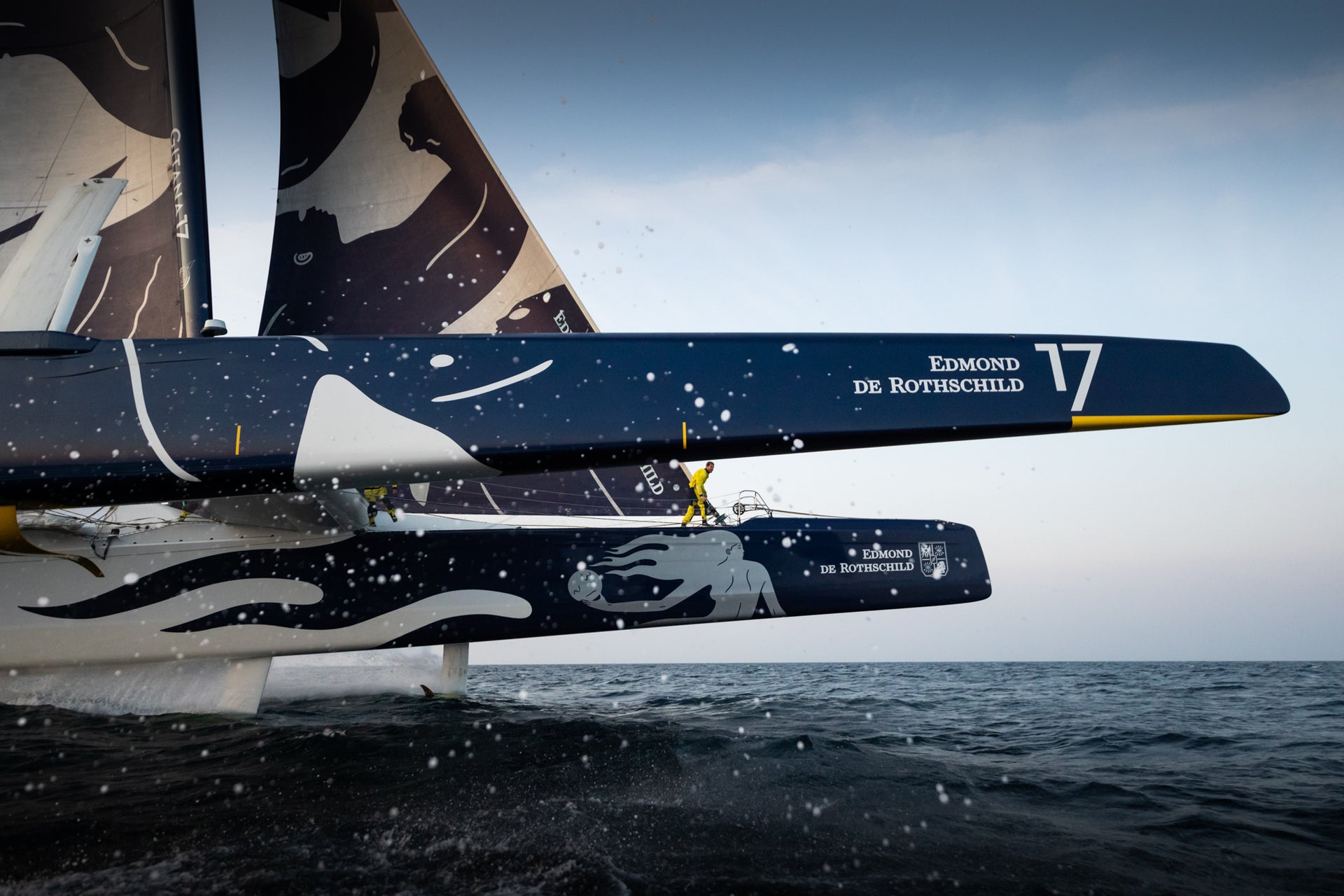
GEAR TO CONQUER OFFSHORE SAILING
GEAR TO CONQUER OFFSHORE SAILING
Gitana Team Joins Forces with North Sails Performance Collection
📸Eloi Stichelbaut
The Gitana Team, an offshore racing stable founded in 2000 by Ariane and Benjamin de Rothschild, has announced its selection of North Sails Performance clothing. North Sails Performance is the new game-changing range of technical foul weather gear and deck wear designed alongside technical sailing clothing designer Nigel Musto.
During the Rolex Fastnet Race 2021, the Maxi Edmond de Rothschild crew, led by their dual skippers Charles Caudrelier and Franck Cammas, had the opportunity to showcase the new technical gear during their second consecutive victory. At the end of this year, the six-strong crew will launch an attempt at the Jules Verne Trophy, the ultimate sailing record, which they aim to achieve under the symbolic 40 days mark. However, before that, the Maxi Edmond de Rothschild skippers will be enjoying a long double-handed transatlantic – the Transat Jacques Vabre – a 7,500-mile race from Le Havre to Martinique via the Trindade archipelago and Matim Vaz off Rio de Janeiro. The field of Ultimes entered looks set to provide thrilling competition.
View this post on Instagram
A post shared by North Sails (@north_sails)
“To support our ambitious round-the-world racing program, we have chosen to trust North Sails Performance. The Maxi Edmond de Rothschild was the first oceanic maxi-trimaran designed to fly on the high seas; it marks a new generation of multihulls and opens a new way of offshore racing. We are deeply attached to this pioneering spirit, as well as to the innovation and performance that are part of the family DNA of our shipowners Ariane and Benjamin de Rothschild. As a result, we have every confidence in the performance of this new generation of North Sails technical clothing.” Cyril Dardashti, CEO Team Gitana .
For complete foul weather protection, the Gitana Team has purchased the North Sails Performance Offshore Smock, Offshore Jacket, and Ocean Trousers for their crew. Additionally, Gitana Team has selected the Inshore Race range, which is well suited to the protection offered by the 32-meter giant’s enclosed cockpit. Items chosen include the Inshore Race Hybrid Jacket and Inshore Race Smock. Finally, Gitana Team has also selected items from the GP Aero range, constructed in a slim, stretch fit – ideal clothing for those who view sailing as a truly athletic sport.
“We’re very proud that Gitana Team has chosen to wear our kit, we set out to make the best foul weather gear in the world, and it’s a very special day at the office when a world-dominating team like Gitana confirms that you’ve achieved your goal. Of course, all at North Sails will be cheering them on very loudly as they hunt down their targets,” Marisa Selfa, CEO of North Sails Apparel, added.
📸Yann Riou / PolaRYSE / Gitana S.A.
READ MORE
READ MORE

TEAM HO'OKOLOHE: EATING TO WIN
TEAM HO’OKOLOHE: EATING TO WIN
Only one first-place Transpac crew barbecued on the transom every night
Dinner offshore usually means whatever freeze-dried flavor is the most palatable, because minimizing both weight and space is a top priority for teams that want to win long-distance races. But onboard Transpac 2021 Division Eight winner Ho’okolohe, a Farr 57, the entire nine-man crew enjoyed fresh barbecue for seven of their nine evening meals. Owner Cecil Rossi did his first Transpac in 1965, so he remembers the days when offshore meals meant, well, meals.
“That’s just the way Cecil wanted to run this program,” North Sails expert (and “Cat 3 Cooler Jockey”) Fuzz Foster explains, a few days after the finish. “The food was unbelievable. I spent the first hour of every off-watch eating… And then I just had to lie down.”
The first two dinners on Ho’okolohe were pre-planned: “Beef stew, manicotti. By the third night, we were into Cecil’s meal program—ribeye steaks and pork tenderloin and teriyaki chicken. We carried a tremendous amount of extra weight, but none of us really cared. We figured, we’ll just sail the boat hard, and it’s going to get lighter as we go.”
Ho’okolohe started with the first group on Tuesday, and Fuzz says they only logged seventy-five miles in the first twenty-four hours. But they were able to set a symmetrical spinnaker the first night; they’d learned on a previous race that the boat was calmer to sail that way. And then they led the entire fleet almost all the way to Hawaii—the only boat that finally managed to pass them was the Volvo 70, Pyewacket.
Shortly after one of their most memorable meals of grilled swordfish went on the grill, that symmetrical kite blew up. Fuzz was driving and Ty Pryne was cooking; “We went down a wave, and the old girl just let go. So Ty flipped the fish and then shut the barbecue off, and we went into a full stop to change sails. We put up the brand new A2 I’d built for the boat. It was an absolutely awesome sail designed by Steve Calder. The boat would go 10 to 11 all the time and then surf down a wave, and get up to 17. She goes all right for a boat that weighs like 34,000 pounds.” And how was the swordfish? Perfectly cooked, he insists.
Besides eating and drinking so well, Fuzz says he really enjoyed racing with his two sons—and passing along a few tips to the younger Travis about steering downwind on a moonless night. “He was nervous,” Fuzz admits. “He had never really driven anything bigger than a Cal 20. On the first night, we put him on the helm when we were ripping along because that is how you learn.
“He grasped it pretty quickly. I’d explain that if you want to surf, make sure you get the boat squared back up at the end. He did great—in fact he held the top speed of all the helmsmen for quite awhile.” Chuckling, he adds, “I don’t know if he ended up with the fastest speed or not, because the bet was they’d have to buy dinner for everyone. So nobody’s really come clean.”
Fuzz has been calling this year’s race his final Transpac, though he admits “like every sailor, you say stuff and then six months later, things change.” Either way, it will be hard to improve on this year’s race—and not just because of Ho’okolohe’s menu or racing home to Hawai’i with his two sons or nearly beating a Volvo70.
“The breeze went aft so early this year! If they were all like this, I think you’d have every sailor on the planet saying, ‘I want to do the Transpac.’ Because it was just that on-edge sailing downwind, going fast.”
Evening barbecues on the transom, and winning with a family team—how could it possibly get any better?
READ MORE
READ MORE
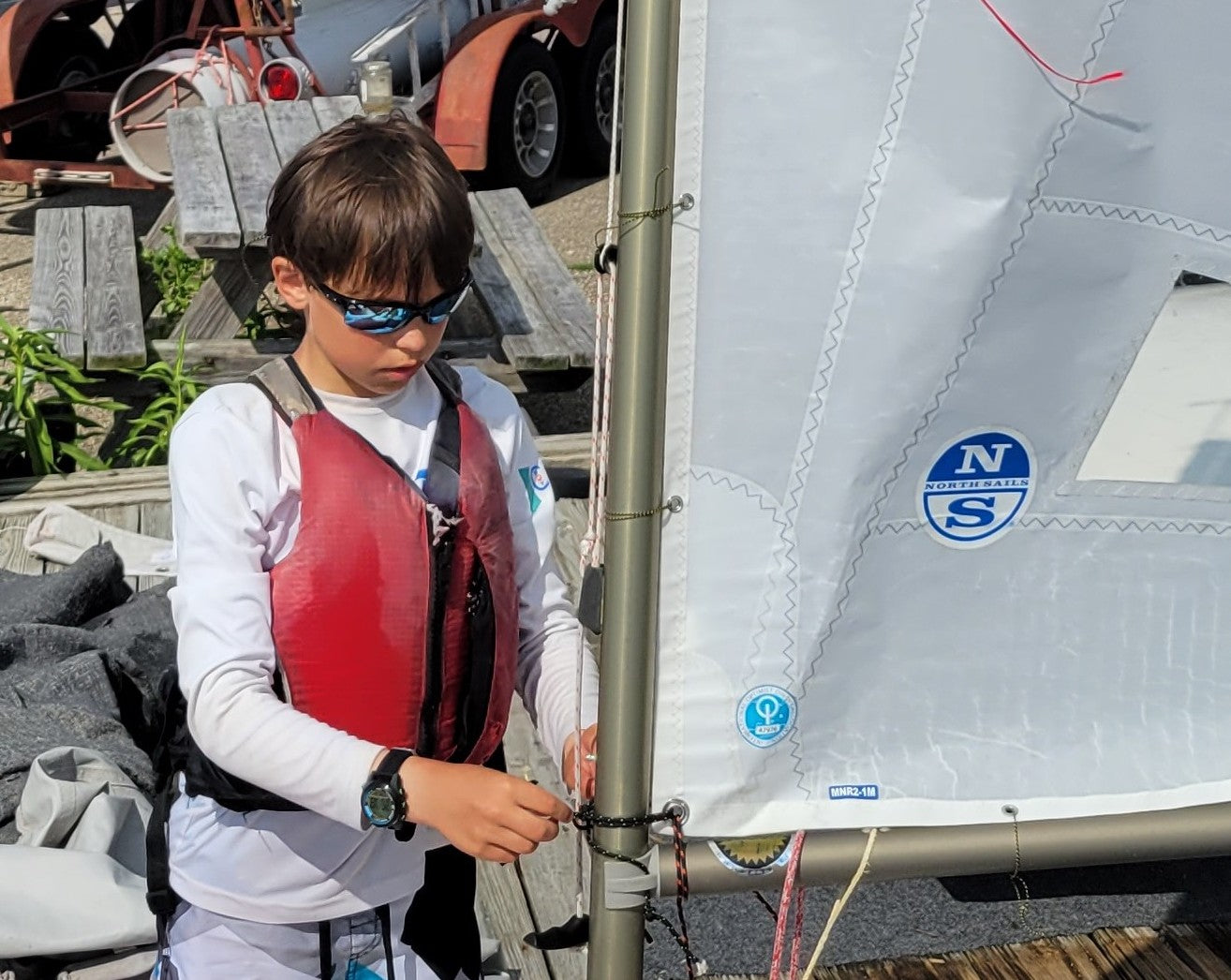
OPTIMIST NATIONALS REPORT
2021 OPTIMIST NATIONALS REPORT
The Scoop on the New V-Series
by Tom Sitzmann
The 2021 Nationals had very light and unstable winds and only 7 races were completed over four days. Sailor Annie Sitzmann used the new North V-2 brand new from Japan. She was the only sailor at the event using the new sail, and despite the fact that she had zero testing time prior to the event, she took on the challenge and is getting better and better each day learning how to properly tune and rig her new sail.
I also worked with Ashton Perkins, who used a North MNR-2. Initially lining these two up, Ashton was higher for sure; the MNR entry is very straight/flat, Ashton is very small/light so he can get away with trimming a little tighter. As the event went on, we seemed to dial in the new V-2 sail. Annie even won a race, which shows that the sail can definitely perform even if in beginner’s hands. With more time on the water and testing, and also testing a few different spar sets, this sail looks very good and makes a great option for the North Sails Optimist inventory. Based on what we observed over the course of the event, I found the outhaul and vang to be extremely important for this sail, and am still learning proper rake and sprit combinations.
Optimist National Championship Report & Interview with Ashton Perkins
The Optimist class US National Championship was held this year in Norfolk, VA and the wind gods sure seemed to team up to confound the event. While the Girls National championship (a one-day event at the beginning of the week) had good winds, the four-day National championship event could only muster seven races total, and that included three on the last day just to get there. So, the event was left to be determined through qualifying rounds only, with no gold fleet races.
North Sails is very excited to announce our new Optimist sail, the V-Series. This sail reflects the culmination of a great deal of testing, hard work, and expertise by North Sails one-design experts and sail designers, and we are confident that this sail offers great speed, pointing ability upwind, and shape durability.
In hot, sticky weather, with so many variables, at times extremely light, shifty, unstable and unsettled winds, sailors were challenged to post any type of consistent scores. Young up-and-coming sailor Ashton Perkins used a North Optimist sail, and Ashton showed blazing speed upwind in this regatta. If it weren’t for a UFD penalty, Ashton would have posted his best-ever regatta finish in the top 10 overall! We caught up with him after the event to get his take on things.
First, congratulations on your performance at the US Optimist Nationals! This was a difficult event with very light unstable winds for sure, and you seemed very fast throughout the regatta. If not for your final day UFD you’d have been in the top ten out of 260 boats! Let’s get to know you. Where do you live, what grade are you going into this fall? How long have you been sailing? What do you like about sailboat racing?
A: I live in University Park Maryland and I am entering the 6th grade. I have been sailing for 6 years. Sailboat racing is great for me because I love thinking about strategy and being on the water.
In this regatta specifically, what was most challenging?
A: Catching the wind shifts.
What was most important? (current, shifts, starts, etc.)
A: They were all really important.
What worked well for you, and what are you most happy with?
A: Except for my U flag and one other start my starts were good. I played the big shifts and I was usually faster than most other boats.
What do you like about the North Optimist Sail?
A: I used to use a J Blue. With the North I am able to point higher while keeping the same speed.
What trimming advice do you have for anyone using this sail?
A: In light air trim just within the corner and in heavy air pull it in slightly tighter.
What’s next? Where will we see you again?
A: New Englands and New Jersey States. I am excited that I qualified for team trials, I also look forward to that this coming Spring 2022.
READ MORE
READ MORE

PODIUM SWEEP AT THE 75TH THISTLE NATIONALS
North Clients 1,2,3,4 at the 75th Thistle Nationals
Congratulations Sam Ingham, Jonathan Duffett and Tanya Cuprak
The 75th Thistle National Championship took place at the Cleveland Yachting Club this past week, placing many North Sails Thistle Class enthusiasts on the #NSVictoryList.
With 96 boats competing, the racing in this One Design fleet was fierce. After the selection segment of racing, the fleet was separated into the Championship Fleet (40 boats) and the President Fleet (56 boats).
Samuel Ingham with crew Jonathan Duffett and Tanya Cuprak bested his father, an 8-time Thistle National Champion to win at this year’s National Championship. Mike Ingham, a North Sails One Design Expert, placed second with his wife Delia and Dan Fien. Ed Adams with Neal Fowler and Kira Munger placed 3rd overall, and Brian Joyce with crew Sean Joyce and Braden Joyce placed 4th overall.
2021 Thistle Nationals winners 📸 Tim Wilkes @timwilkesphoto
READ MORE
READ MORE
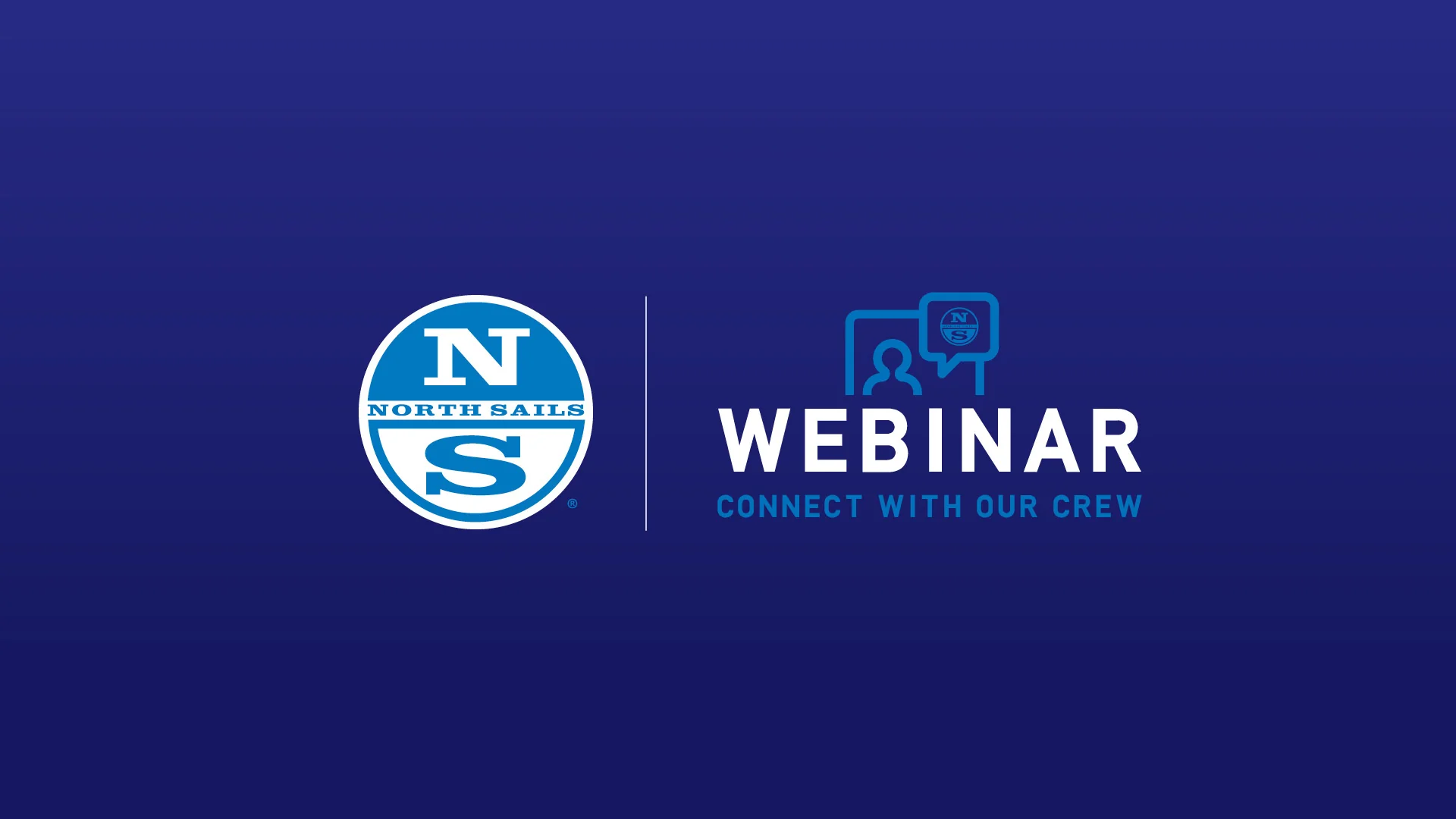
LET'S TALK MOTH RACING WITH TOM SLINGSBY, IAIN JENSEN AND ROB GREENHALGH
LET’S TALK MOTH WITH TOM SLINGSBY, IAIN JENSEN & ROB GREENHALGH
2021 Moth Italian Nationals and Foiling Week Recap
Having claimed victories at the 2021 Moth Italian Nationals and Foiling Week, both Jensen and Slingsby are at the top of their game in the class. Learn from this panel of Moth experts and look ahead to the upcoming World Championship in Malcesine, Italy.
READ MORE
READ MORE

TEAM ACTUAL AIM FOR VICTORY AT THE ROLEX FASTNET RACE
THE ULTIMES AT THE 2021 ROLEX FASTNET RACE: TEAM ACTUAL
Skipper Yves Le Blevec and Team Actual Aim for Victory
After an ankle injury that required a few weeks onshore to recover, French Brittany-based skipper Yves Le Blevec is eager to get back on the helm of his trimaran Actual Ultim 3 (formerly Francois Gabart’s Macif) for the Rolex Fastnet Race. While he wasn’t able to sail, he continued to gather information from his sailing team, which includes: Anthony Marchand, co-skipper of the Transat Jacques Vabre; Yoann Richomme, skipper of the V065 Mirpuri Foundation Racing Team; Hugo Kerhascoët, in charge of Actual Ultim 3‘s electronic foil regulation systems; Jean-Baptiste Le Vaillant, historical specialist of Maxi Trimarans; Amélie Grassi, sailor; and Anne-Kristell Jouan, mediaman.
“It’s great to be back on the boat and prepare to compete on the water,” says Le Blevec. “I feel 100% confident in my ability to be onboard, thanks to the extraordinary work by the medical team at the Kerpape Center in Morbihan.”
Last April, the trimaran was relaunched under the Team Actual colors after a five-month refit. To familiarize himself with the new boat, Le Blevec committed to a handful of sailing sessions with the boat’s former skipper François Gabart. “Watching the way François sails is very instructive. You learn something new every day because we don’t operate in the same way. We know how these complex machines work. But the principle of performance is to constantly question and challenge ourselves. This allows us to constantly evaluate what we know. With Mer Concept, who designed this boat, we have defined a feedback program to evaluate performance. When we return from the Fastnet, we will have some joint training sessions with SVR Lazartigue to compare the data from the two boats.”
View this post on Instagram
A post shared by Team Actual (@team_actual_officiel)
The changes made to the trimaran since she was acquired are minimal, Le Blevec adds. “This boat is a well thought-out design. So we followed the roadmap set out by the previous team to develop the new daggerboard and a new central rudder. There will be some progress, but no major revolution. As we sail, we’ll see how to get the most out of the boat. There are still some subtleties to discover. After the Fastnet, we could change the galley space for the crew, because right now it’s very confined.”
The boat was delivered with a set of sails in good condition, notes Le Blevec. “Like the boat, we didn’t make any major modifications to the sails. We spent a lot of time with North designers Alan Pennaneach and Quentin Ponroy, to review each sail and their history, according to the specifications initially set up with MerConcept. The mainsail had been modified for the Transat, and we completed those modifications.”
For the Fastnet, they were still deciding which headsail to use. “We have two J1s, one that is tucked inside the mainsheet and the other on the draft point of the J2, and we will have to choose which of these we will take onboard for the race. We will also have to think about it before the start of the Transat Jacques Vabre next November. For that, we need to log miles, which will allow us to identify the gaps depending on the weather conditions. We have some ideas for modifications, but there is no need to change the sails for the moment.”
Compared to his previous Ultime, Le Blevec notes a real gain in performance at certain points of sail: “We have entered another mode of navigation! Her target speed upwind in a 25-knot wind can reach 27-28 knots on foils. The crew has already experienced sequences of flying at 40 knots, with a peak of 44 knots. It’s exciting.” He also observes that in heavy seas, the boat is more fluid and hits the waves much less than his old trimaran.
“There are still a lot of adjustments to be made, but we are excited to be sailing against the other competitors,” Le Blevec says. “Alone in training it’s always difficult to evaluate your performance, especially since these Ultimes are by nature very fast machines.”
The Rolex Fastnet Race remains a classic among classics, he concludes, and it’s always a pleasure to return, even if there can be only one winner in the end. According to him, the finish in Cherbourg, France, represents a great demonstration of freedom from borders. “The course is significantly longer, even if it remains short for the Ultimes. But to complete the Fastnet in just 24 hours is an extraordinary thing.”
North Sails equips three Ultimes taking part in the 2021 Rolex Fastnet Race. We spoke to the crews about their project, the evolution of their boat and sails, as well as their Fastnet training program and their expectations for this edition. You can access our other stories via the links below.
Edmond de Rothschild Sodebo Other Fastnet Stories
📸 Thomas Deregnieaux
READ MORE
READ MORE
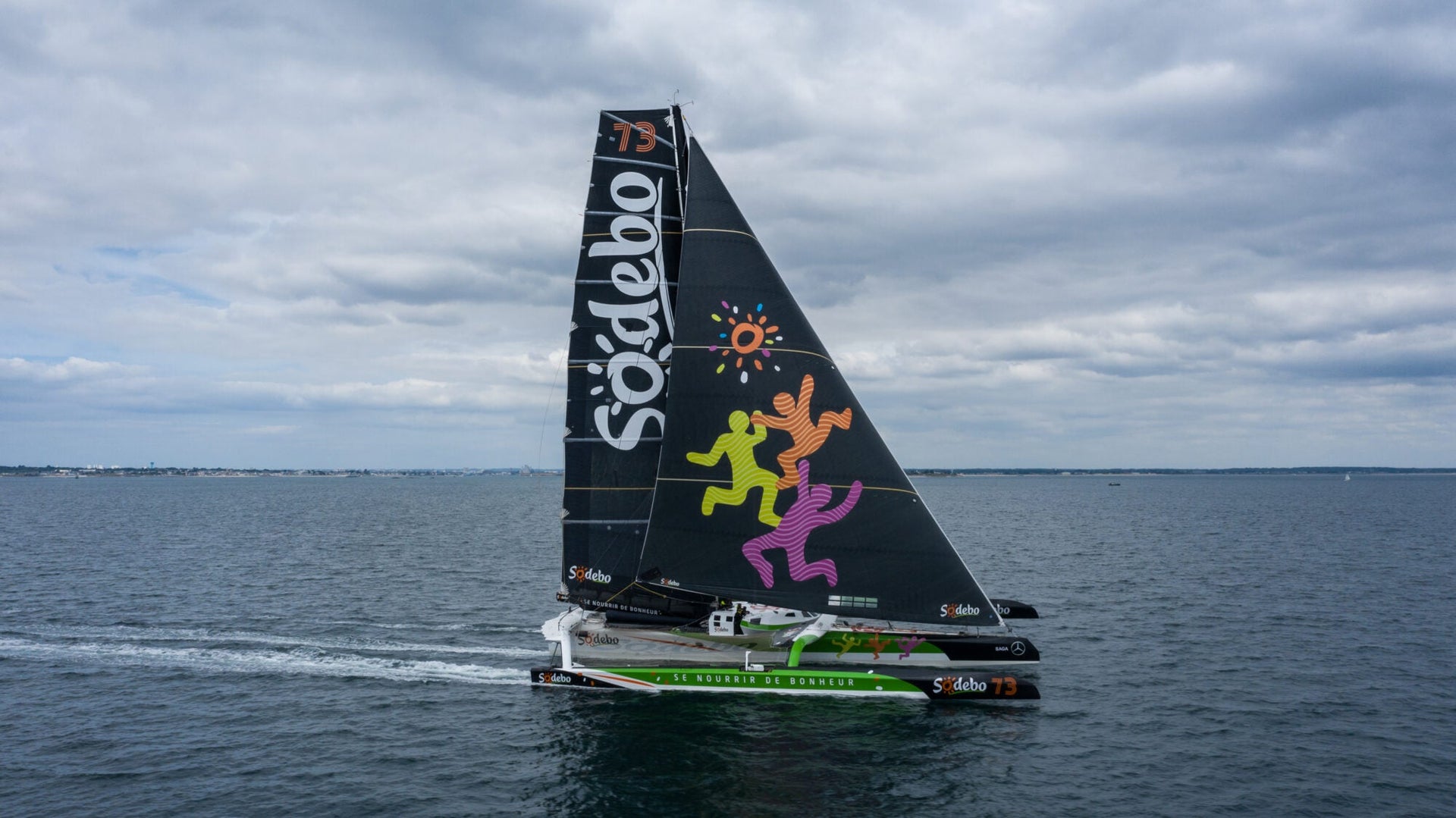
SODEBO ULTIME 3 IS ROLEX FASTNET RACE READY
THE ULTIMES AT THE 2021 ROLEX FASTNET RACE: TEAM SODEBO
Offshore Veteran Thomas Coville Expects Intense Competition
📸 Martin Keruzoré
Sodebo Ultim 3, a latest-generation boat skippered by Thomas Coville, will line up at the start of the Rolex Fastnet Race against the other Ultimes. The sailing team includes Thomas Rouxel, Corentin Horeau, François Duguet, Matthieu Vandame, Léonard Legrand and Thierry Douillard, and part of the crew was also involved in the team’s 2020 Jules Verne Trophy attempt.
“We are probably one of the boats that has sailed the most,” Colville says. “These 32-meter boats are technically complex and very demanding. It’s exciting, because the project management is constant.”
Despite ever-changing circumstances since the launch in 2019, Coville has a positive assessment of the last two years. “We have experienced a dynamic and creative period with a vast amount of internal collaborative work. We have set up a design office to coordinate our work with the best experts in each specialty, and a rotating leadership that adapts according to the skills of each person.”
Right from designer Renaud Banuls’ very first drafts, the team focused on aerodynamics and worked closely with North Sails.
“To design this boat, we started with the experience of the previous boat, and the old sail surfaces. We then redesigned the sail plan,” explains Coville. “We are very much linked to North’s studies and involvement on our internal platform. With Gautier Sergent, we started with the sail plan and aerodynamics to think about how we could integrate with different parameters linked to the boat’s behavior, such as the centering of the weight. Each element interacted with another element to make the whole reflection loop work. From the power of the boat generated by the sail plan, we created a hydrodynamic package to balance these forces. That was pretty innovative.”
This interactive approach continued right up until their 2020 Jules Vernes Trophy attempt, and the sailing team returned with a wealth of data combined with a rich experience to further evolve both the boat and the sail plan. “There were some sail shapes that we were happy with, and we made some nice changes to the mainsail and gennaker. For each sail, we are looking for an optimization between the structure and the shape. As far as Helix technology is concerned, we’ve seen clear improvements, especially on the second version of the new set with the data feedback.”
Coville is a Rolex Fastnet Race veteran and says each edition is different. “I love this race, because it was one of my first competitions as a young sailor, which introduced me to ocean racing and to the Anglo-Saxon sailing world. At the time, Cowes was the Mecca of ocean racing and all the nations came to compete. You could meet all types of sailors, from amateurs to professionals, in a festive atmosphere and with good chemistry.”
He doesn’t think the new course format will change the race very much. But he predicts this first match-up between the Ultimes will be quite intense; “We have been sailing a lot lately, but with a team led by Franck Cammas and Charles Caudrelier, two sharp sailors on a boat that has reached maturity, and another team skippered by Yves Le Blevec, who has a boat with a solid track record…” it will be a great battle for line honors into Cherbourg.
North Sails equips three Ultimes taking part in the 2021 Rolex Fastnet Race. We spoke to the crews about their project, the evolution of their boat and sails, as well as their Fastnet training program and their expectations for this edition. You can access our other stories via the links below.
Team Actual 3 Edmond de Rothschild Other Fastnet Stories
📸 Martin Keruzoé
READ MORE
READ MORE
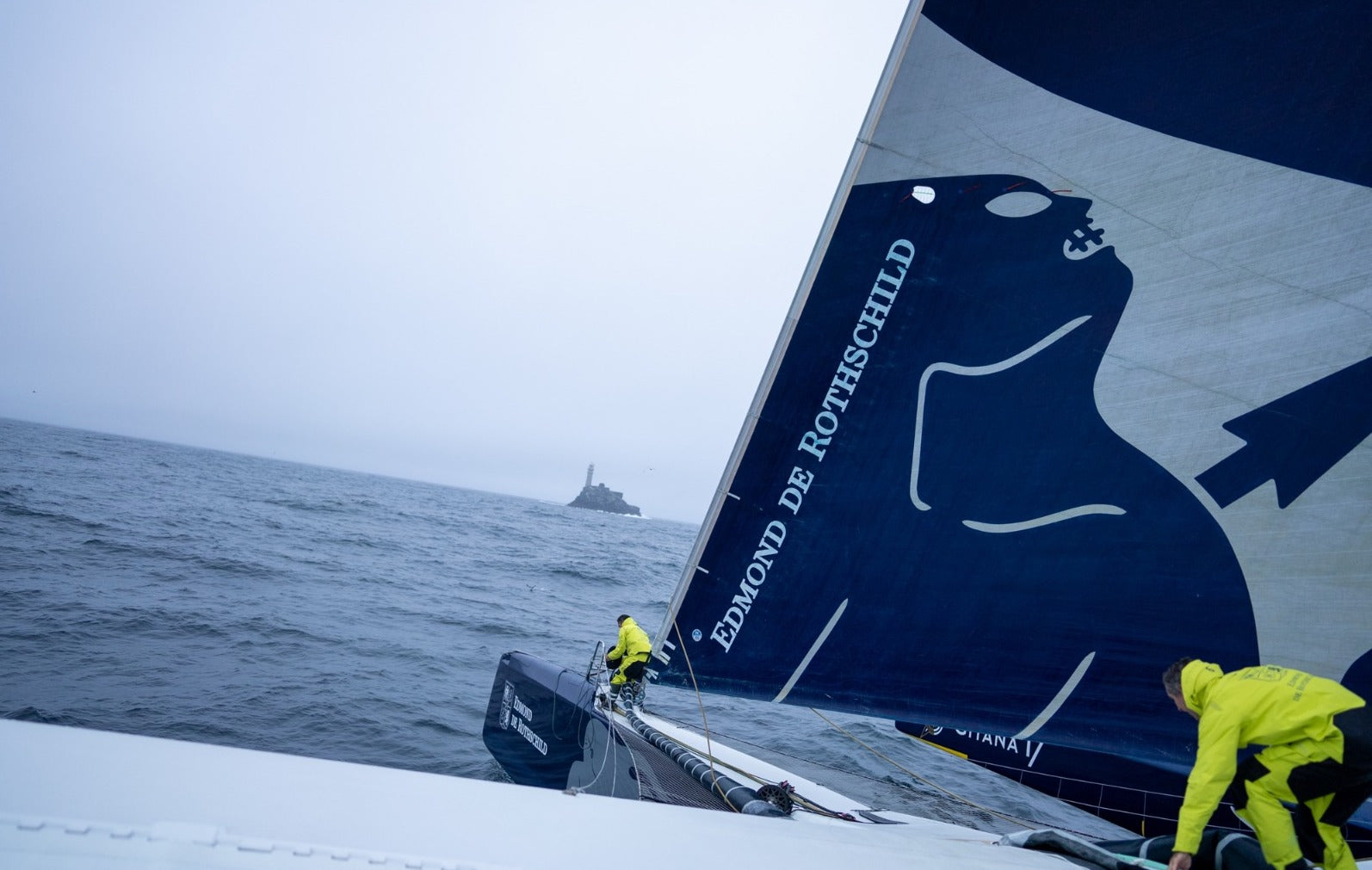
ULTIME EDMOND DE ROTHSCHILD BACK TO DEFEND FASTNET TITLE
THE ULTIMES AT THE 2021 ROLEX FASTNET RACE: GITANA TEAM
Edmond de Rothschild Back to Defend Their Title
📸 Yann Riou / polaRYSE / Gitana Team
The winner of the previous Rolex Fastnet Race, the Maxi Edmond de Rothchild is back to defend her title. In 2019, the trimaran led by Gitana Team beat François Gabart’s Macif by a mere 59 seconds. Since then, many improvements have been made to the boat’s appendages and systems; they’ve also added a brand new North Sails inventory. “The emphasis has been placed on aerodynamics,” says co-skipper Franck Cammas. “We’ve worked on many aspects in detail, but no revolutionary changes.”
The team has noticed real performance gains with their Helix structured luff sails. “We had problems with heavy loads deforming the forestay,” explains co-skipper Charles Caudrelier. “With Helix, the loads are redistributed, which allows us to have a straighter, stiffer luff. In particular, the Helix J0 is a small revolution. We are still in a discovery phase, but the gains are clear.”
Thanks to these upgrades, Edmond de Rothschild has been logging 30-40 knots depending on wind conditions. At those speeds, the team could cross the finish line in Cherbourg in less than 24 hours. Caudrelier points out that the new course allows for a more open game, as they have the whole English Channel to cross. “It will be interesting for the Ultimes. There will be close racing with a more technical course off Cherbourg. And of course this French city provides a nice setting for an arrival celebration.”
But first, the giant trimarans must maneuver their way through a start off Cowes, a tricky feat for the largest boats in the race.
“The English coastline is a great playground and one of the most complicated in terms of sailing,” Caudrelier says.
Cammas agrees. “Even if the course is short for Ultimes, this race remains a great pre-game for the Transat Jacques Vabre.”
In order to maximize options in all possible conditions, the team will also keep its standard set of sails onboard. “A gennaker covers a range of wind speeds from 10 to 40 knots,” Cammas explains. “This reduces the number of sail changes, very physical maneuvers that require the crew’s full attention.”
The entire team is fully committed to continued evolution, and the boat will be fitted with new foils after the Fastnet. Caudrelier says that they also want to keep refining the sail plan. “Do we want deeper sails, flatter or more twisted? We made some modifications in a direction that interested us. But it is difficult to evaluate the performance of a sail because the figures from one day to another are different. In the previous Fastnet, we were a bit faster downwind. But our preferred points of sail are upwind and reaching. That said, this edition is more competitive, and we expect to uncover feedback to help close these gaps.”
“We don’t have the human and technical resources to change sails or appendages every year,” Caudrelier explains. “But we change what we think is most relevant.”
It is also difficult to make comparisons across the fleet, because each Ultime features very different design concepts and structure, which demand different sail combinations.
“The two new boats Banque Populaire (Armel Le Cléac’h) and SVR-Lazartigue (François Gabart)> will be absent from this edition,” Caudrelier says. “Some teams have added larger foils and larger wings on the daggerboard to improve their hydro. Obviously, the tweaks are not revolutionary, but it is the sum of the small things that make the difference. In the end, we all have weak and strong points. The Fastnet will be an opportunity for us to both gauge our performance and test some sails to design the set for next year.”
📸 Yann Riou / polaRSYE / Gitana S.A.
Aside from the high-caliber competition, what the Edmond de Rothchild crew fears most is hitting UFOs; submerged objects plagued the team throughout training and during last year’s Jules Verne Trophy attempt. “There is always a risk and an apprehension of hitting something,” says Caudrelier. “The impacts are often violent, and the damage is significant.”
The crew includes Morgan Lagravière, David Boileau, Erwan Israel, and Yann Riou, and all are looking forward to their first competition since the Brest Atlantiques and to measuring themselves against their opponents. Will their continuous improvement be enough to defend their 2019 title against such tough competition? Stay tuned for an exciting finish in Cherbourg.
North Sails equips three Ultimes taking part in the 2021 Rolex Fastnet Race. We spoke to the crews about their project, the evolution of their boat and sails, as well as their Fastnet training program and their expectations for this edition. You can access our other stories via the links below.
Sodebo Team Actual Other Fastnet Stories
📸 Eloi Stichelbaut / polaRYSE / Gitana S.A.
READ MORE
READ MORE

THE BATTLE OF THE BEASTS AT THE 2021 ROLEX FASTNET RACE
BOATS TO WATCH IN THE 2021 ROLEX FASTNET RACE: BATTLE OF THE BEASTS
Each boat has a hunger for one thing: the Fastnet Challenge Cup
Three incredible speed machines are making their final preparations before the start of the Rolex Fastnet Race this Sunday; Rambler 88, the new ClubSwan 125 Skorpios, and the MOD70 Argo. Expect this year to be a showdown of the ages as we anticipate a thrilling battle of some of the world’s fastest boats. Each boat has a hunger for one thing: the Fastnet Challenge Cup (and bragging rights, of course). Seriously, what’s not to love about this year’s edition?
The boats at a glance:
Rambler 88 – a 88′ Juan Kouyoumdjian (aka Juan K) design born out of owner George David’s commitment to getting back on the water after Rambler 100 lost her keel during the 2011 Rolex Fastnet Race. Launched in 2014, the 88 is a fast, versatile, IRC-optimized maxi yacht with an extraordinary racing record under her belt.
Skorpios – the recently launched ClubSwan125, a high-performance racing machine also designed by Juan K. Combining Nautor’s Swan’s pioneering design approach and the latest innovation, she’s been hailed “the fastest monohull ever” and a “record-breaker.” Still, she’s yet to line up and prove her potential on the water.
Argo – Jason Carroll’s MOD70 trimaran is equipped with new third-generation foils and sailed by a stellar crew who smashed the Bermuda-Plymouth record in June this year.
From the sail designer’s desk:
“I have three horses in the race,” enthuses North Sails designer Steve Calder. “They’re Rambler 88, the 125, and the MOD70 Argo. All three boats showcase the future of sailing.”
The two monohulls are competing in the IRC Zero class, and while they’ll be each other’s main competition, they’ll want to test themselves.
“Despite practicing with almost a shell of a crew on the 88 because of COVID quarantine conditions, most of the original Rambler guys have come back for the race,” explains Calder. “It’s George David’s favorite race, and he wouldn’t miss it for anything. And it’s great to see the seasoned vets and loyal crew back onboard. I expect they’ll be extremely competitive this season.”
Rambler’s pitman Curtis Blewett, who’s done the race seven or eight times, admits he’d love to “try and get the course record. We’ve missed it a few times on the Rambler, which means we’ll be more focused on boat performance and sailing our own race. I like sailing here because it’s usually really windy.”
“Our biggest competition? The new 125,” remarks Blewett. “But obviously, after 16 months off, our biggest challenge: sailing the boat well after a long break.”
📸 Nautor’s Swan
Having faced similar COVID-related challenges, Skorpios will be skippered by the Spanish Olympic Tornado gold medallist and former Volvo Ocean Race skipper Fernando Echávarri. In addition, Volvo Ocean Race winners Brad Jackson, Michael Joubert and Jan Dekker, fellow Volvo Ocean Race veterans, Antonio ‘Neti’ Cuervas-Mons, David Pella, and navigator Campbell Field also join the team roster.
“They’ve spent the last couple of weeks getting prepared as the Rolex Fastnet Race approaches,” says Calder. “They’ll have onboard a new Helix fractional Code Zero, which they’re super happy with.”
Skorpios’s true potential will soon be revealed. “I never experienced the boat fully loaded up with the water ballasts and all of that,” comments Calder, who joined the team for sail trials a few weeks ago in Finland. “But every now and then, you’d touch some apparent wind with the A3 on, and she would want to light up. She powers up very quickly. With that boat length, the laws of physics favor her speed potential.”
In the MOCRA category, the 70′ Argo faces about a dozen multihulls, including Giovanni Soldini’s Maserati Multi 70. Argo’s foil upgrade, created by the MOD70’s original designers VPLP, brings her performance package closer to Maserati and the latest 30m long Ultim trimarans
“Argo has done some impressive miles over the past couple of weeks,” adds Calder. “They have this new foil mode now, and the boat is being pushed very, very hard.”
Sailed by Charles Corning with British offshore legend Brian Thompson, America’s Cup sailors Alister Richardson and Thierry Fouchier, and US Olympian Charlie Ogletree onboard, Argo has everything she needs to eat some miles between Cowes and Cherbourg.
May the fastest boat win.
READ MORE
READ MORE

OLYMPIANS TRIUMPH IN ENOSHIMA
TOKYO2020: RECAP
Olympians triumph in Enoshima
📸 Sailing Energy / World Sailing
Here at North Sails, we’ve been avidly following the Tokyo2020 Olympics as all the sailors put on an incredible display in the waters off Enoshima, Japan. Five of our 8 Olympians to Watch made it onto the podium, and we were very impressed with everyone’s speed and poise as they dealt with the widest possible variety of conditions. Here’s a recap of the Finn, 470, and 49er results.
Finn Finale
📸 Sailing Energy / World Sailing
This singlehanded men’s class never disappoints with its mix of physicality and grace. The British champion, Giles Scott managed to defend his 2016 gold medal, even after restarting the double-points medal race. Great boat speed jumped him back up to silver medal position by the first mark, but Hungary’s Zsombor Berecz rounded the first three marks with the gold medal in sight. It wasn’t until the final gate, just before the reach to the finish, when Scott was able to luff up inside two boats and finally lock up the gold, relegating Berecz to silver.
North Sails expert Mickey Ickert developed the very first laminated Finn sail before the 1996 Games, and we’re very sad to see this boat leave the Olympic family—but we also predict the class will continue to thrive. We’ve built 10,000 Finn sails to date, and we will soon launch an updated product range that includes several improvements we made while working with Giles Scott, Zombor Berecz, and other top teams.
470 Showdown
📸 Sailing Energy / World Sailing
In the men’s fleet, all of the top nine teams used North Sails. Australia’s Matt Belcher/Will Ryan bested their Silver winning Rio 2016 performance for Olympic Gold in Tokyo. With this win, Belcher became Australia’s ‘most successful Olympic sailor.’ The battle for the other two podium spots was eventually won by Sweden’s Anton Dahlberg/Fredrik Bergstrom and Spain’s Jordi Xammar/Nicolas Rodriguez Garcia-Paz. Between them, this trio of teams won all but two of the eleven races.
All 21 women’s teams used North Sails. As expected, the British duo Hannah Mills/Eilidh Mcintyre took the top spot on the podium. With this win, Mills cemented her position as the most successful female Olympic sailor to date. A tie for silver between Poland’s Agnieszka Skrzpulec/Jolanta Ogar and France’s Camille Lecointre/Aloise Retornaz was won by Poland, since they had the most race wins (3).
For long-time 470 teams, Tokyo2020 also marked another bittersweet final regatta; at the next Olympics in Paris 2024, this doublehanded boat will become a mixed gender event. North Sails Japan will continue to develop successful sails for the many new teams that are already forming.
49erFX Repeat Gold
📸 Sailing Energy / World Sailing
Defending gold medalists Martine Grael/Kahena Kunze of Brazil went into the medal race on the losing end of a tie with the Netherlands’ Annemiek Bekkering/Annette Duetz . But a third place finish (behind Argentina and Norway) gave them another decisive overall victory. Tina Lutz/Susann Beucke of Germany finished fifth to win silver, forcing the Dutch team to settle for third overall.
49er Upset
Ties for first and third at the Tokyo2020 Games show how close the racing was in the men’s skiff. Great Britain’s Dylan Fletcher/Stuart Bithell won the medal race by only a few meters over the German team, earning the gold medal. 2016 gold medalists (and America’s Cup champions) Peter Burling/Blair Tuke of New Zealand finished second. Germany’s Erik Heil/Thomas Ploessel beat out Spain’s Diego Botin le Chever/Iago Lopez Marra for the bronze.
With only three years left before Paris 2024, we have already started work with several top Olympic hopefuls. We are also very excited to work with the 49er and 49er FX classes as they transition to North 3Di for the Paris 2024 Games. Congratulations to all!
To receive future updates on all the Olympic classes, sign up for our newsletter.
READ MORE
READ MORE

GRAND PRIX MACHINES AT THE ROLEX FASTNET
GRAND PRIX MACHINES AT THE ROLEX FASTNET
Check out the high-profile boats to watch in the World’s largest offshore race
📸 Yvan Zedda/Alea
The world’s largest offshore yacht race begins this weekend, the legendary Fastnet. With so many boats on the water, including some very high-profile racing boats, we sat down with North Sails experts to find out more about the competition. With this story, we’re looking into the Grand Prix boats. Just who are the IMOCAs and Class 40s we need to watch out for in the 2021 Rolex Fastnet Race?
Alan Pennaneach is really looking forward to this year’s Rolex Fastnet Race. At North Sails France, he’s worked with lots of IMOCA and Class 40 teams to fine-tune their sail plans for the race. Plus he’s getting ready to take part in the race himself onboard the Class 40 Banque du Leman.
IMOCAs
📸 Gauthier LEBEC / Charal Sailing Team
“The IMOCA teams we work with are looking forward to testing all the modifications we’ve done to their sails after the Vendée Globe,” he says, before discretely adding that he “can’t really detail the changes done. New sails and existing sails that have been re-cut will be onboard for the Rolex Fastnet Race. The sailors will give us their feedback directly afterwards.”
That will allow North Sails to modify the sails before the Transat Jaques-Vabre in November. “That’s one of the advantages of the 3Di technology,” adds Pennaneach. “You can tweak things easily as long as the sails are in an okay shape. We’ve done that lots in the Spring and Summer this year, and we’ll keep testing these throughout the season before creating brand new sails in 2022.”
So who are the boats to keep an eye on? It’s hard for Pennaneach to decide on just one favorite. “All the new generation boats are favorite – Vendée Globe winner Yannick Bestaven & Roland Jourdain on Maitre Coq, Jeremie Beyou & Christopher Pratt on Charal, Simon Fisher & Justine Mettraux on 11th Hour Racing Team, Charlie Dalin & Paul Meilhat on Apivia…”
Throughout the fleet, their main goal is to win the 2021 edition – and to prepare for the Transat Jacques-Vabre. This also holds true for Pennaneach too, but his presence onboard Banque Du Leman serves an additional purpose.
“We’ve delivered new sails last week, so the Rolex Fastnet Race will allow us to validate all the modifications done during the summer, prepare for the Transat and decide on any further modifications. Being onboard will allow me to immerse myself in the project and see what improvements can be made.”
Pennaneach has specifically worked on a new J1 that got rolled out two weeks ago. “It led to more changes in the mainsail because of the class rules. We cut the old main again, so we can see if it leads to any gain, and how it affects the balance of the boat.”
Class 40s
📸 Pierre Bouras
With lots of new Class 40s being built at the moment, the fleet isn’t quite complete but still features some big names. Antoine Carpentier on Courrier Redman is sailing with previous overall winner Gery Trentesaux, and British legend Mike Golding is racing with Alex Mehran on the Akilaria RC3 Polka Dot.
Pennaneach’s crew is one of the favorites too, just like the team onboard Palanad 3. “They’ve got the same boat than us, but skippered by a father and son who’re amateurs and surround themselves with professionals. They can definitely be at the front.”
Find out which doublehanded teams at the Rolex Fastnet we’re keeping an eye on.
READ MORE
READ MORE
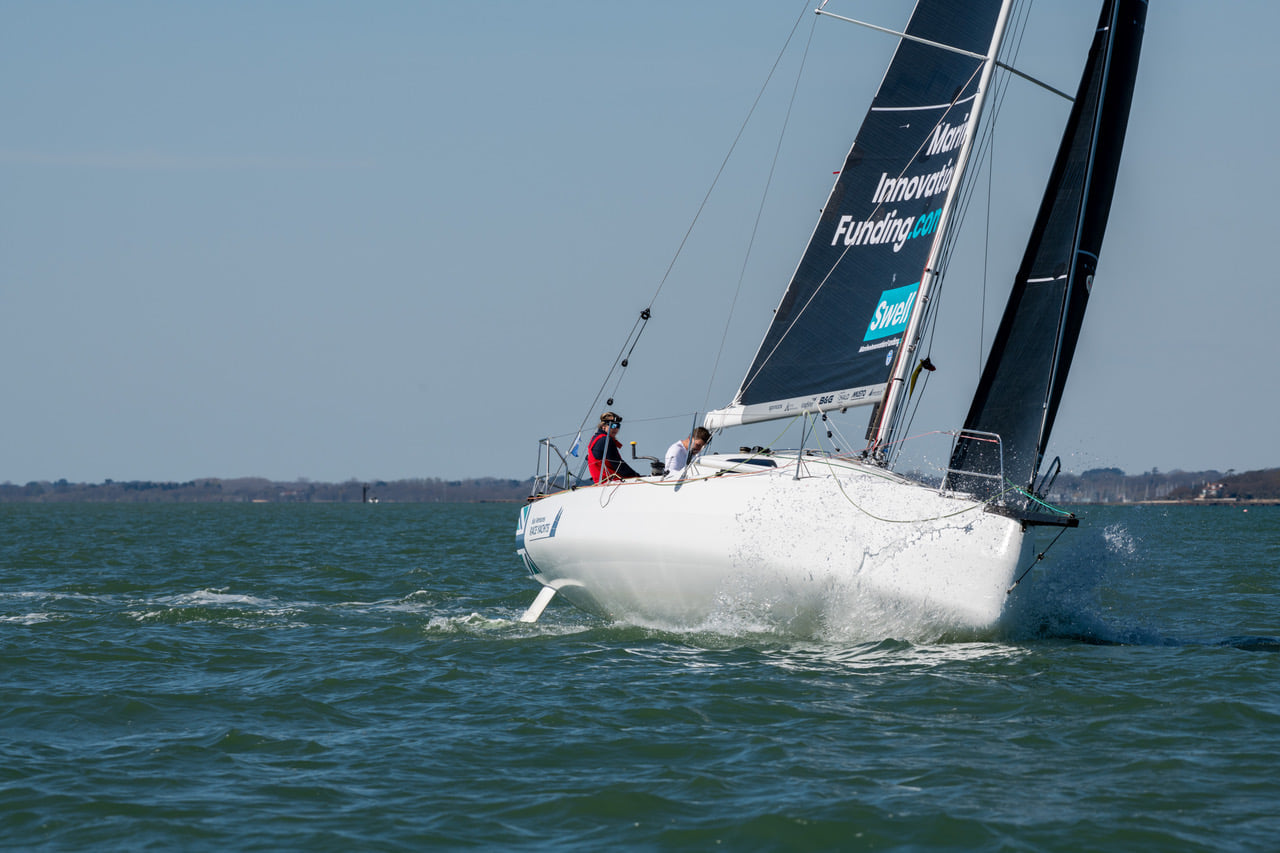
DOUBLEHANDED TEAMS AT THE ROLEX FASTNET
DOUBLEHANDED TEAMS AT THE ROLEX FASTNET
Of 89 duos, who will stand out from the crowd?
📸 Bomby/ Robertson
With almost a fourth of the entire fleet sailing doublehanded, the duos lining up on the start line of this year’s Rolex Fastnet Race already own the race. But who will stand out from the crowd?89 doublehanded boats will gather in Cowes to take part in the 2021 Rolex Fastnet Race, a number that reflects the growing popularity of doublehanded offshore racing – and everyone’s excitement for that format.
“It’s going to be super competitive,” rejoices Henry Bomby, who helped create the UK Double Handed Offshore Series. This IRC format has been created for all boats that are sailed doublehanded with a rating between 0.990 and 1.055 TCC, and the Series represents 29 crews entering the race this year and aiming to round the Fastnet Rock.
“All the boats are actually really similar in terms of size and rating,” says Bomby. “They’re all between 30 and 35, 36 feet, so it should be some really close racing.”
“The reality is if you haven’t made the right choices with IRC, then you won’t win the race,” Bomby’s sailing partner Shirley Robertson said. “We’ve generally found lots of the boats are pretty close, but you also have to sail well. But, fundamentally, you have to have made the right decisions around the IRC rule.”
Coming from Britain, the Figaro, MOD70 and Volvo Ocean Race sailor will be competing with Shirley Robertson onboard the SunFast 3300 Swell. She’s the first British women to claim consecutive gold medals in the Olympics – and is currently in Tokyo covering the Games. “She’s literally coming back the day before the race,” explains Bomby. “Our goal is to try and win the doublehanded Rolex Fastnet Race together. We’re supported by Nigel Colley at Sea Ventures, we’ve got a new boat and new North sails. Our whole programme has been building towards this event so it should be exciting.”
📸 Bomby/ Robertson
Together with North Sails, Bomby and Robertson have worked on their sail programme and have come up with something that’s “quite different” for the extended downwind section to the finish line in Cherbourg, France. With that section having virtually doubled in distance, downwind sails are more important than ever.
“It should be VMG downwind, so we’ve got an A sail but with a spinnaker pole. It’s a different setup from any of our competitors and we’ve been testing it this year – it will be interesting to see how we do in that aspect. I don’t know if any other boat has done the same… at least not that I’m aware of.”
In 2019, Bomby and Hannah Diamond finished the Rolex Fastnet Race in second place, losing to Frenchman Alexis Loison. He still sees the Cherbourg native and his crewmate Guillaume Pirouelle as key contenders – “they’re very strong in a very competitive JPK 1030 boat, Region Normandie (Léon).” In fact, back in 2013, Loison became the very first doublehanded Fastnet Challenge Cup winner with his father Pascal aboard their JPK 10.10 Night and Day – and he knows the Cherbourg area like the back of his hand.
Bomby is paying attention to all the other SunFast 3300s as well, starting with round the world legend Dee Caffari and James Harayda on board the former’s Gentoo, a boat that was built for them to trial for the 2024 Paris Olympics. He’s also got his eyes on Kelvin Rawlings and Stuart Childerley on Aries. “These two seem to be the best of the 3300 – we always seem to be racing with them. Kelvin Matthews and Tim Goodhew on their Sun Fast 3200 Cora have been leading the series so I’m sure they’ll be doing well too.”
No matter the predictions though, it will all be down to the battle on the water. “If the weather is different from its historic average, we might struggle a bit,” adds Bomby. “If we have the typical Rolex Fastnet Race weather, we’ll be very happy and will be in a good place to do well.”
READ MORE
READ MORE
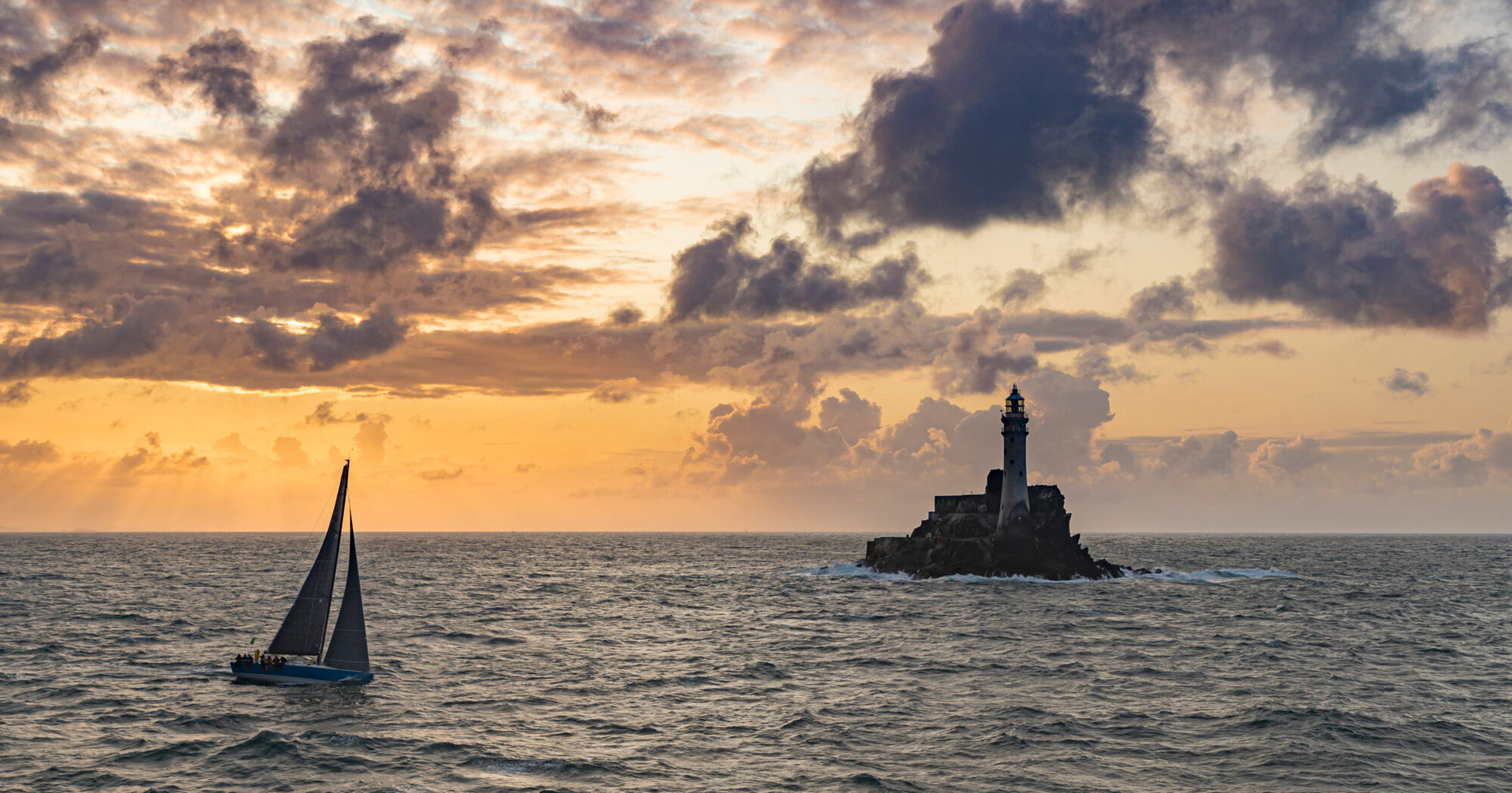
ROLEX FASTNET RACE 2021 PREVIEW
A NEW COURSE, NEW CLASSES, THE ROLEX FASTNET RACE ENTERS NEXT CHAPTER
The 49th Edition of the Offshore Classic Begins Sunday, August 8th
📸 Carlo Borlenghi/Rolex
The Rolex Fastnet Race is widely considered one of the most challenging offshore races by Corinthian and professional sailors alike. Local sailors learn about it at an early age and dream of one day competing in it. For the pros, it is a chance to compete with your best peers, and, if the weather is favorable, perhaps set a new course record. Registering for this offshore classic is so anticipated that the race “sells out” in less than an hour.
The 2021 race boasts a 350+ boat entry list and a new finish location, which tacks 87 miles onto the previous 608 nm racecourse. Now that both boat sizes and participation numbers have outgrown the original finish destination of Portsmouth, England, this year’s race will finish in Cherbourg, France.
“Cherbourg is the perfect venue for the finish of the race,” explained Race Director Chris Stone. “It has amazing facilities for competitors, berthing that allows us to grow and expand the event, plus the city is right on the doorstep of the race village. Of course, coupled with that is the enormous love for offshore sailing in France. That popularity brings interest and visitors to the city and the race village – it’s going to be amazing.”
The new course announcement has been met with mixed emotions, but the strategy looks like a success so far. Race participation is has increased by almost 20%, and the entry list reads like a who’s who of today’s best offshore teams: four newly launched Ultimes, race record holder Rambler 88, the newly launched ClubSwan 125 Skorpios, as well as Vendee Globe winner Yannik Bestaven and a handful of other IMOCAs. With 100% certainty of a new course record, the only questions are who, and how fast?
This year’s Fastnet includes the traditional race landmarks, and a handful of new navigation challenges. After sailing along the south coast of England and across the Celtic Sea to Fastnet Rock, the fleet then rounds Bishop Rock west of the Scilly Isles and heads to Cherbourg. As the race website puts it, “tactically it will place fresh demands on crews with a final hurdle of tackling the fast-moving currents of the Alderney Race before reaching the finish.”
One thing the race organizers could not forecast? The impact of planning a new route around a global pandemic. Race organizers in the UK and France have been working together to ensure they can adapt and accommodate the forever moving target of health and safety and cross-border logistical challenges. “We will continue to adapt in order to accommodate the finish of the Rolex Fastnet Race, as we have done since the beginning of the pandemic,” commented Jean-Louis Valentin, president of the Arrival Fastnet Cherbourg association. As far as the finish is concerned, we will be able to respond to several scenarios, in conjunction with the race management.”
At the time of publishing, the 2021 Fastnet fleet is expected to finish in Cherbourg. While it’s sometimes easier to cancel these events under the current constraints, all of us at North Sails (and sailing fans worldwide) applaud the Fastnet for getting boats to the start line.
The 49th edition of the Rolex Fastnet Race is scheduled to begin on Sunday, August 8th, 2021.
📸 Carlo Borlenghi/Rolex
READ MORE
READ MORE
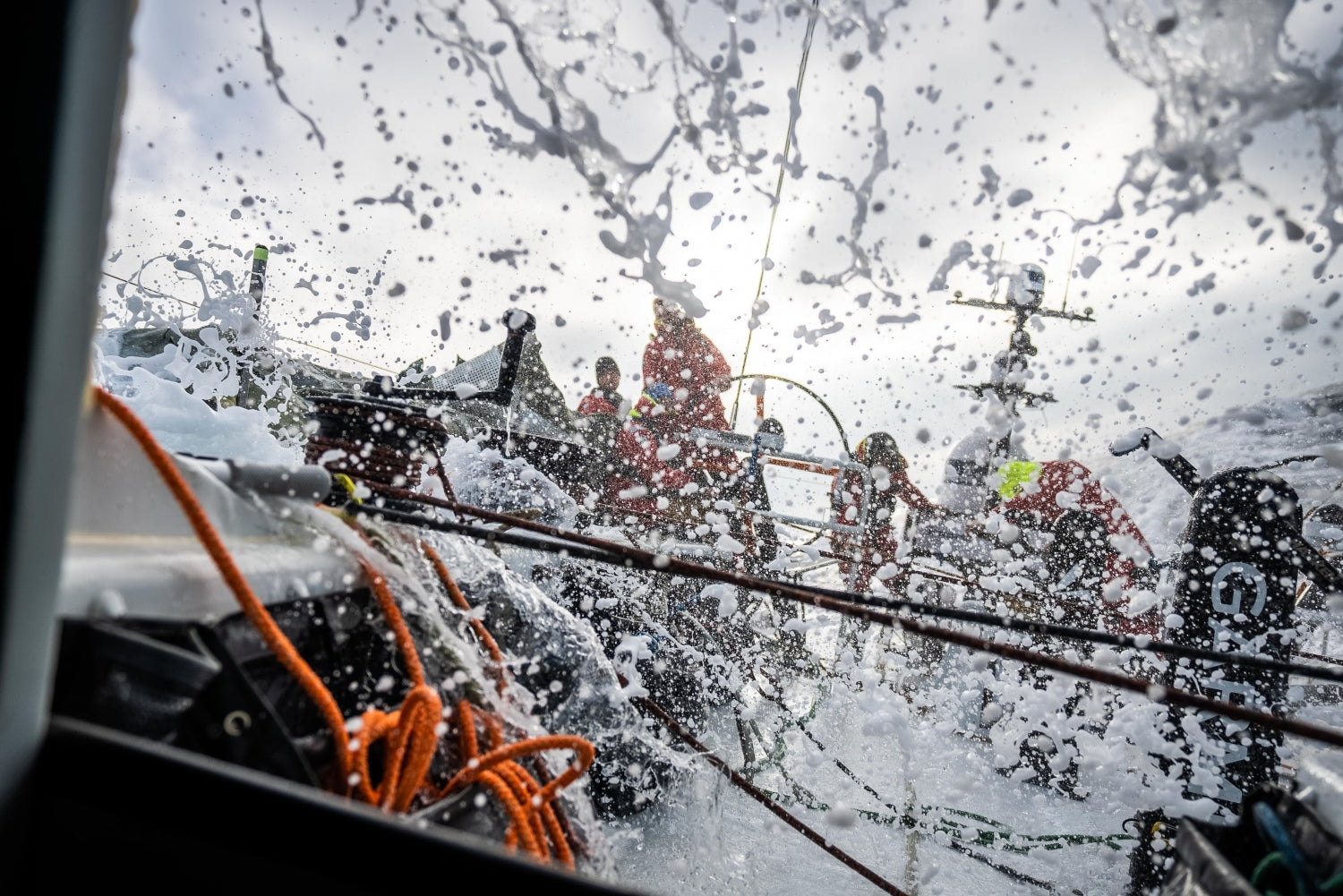
SEVEN OFFSHORE SAILORS YOU NEED TO KNOW
7 OFFSHORE SAILORS YOU NEED TO KNOW
We’d like to introduce you to seven names we have our eye on right now
Sailing is a multi-faceted sport, but nothing matches the salt-sprayed challenge of racing offshore for days on end. Sailors willing to test their own limits (mentally and physically) often compete well away from the limelight, so we’d like to introduce you to seven sailors we’re watching right now—and will continue to watch.
Each of these seven came to offshore sailing for different reasons, which reminds us of the range of opportunities within this challenging and exciting sector of the sport. Keep your eye out for more on these guys and gals, both here and on their own platforms.
Justine “JuJu” Mettraux
📸 Amory Ross / 11th Hour Race Team
Justine, a Swiss native, hails from Lake Geneva but she’s got more offshore miles than most. Now living in Lorient, France, her backyard is one of the most prestigious bodies of water for offshore training.
In 2013, JuJu finished second, overall, in the Mini Transat. After this success, she (and her sister) rounded out the all-female squad on Team SCA in the Volvo Ocean Race 2014-15. More recently, she helped Dongfeng win the Volvo Ocean Race 2017-18 becoming one of the first women to have their name on the trophy. This summer season she’s sailing as a co-skipper with Simon Fisher on 11th Hour Racing after having finished second in The Ocean Race Europe. Next up for the Swiss sensation? You won’t be too shocked– her dream is to sail the 2024 Vendée Globe.
To be honest, we’re not quite sure what impresses us more about Justine “JuJu” Mettraux– a CV that is enviable amongst the best in the sport or that she grew up in the mountains and is now out most in the sport . Who says you need to be sailing offshore before the age of five to be considered one of the most elite offshore sailors in the world right now?
Francesca Clapcich and Jesse Fielding
View this post on Instagram
A post shared by Francesca Clapcich (@francescaclapcich)
Clapcich is a one-design champion who is quickly becoming a top female offshore sailor. Born in Italy, she represented her country at the 2012 and 2016 Olympics (Laser Radial and 49erFX crew). After Rio though she began to shift her attention and focus to the big blue. In the Volvo Ocean Race 2017-18, Francesca joined Dee Caffari’s Turn the Tide on Plastic team. From this moment on she hasn’t looked back.
Francesca’s co-skipper is Jesse Fielding, an already established American offshore sailor. Jesse has been involved with some of the more well known offshore programs out there, including the Roy Disney (senior) project: Morning Light. After the Morning Light program, Jesse went back to school to graduate from the University of Rhode Island. He did a stint in finance in New York City but the sea continued to call his name; after a couple of months, Fielding hung up his suit and tie and put all his focus into his real dream: sailing around the world.
In 2020, when Francesca joined forces Jesse, they set their sights on becoming a strong American doublehanded team (Francesca emigrated to the United States in early 2020). This Italian/American duo have their own Beneteau Figaro 3s for this season’s solo races and then team up for the doublehanded events. Together, the two have gotten some pretty solid miles under their belts in the US and will soon start the infamous Solitaire du Figaro.
Conrad Colman
📸 Aiste Ridikaite/ Ambersail-2
Colman holds dual citizenship (NZL and USA), but he has lived in France for more than ten years as an important member of the offshore racing fraternity. As you can imagine, he’s not your average offshore sailor. Like the others, Colman has a bit of a unique backstory which includes a mountain biking business, a single backpack filled with his worldly possessions and a dream to sail solo around the world (ideally without fossil fuels).
And so, in 2007, his offshore sailing career began. It was a bit wild to say the least, taking many opportunities that would leave any seasoned professional with their jaw resting comfortably on the ground. “Business consultants would call these years extreme team building but I’d lay awake at night, despite crushing fatigue, hoping it wouldn’t end in disaster,” Colman once said.
But, the risks of his youth (like saying yes to the Barcelona World Race five weeks before the start) led to some incredible adventures and (eventually) the realization of his dream. His three circumnavigations include winning the Class 40 doublehanded Global Ocean Race; completing the IMOCA doublehanded Barcelona World Race; and finishing the 2017 Vendée Globe sans fossil fuels.
Probably one of the best words to summarize Colman is “resilient.” On the eve of his Vendee Globe finish, he dismasted—but instead of dropping out and starting his engine, he set up a jury rig, dug into his liferaft’s ration bag for sustenance, and pushed on. Colman sailed the remainder of the race under the jury rig and finished 16th overall. He is the first Kiwi to compete in (and now complete) the Vendée.
Most recently, Conrad competed in The Ocean Race Europe as navigator for Ambersail.
Clarisse Crémer
View this post on Instagram
A post shared by Clarisse Crémer (@clarissesurlatlantique)
Crémer is a young french star who had the great opportunity and responsibility of being the Banque Populaire skipper for the 2020-21 Vendee Globe Race. She was a formidable race rookie who set a new solo female around the world record when she finished the race in 87 days 02 hours and 24 minutes. Her smart and sensible approach paid off, besting Ellen MacArthur’s 21-year monohull solo non-stop record for a female skipper of 94 days 4 hours which placed Ellen in second during the 2000-2001 Vendée Globe.
Born in Paris, Clarisse now lives in Brittany, where she first caught the sailing bug. If you had asked her ten years ago, even Clarisse might not have imagined her record-breaking finish. That’s because in 2013, she tacked away from a path in the business world, “quit her day job” (as they say), and headed to Brittany for her next adventure as an offshore sailor.
While the Vendée Globe put her on a world stage, Crémer has been building an impressive collection of podium finishes. She finished second in the 2017 Mini Transat, a race that opened her eyes to the incredible freedom of solo sailing. From there, she went on to participate in the circuit familiar to many young French sailors; Offshore French Youth Championships, Rolex Fastnet, Défi Azimut, and the Transat Jacques Vabre.
She recently helped LinkedOut finish third overall in The Ocean Race Europe and win both inshore races.
Yann Riou
Riou is no stranger to our world. He is one of the industry’s most well-respected Onboard Reporters on the water these days. The age old saying goes “if it’s not on camera, did it even happen?” Well, Riou makes sure to prove “it” happened. As a result, the Frenchman has sailed around the world more than most, being a part of two winning Volvo Ocean Races and two World Record attempts. Riou is not fixed on around the world sailing though, also been onboard for several offshore record-breaking runs like Comanche’s dash across the Atlantic in 2016, an experience later showcased on CNN’s “Great Big Story.”
But, Yann is not just hired by these elite offshore sailing teams because he brings the world of offshore sailing to your laps, the man can also sail– and sail well. Yann can sail so well that he’s continuously included in around the world speed records. When racing for records offshore, a team can’t sacrifice weight so they need everyone to multi-task. Although he was limited to content creation during the Volvo Ocean Race, skippers feel confident with Yann’s onboard capabilities– the last thing a skipper wants when sailing offshore is a cameraman who doesn’t know port from starboard. Fortunately, Riou knows his stuff.
Jean Le Cam
📸 Vendée Globe
Le Cam is affectionately known as Le Rio Jean (King Jean), a nickname he earned due to ruling the leaderboard during his Figaro days. Le Cam is a fan favorite known for his navigational prowess, colorful personality, and passion for sharing the experience with both sailors and the general public alike.
A fierce competitor, Le Cam holds stories that are the stuff of ocean racing legends. Four decades ago, he was onboard with Éric Tabarly, France’s best-known yachtsman, during the 1981 Whitbread Round the World Race. King Jean has completed the Vendée Globe five times and finished second to Vincent Riou in 2005. In addition, he won the Barcelona World Race in 2015, and finished fourth in the 2020-21 Vendée Globe. And while his CV is indisputably impressive, it’s the stories from the 2008 and 2020 Vendée Globe that will see this 61-year old around-the-world sailor into the history books.
In 2008, 58 days into the Vendée Globe, Le Cam’s Open 60 lost its keel bulb and capsized 200 miles from Cape Horn. Vincent Riou sailed his PRB back upwind to rescue Jean from a capsized boat. The dangerous and challenging rescue mission took Riou four attempts before safely recovering his fellow competitor. In 2021, King Jean returned the favor when he rescued PRB-sponsored Kevin Escoffier after Kevin’s boat folded in half amongst strong winds and big seas 840 nautical miles SW of Cape Town. In a post-recovery interview, Escoffier was quick to mention his confidence in Le Cam; “as soon as I had seen Jean, I was sure I would be saved.”
All together now: Yes We Cam!
READ MORE
READ MORE
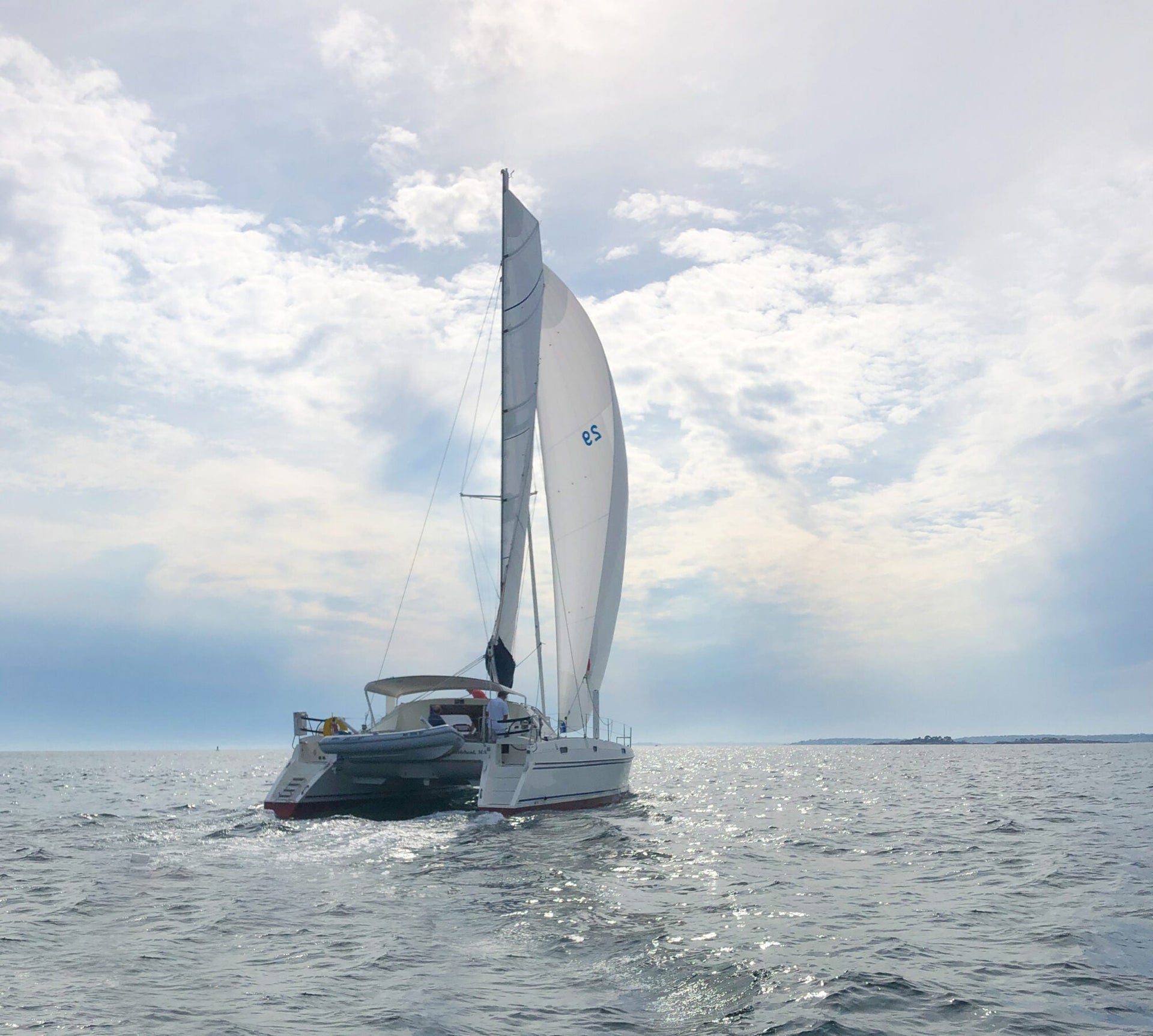
FIRST IMPRESSIONS OF THE HELIX FURLING GENNAKER
FIRST IMPRESSIONS OF THE HELIX FURLING GENNAKER – PURPOSE-BUILT FOR CRUISING
North expert Bob Meagher gives his first-hand experience and explains why you should consider adding this sail to your cruising inventory.
I’ve been fortunate to serve hundreds of cruising multihull sailors in the past 20 years, often with downwind sails designed to eliminate the terrible feeling of performance loss when these boats bear away under mainsail and genoa. Apparent wind, boat speed, and the sense of freedom all plummet when the upwind sail plan just can’t make the boat go past a certain point, and you can almost hear the engine key whispering, “turn me!”
Most owners have learned how cruising Code Zeros offer very convenient “ beam reaching” performance but require larger-than-zero asymmetrical spinnakers for sailing deeper angles. I was always happy to offer two sails to cover wind angles from close reach to broad reach/run. And while this is still the best choice for those wishing to have optimum performance over the greatest possible wind range (ie. long-distance cruisers), I’m honored to have been part of the North Sails development team for a new “single-sail” solution – the Helix Furling Gennaker. I’ve experienced the Helix Furling Gennaker on various catamarans, from high-performance cruising McConaghy 60 to a more traditional Lagoon 46. I have been thrilled to learn its benefits and satisfied with its inevitable limitations.
At the dock, you’d think you’re looking at a Code Zero. It lives up, and furled, on the bowsprit or bow, ready to deploy. Looking more closely, you see a very tight roll in the top third, an area where other Code Zeros can roll too loosely. Unlike standard Code Zeros, North designed the Helix Furling Gennaker to roll from the top-down, not the bottom-up, eliminating a loose furl toward the head that tends to catch the wind and sometimes even shake loose in a big breeze. And once unrolled and sailing, other differences compared to a Code Zero become clear.
A cruising Code Zero has a straight luff, supported by a thick (12mm – 19mm) cable in a sleeve up the luff, and a relatively straight leech, approximating a Genoa, but fuller. The Helix Furling Gennaker is cut more like an asymmetrical spinnaker, with a curved, forward-projecting luff and a rounder leech, resulting in a deeper sail, but one carefully designed to strike a balance. It has a very light, skinny, and flexible (8mm – 10mm) anti-torque cord running along the luff – but this cord has to carry only about half the load of an old-style luff cable. The sail itself features a structured luff to shoulder the other half of the load; allowing this lighter, smaller diameter cord to do a superior, trouble-free, job of top-down furling. When sailing closer to the wind, the halyard is tensioned tight like a Code Zero, enabling apparent wind angles of 70 degrees or a little better. The boat will perform exceptionally well when the sail is used like a traditional reacher (though the added shape in the sail does make it look a bit “knuckle-forward” when in Code Zero mode). It’s when you turn downwind that the real magic happens.
Our goal was to make a sail that can point and perform like a Code Zero, and furls easily like a Zero – but with a significantly deeper downwind range. Bear off with the sail’s luff pulled tight and the sail suffers from the exact thing Code Zeros do: it ends up blanketed by the mainsail, and power is lost. But this isn’t a straight-luffed Code Zero – it’s an especially agile Gennaker, whose superpower activates when easing the halyard and sheet. Easing the halyard, so the sail takes its “spinnaker” shape, transforms the luff into a large, positive curve, deepening the center of the sail. Easing the sheet simultaneously allows the whole sail to rotate to windward, capturing more breeze, undisturbed by the mainsail. What was previously a beam-reacher just became a powerful broad reaching sail. If you want to sail even deeper on a cat, you can move the furled sail to a pad-eye on the windward hull and unroll it there, gaining another 10-12 feet of windward projection.
We’ve sailed deep and stable to 125-130 degrees apparent wind angle (about 160 degrees true wind angle) in 18 knots of true wind speed. We didn’t need to sail above 90 degrees AWA in that much breeze because at that angle and higher, the main and genoa drive the boat just fine. When sailing deep with the halyard eased, the head will have a mild tendency to move around a bit. We experimented with achieving the same luff projection by allowing the tack to raise, but this meant allowing the furler itself to rise to maintain furling ability. It doesn’t make sense to have the furling unit bounce around two to three feet up in the air.
Furling the sail does require a bit more attention than furling a cruising Code Zero. The thumb-thick cable in a code zero is always pretty tight, and it’s a skinny sail without much roach in the back, so furling a Zero can be almost as simple as a genoa (as long as you take care to not let it get too loose up top). With the Helix Furling Gennaker, the halyard should be re-hoisted fully, if it had been eased for broader angle sailing. A firmer halyard/cord transmits torque to the head better, and even more critically, a loose cord could be damaged if it kinks at the bottom when furling. Simple advice: get it tight before starting the furl. With larger sails of this type an electric winch is almost mandatory – not because there’s extreme load on the furling line, but due to the much greater number of rotations needed to furl a top-down system versus a bottom-up. Finally, unlike a straight or hollow-leech code zero, there’s more area toward the leech of a Helix Furling Gennaker, so you will want to keep an eye on the leech to ensure it furls without folding under or over on the way into the roll. If it does, stop furling and trim a bit of sheet — it will unwind some of the sail, and you can ease it back and try again. Learning the relative sheet tension to use when furling takes a time or two, but it’s pretty straightforward. And remember, if you’re furling in a hurry, ignore “neat and tidy” and just roll it up if you need to get the sail away.
By far, the most gratifying successes of these sails came after I left the boat. All these owners sail with few crew – usually it’s just a couple enjoying their retirement, not interested in hassle. Following up with each of my clients some weeks later, I was thrilled to hear that the sails worked as well for them as they had during our trials. They remembered to tighten the luff before furling, had determined the ideal sheet tension when rolling the sail in, and were already playing with relative luff tension at various points of sail to get the most out of the sail. For each, gone are the days of struggling to get a large asymmetrical up out of a bow locker, or going forward in too much breeze to struggle with a snuffer sleeve on a pitching deck. Instead, the Helix Furling Gennaker offers a single-sail, from-the-cockpit solution, for sailors wanting more power. This is a terrific new sail type for a wide array of different boats around the world.
READ MORE
READ MORE
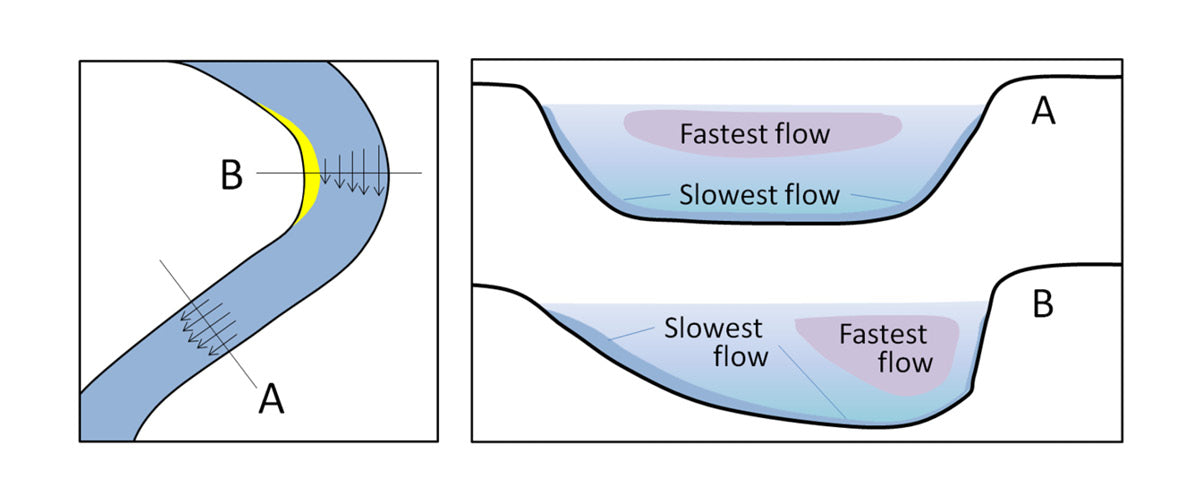
HIRW: RACING PREPARATIONS
HAMILTON ISLAND RACE WEEK: RACING PREPARATIONS
Be Ready For A Variety Of Conditions
Hamilton Island Race Week provides plenty of conditions that provide challenging sailing for all types of boats. The wind swirls around the islands and the water funnels down passages and taking these local effects into account is both an essential tactical tool and great fun. While the wind is difficult to predict even a short distance ahead, the movement of water, being directly related to the positioning of the sun and the moon around the earth, can be predicted with great accuracy well into the future. This provides a good opportunity to familiarize oneself with the anticipated flow patterns around the islands during each race and can be done well in advance of even arriving at Hamilton Island.
I find that it helps to visualize the movement of the water around the islands and to aid this visualization it is useful to review a few basic principles of how water responds in certain situations.
Because water is relatively heavy it has a high inertia. That is, once it has started moving it wants to keep moving and keep moving in the same direction. This means that if there is a bend in a channel then the current will run strongest on the outside of the bend.
When an obstruction is put in its path the volume of water flow cannot change, so the water must accelerate to compensate for the reduced flow path denied it by the obstruction.
Typically, tidal flow is slower in shallow water, than deeper water.
Downstream effects are much more pronounced than the upstream effects. An extreme example of this is seen at a waterfall. Upstream of the falls the water can be calmly meandering along in an almost unnoticeable flow, but upon the water reaching the edge it cascades down the face in a catastrophic flow that continues a great distance downstream.
Now let’s look at some aspects of the tides in the Whitsundays. The tidal currents in the Whitsundays generally flow parallel to the coast of Queensland. So, it floods to the SE and ebbs to the NW.
The tidal range increases the further south one travels. That is, Thomas Island in the south has bigger tides than Hayman Island in the north. This translates into stronger tidal flows in the south when compared to the north. The tide turns slightly earlier in the north than in the south, so have a good look at the tide tables that are applicable to your race area. The BOM has 2021 tidal predictions available for download for Hayman Island, Shute Harbour, Cid Harbour, and Thomas Island.
The tidal streams will generally turn between 10 and 30 minutes before the time of high or low water. This may vary with atmospheric pressure, and duration and intensity of the prevailing winds and can be difficult to pick exactly but is nonetheless critical to watch for. Times of tidal change is particularly important in deciding when to cross the Whitsunday Passage. Look up and understand the “Rule of Twelfths” which gives a simple prediction for the flows during a typical 12-hour tidal cycle. If the tide is in the first part of the cycle it may be better to cross early, whereas if the tide is in the latter part of the cycle it may pay to work up the side you are on and cross later when the stream has decreased.
Look at the tidal range between high and low tides. The bigger the difference the stronger the flow and the more significance the currents will have. When you get to Hamilton Island a good place to put to practice your visualizations is right in front of the marina in the Dent Passage where the Dent start/finish line is located. Sail around exploring the currents (being careful not to intrude on the runway exclusion zone) and practice a few of the following situations likely to occur during the week.
Starting in a flood, the current will be flowing south down the passage. Because the area upstream is fairly open the strongest flow will be in the center and can run at 2 – 3kts, so it is important to stay close to the line or risk being late for the start. Titan Island projects into the flow on the west side and there is a small submerged spit just north of the Yacht Club on the east side. Look for the small back eddies on the south side of both these intrusions.
Starting in an ebbing tide, the flow is to the north. Cowie Island at the center of Dent Island and the airport runway extension into the passage both influence the currents markedly. If you look at the depth contours on the chart you will see how the western shore to the south of Cowrie Island has been scoured out by fast-flowing water. This fast flow is then constricted at Cowrie Island and is directed to the NE. This constriction and acceleration produce quite a narrow river of water aimed at Hamilton Island which in earlier days would have run along the eastern shore of the Island. However, with the construction of the runway extension, this river of flow is now deflected NW. This makes for a strong concentration of flow near the middle of the passage which decreases slowly toward the western side but decreases quickly into a back eddy in the current lee of the runway at the marina entrance. Great care is needed not to be swept across the start line early with the ebb. When finishing from the south this rapid change of current direction from NE at Cowrie Island to NW at the runway coupled with a geographical wind header coming down the runway usually provides great entertainment for onlookers as boats struggle to make the finish limit mark while trying to hold their spinnakers.
Finishing from the north with a flood tide is relatively straight forward but finishing from the north with an ebb tide is a little trickier as the river of flow off the runway extension fans out evenly across the passage as it moves north and there is no easy escape route. Throughout your practice look for clues on the water surface that might show what is happening with the current. Wind against current produces choppy water while wind with current produces calm-looking water. Look for current indications on the mooring buoys by the Dent shore. Watch the movement of the land across your bow as you head across the passage. Every available resource should be used to spot where the current might be accelerating in your favor or where there might be a back eddy to be used against the general flow.
Be aware that current patterns will change depending on the state of the tide. Flow around a rock that is awash at low tide will be very different from when there is 4m of water over it at the top of the tide. This is what makes reading the currents such an interesting exercise. Potential current gains from close inshore back eddies also need to be balanced against potential losses from island wind shadows. A prime example is when beating down the western shore of Dent Island in an ebb tide. With the current flowing NW, there is good relief to be had along the shore by tucking into some of the small bays, particularly north of the lighthouse, but there are also some very light patches of wind and big shifts because this area is in the lee of the island.
Despite the likely benefits of getting very close to the shore to avoid the tidal flow, don’t get too greedy. There are numerous rocks and bommies which are not necessarily marked on the chart which you might pass over one day, but not be so lucky the following day at a slightly lower tide. When it comes to regatta time, before every race, as part of your race briefing, it is a good idea to show all the crew a laminated chart of the race area and draw in the currents expected during the race and show how they will change with time. Time spent understanding the currents for the regatta will not only benefit your race results but will also increase the participation and enjoyment of all the crew.
READ MORE
READ MORE

#NSVICTORYLIST: TRANSPAC 2021
#NSVICTORYLIST: TRANSPAC 2021
Winning the 51st edition of the race from all angles
41 boats raced the 51st Transpac, and at first glance, especially for the Grand Prix boats, it was a pretty straightforward boatspeed race down the great circle rhumb line. Digging a little deeper, though, each division’s winning approach depended on the boat’s best downwind mode: from heated apparent wind angles for newer designs, to the more traditional dead downwind surfing that has always made the Transpac such an epic adventure.
First, though, the fleet had to get upwind around Catalina and as far north as possible—at least that was the plan on the TP52 Warrior Won, winner of the First to Finish Merlin Trophy (all manual power) and the King Kalakaua Trophy (first to finish on corrected time). Owner Chris Sheehan says they won the race by splitting from the pack early on and taking a more northern route. For this stretch, Warrior Won found power with their 3Di main and 3Di square head jibs, a unique design choice for a TP52.
“The other boats were getting very giddy under spinnaker, sailing low and fast,” Sheehan said. “In general, you want to get low to avoid any chance of touching the Pacific high just north of rhumbline. We were confident that it was a short term pain for long term gain, and there was enough breeze to stay very close to the rhumb line.”
Once the wind went aft, they jibed onto port. “We were behind the entire fleet of boats in our class, but we came down on them like thunder, going thirty percent faster on a better angle toward Hawaii. And that sends a signal: that, soon, you’re going to be in our rearview mirror for most of this race.”
After that, Warrior Won kept the pedal to the floor. “Planing is what allows us to correct out over non-planing boats,” Sheehan explains. “25 knots of breeze is the absolute sweetspot; we can sustainably sit at 23 knots of speed.” They were the third boat to finish off Diamond Head, a fantastic result for Sheehan’s first Transpac.
Sailing Hot, Hot, Hot
First to finish was Pyewacket 70, a modified Volvo 70 owned and sailed by Roy Disney. They were fully committed to apparent wind sailing; with true wind angles of around 145, the apparent wind would quickly clock forward to 70 degrees. Pyewacket used their new gear: triple-headed 3Di Helix headsails to win the Barn Door trophy for first to finish, combining either an A2 or A3 up front with a J4 in the middle, and an inner reaching staysail closest to the mast.
North Sails expert Brian Janney says, with this set up, they managed to fit in some quantified sail testing during the race. “We figured out the A3 is actually 5-6 percent faster in 14 knots of breeze, which we thought would be in the heart of the A2. The flatter sail is just more forgiving to drive in waves, with a larger groove. You can go lower without it collapsing on you. If we had to do this race again, we might have left the A2 on the dock.”
They also took a slight detour to set a new race record for a 505.75-mile run in 24 hours. “We did the math and figured out we couldn’t drop down or move up in the standings,” Janney explains. “And the weather was looking good. So we took a poll and Roy said, ‘let’s do it.’” Instead of jibing down the rhumb line with the rest of the fleet, Pyewacket only completed one jibe during the 24 hour record run. “If you stay on a straight line, you get a better chance of covering more miles” in the same time period, Janney points out.
Though Pyewacket finally chased down Ho’ohkolohe (the Division 8 winners, who’d started five days earlier), they could not save their time on BadPak for the Division 1 win. BadPak also embraced the hot-angle approach, with a new 3Di mainsail that North Sails expert Jon Gardner calls “absolutely glamour” and a few bow-up reaching sails. The R2 (an overlapping “genoa” on a furler) went up as soon as they rounded Catalina, and he says they probably left it up a little too long. “Then we went to our fractional zero, and then the A2.5.” They’re still learning the boat’s optimum angles, he admits, because owner Tom Holthus only took possession of this boat in March. “We’ve been preparing for Transpac all spring and summer. We did pretty well for our first race.” Gardner was also aboard in 2019 for a division win on the previous BadPak (a Pac52). “It was great to repeat,” he concludes.
Deep Down True
Peligroso, a Kernan 68, won division 2. North Sails expert Patrick Murray was onboard for his sixth Transpac, and he calls the boat a “souped-up sled, a unique kind of tweener boat.” Driving the boat, he says they made their biggest gains by “cutting the corner” and sailing lower angles than their competition. “You have to relearn how to keep it going fast downwind. Mast vertical, a symmetrical bow wave, 160 apparent, and just plugging straight into the wave in front of you. You don’t turn, you just push through; it’s a very different mode of sailing. A lot of us were used to pushing the bow up, but the boat just loads up and didn’t really like that. So we had to buy in as a team to that lower mode, and concentrate on keeping flat with consistent pace. That’s where we would make major gains, because the other boats were sailing higher angles and extra distance.”
Classic Transpac
No matter what angle each boat sailed, all the sailors mentioned the joy and challenge of riding epic Pacific waves for days at a time. And almost everyone had some sort of boat breakdown, or spinnaker blowup, or both—though Jon Gardner said the boat captain on the R/P 63 GoodEnergy made a special point of finding him after the race was over, to thank him for their trouble-free inventory. “He was so appreciative of what we delivered as a company. They had no failures, and just absolutely loved the sails. Steve Calder did the designs, and not one came back to the loft for any type of recut or adjustment or anything. They just clobbered us on the last day, coming into Molokai, and beat us boat for boat. They just had a fantastic race.”
Patrick Murray says he has more respect for the Transpac every time he sails it. “We always talk about trying to be prepared, but nobody sails these boats in conditions like this until you come to the race. It’s beautiful in the open ocean, and the conditions are just epic.”
READ MORE
READ MORE

TOKYO 2020: 8 OLYMPIANS TO WATCH
TOKYO 2020: 8 OLYMPIANS TO WATCH
We wish everyone a PB (Personal Best) at the Olympics!
📸 Sailing Energy / World Sailing
As athletes get ready for a much-anticipated Olympics, it’s even harder than usual to guess who will be stepping onto the podium this time around. The only prediction we feel completely safe in making is that we’ll have a plenty of new entries for the #NSVictoryList. Here’s a little background on 8 favorite Olympians we’ll be watching when the Games begin.
Giles Scott GBR (Finn)
The 2016 gold medalist dominated the entire Olympic quad leading up to Rio, so Giles has to be at the very top of our list. Calling America’s Cup tactics for former Finn rival Ben Ainslie on the foiling Ineos Team UK has undoubtedly honed already fast reaction times, and afterward this versatile sailor stepped right back onto the Finn podium with a silver medal at the 2021 Europeans—though he did have to “settle for second.”
Alex Maloney and Molly Meech (49erFX)
📸 Graeme Murray/Red Bull Content Pool
Kiwis Alex and Molly both grew up on boats and both sailed around the world before the age of ten. When the 49erFX class was introduced into the Olympics roster for the 2016 Rio Olympics, the Kiwis began sailing together full time. It paid off when the dynamic duo won a silver medal at Rio 2016. To get ready for Tokyo, they’ve been taking advantage of New Zealand’s Millennium Institute of Sport state-of-the-art heat chamber—and also doing the occasional sail after dark, to test their non-visual senses.
Watch their story on RedBull.com
Matt Belcher and Will Ryan (470M)
After training at home in Australia for the past year and a half, the 2016 silver medalists Matt Belcher and Will Ryan have not yet posted any international results. That said, Matt already knows how to win 470 gold (2012, with Malcolm Page), and he’s also won a record-setting seven 470 Worlds. Back in 2000, he won the 420 Worlds, a reminder of that class’ importance as a feeder to the Olympic 470.
Hannah Mills and Eilidh Mcintyre (470W)
Hannah Mills (GBR) won gold in 2016 and silver in 2012 with crew Saskia Clark. She and first-time Olympian Eilidh Mcintyre won the 2019 Worlds in Enoshima, which turned out to be the last 470 regatta held on Olympic waters ahead of the Games. After a rough start at the 2021 Worlds, they took the last three bullets before the medal race and finished fifth overall. With an entire fleet of North Sails and both 2016 medal-winning skippers sailing with new crews, this will be an especially fun battle to watch.
Josh Junior (Finn)
Josh finished seventh at the 2016 Rio Olympics and joined the winning America’s Cup Team New Zealand shortly afterward, along with close friend and Finn tuning partner Andy Maloney. In 2019, he became the very first New Zealander to win a Finn Gold Cup. Andy won this year’s Gold Cup, while Josh finished third, so awarding the country’s single Olympic slot must’ve been a very tough call. With Andy as his primary training partner, Josh will be well-prepared for the pressure-cooker uncertainties of Tokyo.
We’re looking forward to watching all the 2020 Olympians adapt to the special challenges of this year’s competition, which runs July 25-August 5. Let the Games begin!
READ MORE
READ MORE
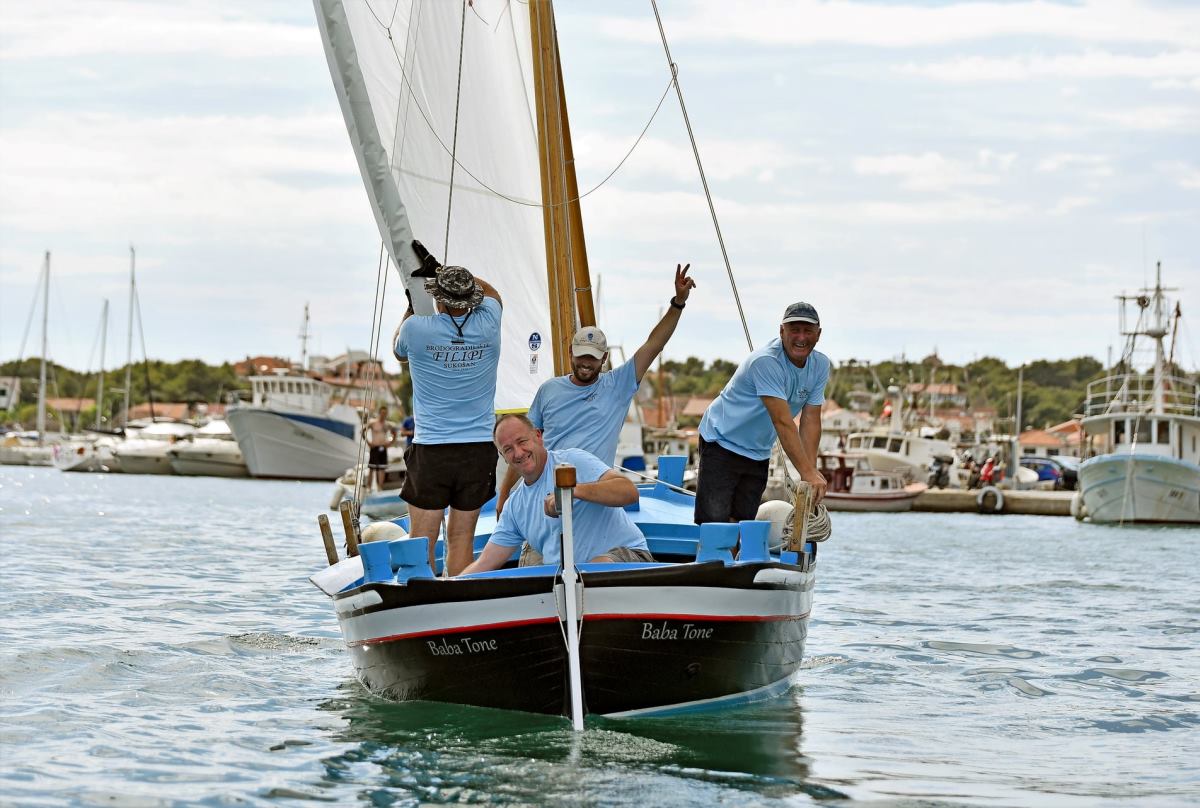
NASMIJEŠENI NS KLIJENTI NA 10. JEZERSKOJ LANTINI
Nasmiješeni NS klijenti na 10. Jezerskoj lantini
Foto: Igor Turčinov Stijić
U nedjelju 18. srpnja završila je ovogodišnja manifestacija Jezerski dani mora s 10. izdanjem regate latinskog idra, ujedno prvom ovogodišnjom regatom tradicijskih jedrilica na Šibenskom području.
Program u Jezerima krenuo je u utorak 13. srpnja otvorenjem izložbe fotografija Boška Lučeva s temom tradicionalnih barki na latinsko idro, a među kojima je bilo i fotografija snimljenih na ranijim izdanjima ove regate.
U srijedu se održao "Koncert na gajeti", pa dan kasnije tematska likovna radionica za djecu, a u petak su gajete ponovno bile glavni akteri, ali ovog puta na veslačkoj regati. Organizirala se muška i ženska veslačka regata sa simpatičnim nazivom "Svon forcon na četiri vesla".
Na veslačku regatu prijavilo se 14 posada s cijelog Murtera, a možda najzanimljivije je da je ženskih posada bilo čak 10, dok su se samo četiri muške ekipe odlučile za ovu disciplinu. Uglavnom, među ženskim posadama pobjedu odnosi ekipa imena "Cool bebe" s gajete Kalamita, dok je među malobrojnim veslačima pobjedu odnijela ekipa na gajeti Godulica na kojoj je veslao tim "Škver Ćiro".
U subotu se organizirala gastronomsko - enološka "Slovenska večer" u suradnji s prijateljima Jezera iz Slovenije i u veselom tonu se stiglo do finalnog događaja, 10. Jezerske lantine.
Foto: Igor Turčinov Stijić
Posade su se dočekivale na Velikom mulu od 10 sati ujutro, dok su se prijave zaprimale do 14 sati, da bi start uslijedio u 15:00. Flota je u ogromnoj većini bila sastavljena od gajeta, među kojima su bila samo dva leuta i tri kaića.
Start je postavljen ispred ulaza u jezersku luku. Cijeli dan je puhala bura po kojoj je ipak bilo moguće rastegnuti lancanu na koju su se gajete, leuti i kajići vezali krmom sa sidrima bačenim ispred, u smjeru jedrenja. Tu se posložila 31 prijavljena posada, a nakon startnog signala jedrili su prema otočiću Hrbošnjaku, pa Dražemanskom, Maslinjaku, Ljutcu i natrag u Jezera s ciljem postavljenim između "đige" ACI marine s jedne strane i kopna s druge.
Da je na moru bilo stvarno zanimljivo posvjedočio nam je ovogodišnji pobjednik, vlasnik i kormilar gajete Baba Tone, Dario Filipi:
Na startu smo bili na lošijoj poziciji. Stali smo više niz buru, bliže plaži, jer svi favoriti su se dali više na buru gdje je bila bolja pozicija, pa smo očekivali da će tamo biti veća gužva i da će se vrlo lako dogoditi neka zapetljavanja.
To je vrlo bitno na svakoj našoj regati, da se dobro starta i da se izvućeš do prve bove među prvih 5-6.
S obzirom da je vjetar bio dosta zeznut s obzirom na mjesto gdje smo bili, izvukli smo se stvarno dobro. Po mojoj procjeni puhalo je dvanaestak čvorova, a na refule je sigurno bilo i više.
Poslije starta išli smo do sike pored južne punte otoka Murtera i tu kako je puhala bura jedrili smo s njom u bok, u stvari negdje između boka i pola krme. Kako je bilo dosta vjetra svi brodovi su išli dosta dobro i tu smo se dosta dobro držali, bili smo među prva dva, tri. Međutim, tu do Hrbošnjaka veći i masivniji brodovi s većim jedrima su nas počeli stiskati.
Među njima je bio i lanjski pobjednik, Tomislav Bašić, jedriličar iz Zadra. On je jedrio na gajeti s Preka koju je radio Mile Pile u Betini - Baba Majo.
Taman su nas uhvatili oko Hrbošnjaka, kad smo se okretali. Mi smo tu bili oko 5. ili 6. mjesta.
Nakon toga smo jedrili u orcu prema kopnu, da bi uhvatili ovu drugu siku gdje je svjetionik, Dražemanski.
Tu smo dosta dobro procijenili gdje trebamo virati da bi iz iduće bordade odmah uhvatili tu siku, drugu bovu. Bašić i još neki koji su ga pratili su prerano napravili burtiž (virali, op.a.), pa su kasnije morali napraviti još jedan na drugu stranu, a mi smo tu pravovremeno okrenuli i tu siku prošli u knap.
Tada su ovi što su bili ispred nas išli još više pod kraj od straha da neće uhvatiti Dražemanskog i od straha da ga neće uhvatiti kako treba otišli previše naprijed i napravili viška puta.
U toj grupi je bio i Fržop, on je ove godine jedrio u gajeti Modravka Ognjena Jakovčeva. Za njima su bile Bodulica, Sirotica, Marina Betina, Lipa moja... i mi smo tu stekli dobru prednost.
Do iduće oznake jedrili smo isto u orca, vjetar je bio tu negdje između orca i boka i do nje smo uspješno držali prednost.
Poslije smo ukrmili i u cilj ušli s vjetrom u bok, oko 50 metara ispred drugog, trećeg, četvrtog i petog. Oni su svi zajedno uplovili u cilj.
Sirotica je cijelo vrijeme bila na krmi Godulice koja je završila na drugom mjestu. Tu je bilo napeto cijelo vrijeme. Sirotica ju je pokušavala proći s privjetrinske strane, ali Godulica joj to nije dozvoljavala.
Dok su se njih dvoje tu nadmetali to je iskoristila Baba Majo i izbila na treće mjesto, te je Sirotica u borbi za drugo izgubila i treće.
Stvarno su bili odlični uvjeti za jedrenje, vjetra taman koliko treba. Možda smo samo jednom zagrabili, iznenadio nas je jedan reful kad smo već bili blizu cilju, kad smo se opustili. Uglavnom, ovo novo jedno koje smo nabavili za ovu sezonu u North Sailsa odradilo je izvrstan posao. I na Ugriniću, na Pašmanu pokazalo se izvrsnim. Zadnju oznaku smo okrenuli peti, a na kraju smo regatu završili kao drugi s tim da smo prvo mjesto izgubili za dužinu broda. U orcu smo se s ovim jedrom izvrsno dizali i hvatali smo ove koji su bili ispred nas.
Dario Filipi, Baba Tone
Inače je Dariju Filipiju ovo druga pobjeda u gajetama, prvi put je pobijedio na regati "Vanka škvare" u Betini, regati na kojoj jedre samo gajete. A posada koja je pomogla Dariju da dođe do pobjede u Jezerima bila je u sastavu Guliano Šeparović (Filipi), Ljubo Zrilić (škver Filipi u Sukošanu) i Boris Lazić, iskusni kalafat.
Foto: Igor Turčinov Stijić
Kompletne rezultate regate možete pronaći na ovom linku, dok na Facebook stranicama Turističke zajednice Jezera posvećenim Jezerskim danima mora možete pronaći bogatu fotogaleriju Igora Turčinova Stijića.
Za ovo ljeto trenutno su potvrđeni još "Latinskim idrom na kureja" na otoku Zlarinu 25. srpnja, "Regata za dušu i tilo" u Betini 15. kolovoza, te "Šepurinski burtiž" 22. kolovoza, dok će veliko finale biti na murterskom "Latinskom idru" najavljenom za 29. rujna. Također se šuška o tome da će i Tišnjani kao jedino Murtersko misto bez regate napokon organizirati svoj event, a da su za to predvidjeli 8. kolovoza.
READ MORE
READ MORE

2021 IC37 NATIONAL CHAMPIONSHIP
2021 IC37 NATIONAL CHAMPIONSHIP
Pacific Yankee Takes the Title
📸 Melges Performance Sailboats / Felipe Juncadella / UP TOP MEDIA
Three days of offshore buoy racing tested IC37 competitors at the 2021 National Championships, and the last race of the event determined who would take home this year’s National title. Drew Freides and Bill Ruh’s Pacific Yankee made only one major mistake (race 6, an OCS) and were the swiftest boat out there, racking up only 15 total points after seven races and one discard.
Skipper Drew Freides says they pride themselves on having a really good team. “We’ve got the crew work down pretty well. But it’s more of shifting gears and always keeping the boat going fast . I don’t think we’re faster than anybody, but we’re better at getting up to top speed more quickly.”
John Brim’s Rima improved each day which put them in second overall with 22 points. John commented, “This is our first full season with a steady crew, and we feel like we’re learning how to sail the boat.”
Jay Cross, Ben Kinney, and Hannah Swett’s Members Only showed great speed and perseverance, taking third overall with 30 points. In fourth was team Sertl on Das Blau Max, with the most consistent scoreline of all teams, throwing out an 8th place with a total of 35 points. Close behind with 39 points was Peter McClellan’s Gamecock.
📸 Morgan Kinney / IC37 Class Association
Like all one designs, time in the boat was vital. All boats in the IC37 fleet are set up identically, so it’s up to the crew to adapt to changing conditions and how that affects each role. Here are some tips to help you at your next event:
Communicating boat speed out of tacks. The main trimmer can communicate this to the crew so they know when the boat is up to full speed. This helps the helmsman know when to put the bow down, and allows the runner and the jib trimmers to coordinate trimming efforts. This is not only crucial to starts but can be big in port/starboard crossing situations.
Get familiar with your mast settings. Adjusting the mast shims is crucial for maintaining boat speed and set up as conditions change. Depending on how much power you’ll need and the wind speed you add or remove the mast shims which control shroud tension and headstay. If the headstay tension isn’t right you’ll have a hard time going upwind at full speed.
Boat Handling & Crew Communication. From the beginning of the race to the end, there should be constant conversation about what is happening. Mainsail trimmer communicates to the runner trimmer when more power (or less) is needed. Jib trimmers are listening in, making sure they can adjust leads if needed for more power in the foot, and where they are as far as trim angle with where the leech hits the spreaders. Designating one person to communicate crew weight downwind with wave state was huge and big gains were made on jibes and working up and down on the waves.
Congratulations to Chris Culver’s Blazer II for qualifying for the NYYC Invitational Cup which will take place later this year.
Big thanks to Moose McClintock, IC37 fleet coach. His support for the class and sailors has been above and beyond. The daily debriefs have been helpful, and the feedback he’s provided to teams on the water has helped elevate the competition and contribute to the class’s success.
FULL RESULTS
📸 Melges Performance Sailboats / Beigel Sailing Media
READ MORE
READ MORE
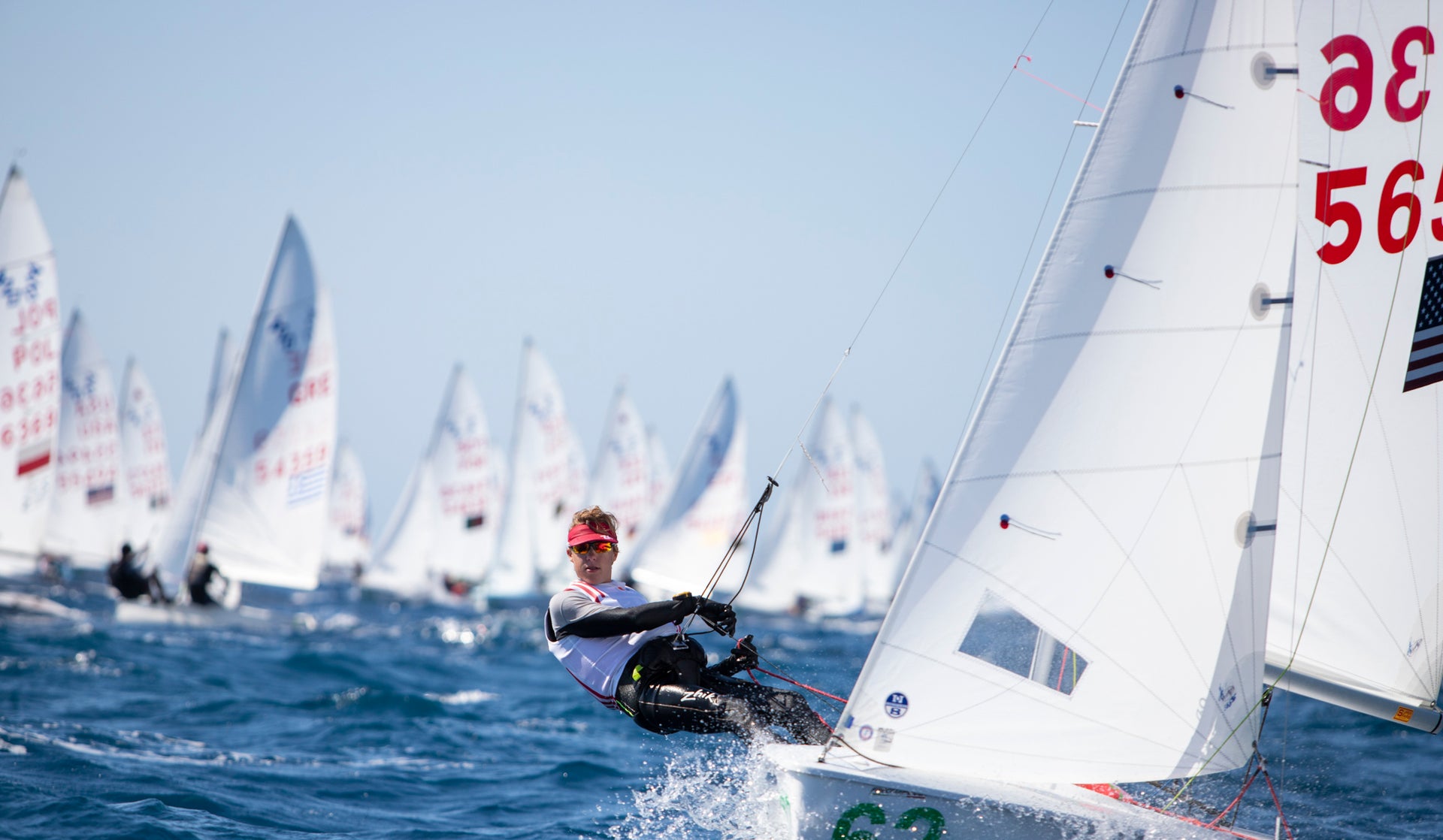
DESIGNING WORLD CHAMPIONSHIP WINNING SAILS
WOLRD CHAMPIONSHIP WINNING SAILS
Results are a culmination of many years working behind the scenes
📸 Andrea Lelli
Whether it’s the World Championship or a local Wednesday night, here at North Sails we thrive on seeing our clients at the top of the leaderboard. These results are a culmination of many years working behind the scenes: sail design; material selection; on the water testing; and developing accurate tuning guides. With one design sails in particular, the North team must work within strict class rules to model the masterpiece.
The most recent example of “everything coming together” is the 2021 420 Worlds, where North-powered teams swept the Mens-Mixed Division podium and claimed the majority of top three finishes in the Women’s and U17 divisions North Sails offers an extensive lineup of 420 sails, and the race results were not dominated by any single model. We asked two onsite North Sails experts to explain why so many different sail designs achieved such great results.
North Sails One Design expert Tom Sitzmann says that all the North Sails 420 designs are capable of winning. “It’s a question of the best fit for each particular team’s sailing style and weight. The best sails are easy to trim well, are consistently built, and offer durability. So you need to buy North Sails, because we have the sailing and design expertise, dedication, and passion to find the best fit for you.”
North Technology Group CEO Tom Whidden was also on the water in San Remo, cheering on his grandson Thomas who crewed for Freddie Parkin and took the world title in the U17 division. With his sailmaker’s eye, Tom shared his observations:
“The M-11 and M-9 are both very adjustable and very flexible from 0-18 knots, more than the Zaoli sails I observed—and even more dominant compared to the Olimpic sails in anything above 12 knots. All three sailmakers had jibs with similar twist profiles, although the non-North sails seemed to stretch more on the breezy day…..and consequentially, had less twist.”
“I thought North had the greatest edge downwind,” Whidden added. “North spinnakers project better, with slightly less curvature in the upper leeches. Both Sitzmann/Woodworth and Parkin/Whidden were able to sail deeper in all breezes.”
📸 Andrea Lelli
The Sail Design Loop
Both Sitzmann and Whidden were quick to compliment North Japan, which has dominated the 420 and 470 classes for two decades. Masanobu Katori (known as Nobu) is very busy preparing for the Olympic Games, but he took time to explain how important the 420 class is to Olympic 470 development.
“In the upcoming Olympics, 100% of the 470 Women use North Sails exclusively, and 16 of the 19 Men’s teams have our sails. In the 420 class, many of the coaches are ex-470 sailors. Australian gold medalist Mathew Belcher tested our 420 sails to provide the crucial feedback during the product development cycle. Our sales manager, Kei, has been developing vast connections between the 420 and 470 class. So they know us and our products, and how well we can support their teams.”
Nobu says that 420 sail design is approached in the same methodical way as a Grand Prix program. “We have developed Spiral for dinghies, the same North Design Suite tool used for America’s Cup projects. We redesigned our two-boat testing system to suit small boats so we can better evaluate straight-line speed; to develop better designed sails, it is necessary to distinguish performance from race results. Of course, easy handling is also a key factor.
📸 Andrea Lelli
“For good design, it is crucial to have good feedback. Based on that feedback, we re-design a sail, then manufacture and test it. The more you run this circle, the better sails you can have. People assume that in such an established class, there isn’t any room to develop. But every time you do this, you find something new—the cycle is never-ending.”
Sailors and coaches are a critical piece of this development loop, Nobu insists, though sometimes the words they use are different from a sailmaker’s. “Fortunately we have a team with experienced people, so we can discuss what they’re feeling and then follow a logical redesign path. Then it is easy to track and re-route the path if the sail does not perform as expected.”
The end goal is not to have a secret weapon, Nobu insists; it is to continue to improve the sails so 420 sailors can be confident in their speed. “This confidence is the big deal for every race, and we have been trying to provide it with good sails.” So whether it’s a 420 Worlds or your next Wednesday night beer can race, we’ve got the right sails for you.
📸 Andrea Lelli
READ MORE
READ MORE

WHAT IT TAKES TO WIN THE 420 WORLDS
WHAT IT TAKES TO WIN THE 420 WORLDS
North Sails Sits Down with Lior Lavie, Coach of Team USA
📸 Andrea Lelli
The chatter about the 420 Worlds kicked off in the North Sails offices on the second to last day of the regatta. The results coming from San Remo, Italy, looked good—so good that we spent the final day hitting refresh. North-powered teams claimed six of the nine podium positions, with a full sweep in the 90-boat Mixed Division, and we’ve also added two new world champion teams to our #NSVictoryList: Tommy Sitzmann/Luke Woodworth won the mixed division, while Freddie Parkin/Thomas Whidden claimed the top spot in the U17 fleet. It’s the first time in 44 years that Team USA has won a 420 World Championship.
Sailing in a world championship is an honor; winning is a privilege that comes only with hard work and is never guaranteed. Team USA’s victory in San Remo is a credit to the entire American squad: all 17 teams, the coaching staff, plus the parents (and grandparents).
We caught up with Team USA coach Lior Lavie, owner of Outfit Sailing, to get his insight into the team’s success, and to ask his advice for aspiring young sailors.
How did Team USA train for the 420 World Championship?
Preparation began in September of 2020, with training in Miami. During the fall and winter months, our calendar included intensive days of training on weekends, block training camps during the holiday season (Thanksgiving and Christmas), and events such as the US Nationals, North Americans, Midwinters all in Miami.
In the spring we migrated up north to Annapolis and Newport before our departure to Europe. The many days of training on the water were combined with video debriefs, boat work, sail testing, speed tuning, and fitness.
What were your expectations on Day 1?
Team USA had four coaches in San Remo, and we all agreed that this year was a difficult year to predict how our sailors might perform, and where we, as a country, might stand compared to the rest of the world. There were no international events to set a baseline, and we had only a handful of sailors who had previously competed on the world stage. The majority of Team USA are young, talented sailors who were attending their first international event in the 420 class.
Therefore, the coaching staff laid out the foundations and mindset for the team: treat each day as if it is the first day of the event while collecting data points, studying our competition, and making adjustments as needed.
North Technology Group CEO Tom Whidden, with this grandson, Thomas Whidden, and Freddie Parkin. Whidden/Parkin are the 420 U17 World Champions. 📸 Andrea Lelli
What did you focus on each day? Did each team have a unique focus?
Each morning, we gathered all the athletes and coaches to discuss the day’s weather report, our overall strategy, and any updates we had about the racing. Afterward, we split the team into two groups (based on the assigned racing areas) for more specific conversations.
On the water, I collected wind and current readings and shared that information with each team, so that they could develop their own game plan for the next race.
We also discussed how to control the uncontrollable. Thinking ahead about different scenarios with opponents helped our teams deal with any situations that required an immediate reaction. The goal was for the skipper to focus on sailing the boat at max speed, trusting the crew to report potential crossings, fleet positioning, and weather/wind observations. This communication is a critical component to the success of our top teams.
What are some things you feel Team USA is especially good at? (Technique, conditions, starting in big fleets?)
Our US sailors showed versatility in their skills. It was amazing to observe and to be a part of. The 2021 Worlds delivered almost every type of condition: light with strong current, half trapezing, side shore winds, onshore winds, and full planing conditions. Our gold medalists showcased their ability to adapt while maintaining excellent sail trim and boat speed both upwind and downwind.
Team USA won each division by a large amount. How did you manage momentum during the event?
The competition is fierce at this level, so, mental preparation is what makes the difference. Day 5 of the championship is probably the best example. All three fleets (U17, Mixed, and Women’s) completed 9 races. Our three gold medalist teams scored a combined 8 wins—11 points in total. I don’t think any country has ever had such a dominating single day at a 420 World Championship, and that is why we had such a healthy lead going into the last day.
For the final day, Team USA went back to our foundations and preparation. We were the team to beat, so it was even more important to sail clean and smart. Based on the standings, we evaluated different scenarios and how to react to each one.
📸 Andrea Lelli
With young sailors, how do you help them deal with the pressures of both competition and success?
Each athlete reacts differently, and our strong relationship to keep them calm and focused. One of my strengths is to customize my coaching style to a particular sailor; knowing when we need to break the tension with a joke, when the sailor needs reassurance, and when I may need to raise my voice to get them to refocus.
These young sailors are very mature in their minds. The ability to handle pressure is a skill that’s under development years before the event. As a coach, I emphasize and teach my athletes to always be humble and to keep a low profile on and off the water. And I remind the sailors of this each day throughout the event. The key is preparation and maintaining your routine—until the last day when you can celebrate your victory.
What does pre-race look like for you? Did you go out early each day to speed test, rig test, etc?
For me, the pre-race routine is the most important part of each racing day. It is the only part of the race that is not “equal” to all competitors because not all sailors arrive at the same time and prepare the same way. What you do BEFORE racing can set you up for success the entire day.
At this event, we were always the first team to arrive at the racing area. This provided a clear view of the water to observe wind patterns and wave action before the other coach boats and sailors arrive and disturb it. Looking upwind from the start line before the other competitors gave the sailors a boost of confidence. After that, we tuned up together in order to gather as much information as possible.
What advice do you have for young sailors who want to move up in the fleet, and maybe someday participate in a World Championship?
The best advice I can give is to develop healthy habits that will lead to success…both on and off the water. It is also helpful to identify any destructive or unhealthy habits (which we all have) and make them less appealing while rewarding yourself for positive behaviors. As you begin to accumulate good habits in time management, communication, rules, respect, and routines, you will set yourself up for improved results. Healthy communication with your partner and developing mutual respect for each other are also keys to success in any sailing career.
The team of Tommy Sitzmann/Luke Woodworth (bow #95) claimed the Worlds title in the Mixed Division. 📸 Andrea Lelli
READ MORE
READ MORE

FROM THE LOFT FLOOR TO THE RACECOURSE
FROM THE LOFT FLOOR TO THE RACECOURSE
North Sailmaker Tom Gillard’s Winning One Design Streak
Salcombe Gin Merlin Rocket Week is the highlight regatta for Merlin Rocket sailors in England, so much so that the 120 available spaces in the entry list get snapped up in a matter of minutes. As well as a fantastic sailing venue, Salcombe is also a popular holiday destination, making it a family-orientated yet competitive event.
Winning the regatta with impressively consistent results despite having never sailed together was North Sails One Design expert and sailmaker Tom Gillard with his crew, 470 Olympic Development squad sailor Aaron Holman.
Conditions varied from a mid-week windy day with big squalls to the final two days of lighter airs. “The North sails responded well to these huge changes in conditions,’’ Tom remarks. “The Mainsail is so versatile and performs perfectly to meet the conditions, as well as being easy to set up. I recently changed the sail plan to have the bigger MJR-4 Jib and smaller M-9 Mainsail, alongside the K-7 Spinnaker.’’
Tides are an essential factor when racing in Salcombe, and wind shifts are influenced by the hills on either side of the estuary. Moored boats also take up room in the harbor, making for lots of variables that can affect the results of this tightly packed fleet. “We made sure to play it safe on the start, especially as it was a black flag start meaning it would be an immediate disqualification if we were over the line.’’ comments, Tom.
Salcombe Gin Merlin Rocket Week 📸 John Murrell
The results don’t stop here as Tom seems to be winning every boat he steps into at the moment. Very similar boat design to the Merlin, Tom recently won the Scorpion Inland Championship and the Solo Midland Championship. He is looking forward to competing in the Nationals for both classes later this year.
What has driven this winning streak? we asked Tom: “A lot of boat preparation in lockdown!’’ he replies. “The sails have come a long way in development as well. David Lenz has put a lot of work into the Merlin sail designs, which makes them fast from the get-go. North Scorpion sails have always been leaders in the fleet.’’
“It is great to See Tom winning with the latest Merlin Rocket sail designs, which we optimized based on the winning sails from Salcombe Week in 2019. We had some great input from Simon Potts, George Yeoman, Team Rockatross, and Chris Gould, who all now use the same sail plan for the bow tack jib. It is a very user-friendly, all-round package, and these designs have now won four UK events so far in 2021. As Tom says, lockdown has been a great time to get faster.’’ comments North Sails sail designer David Lenz.
“The sails have come a long way in development as well. David Lenz has put a lot of work into the Merlin sail designs, which makes them fast from the get-go.”
Tom splits his time at North Sails in Gosport between production and sales, particularly enjoying sticking, joining, and second-laying One Design sails. Second-laying involves cutting the sail to physical size and ensuring it is compliant with the class rules.
The team has recently had the exciting opportunity to work on building the Finn sails for the Tokyo Olympic Games. The material is manufactured in Sri Lanka, and the rest of the sail is completed at Gosport. “On average, we made six sails for each sailor, and from those, they chose two to compete with. Each sail had intricate modifications as requested by the team, which made it tricky but amazing to be involved in.’’
SHOP ONE DESIGN SAILS
READ MORE
READ MORE

TRANSPAC 2021: 5 BOATS TO WATCH
TRANSPAC 2021: 5 BOATS TO WATCH
Winning isn’t the only goal for these teams
Ho’okolohe 📸 Emma Deardorff / ultimatesailing.org / Transpacific Yacht Club
The Transpac begins this week, with three staggered starts to keep the finish times close. This iconic bluewater classic always attracts a range of programs, from full-on professional teams to families looking for some cool downwind sailing. Here’s a little background about five different boats we’ll be following as they make their way to Hawai’i.
Pyewacket was well-known even before 2019, when Roy Disney and crew rescued the nine-member OEX crew from their life rafts. For 2021, the boat’s official title is Pyewacket 70—because the ride is now a Volvo 70. This experienced group includes past North Sails president Gary Weisman, who will be starting his 24th Transpac. (He and Disney are tied for most races sailed.) And all the forward sails include Helix, which has drastically reduced rig loads on their preferred triple-header sail plan. “We have to balance all the tack loads so they don’t go over a certain combined number,” North Sails expert and trimmer Brian Janney explains. “With Helix, it takes a lot of pressure off the mast.” Once around Catalina, he is looking forward to some fast offwind sailing under 3Di main, Helix A3, Helix J4, and Helix Inner Staysail.
Peligroso is a Ker 68 owned by Doug Baker, who’s sailed an impressive 21 Transpacs. His veteran team includes North Sails designer Steve Calder, who will put his extensive Helix knowledge (and perhaps a few kiting skills) to work. North Sails expert Patrick Murray is one of the trimmers on this purpose-built sled, which has added a new A7 and A2 for the race.
Onboard Pyewacket
North Sails expert Fuzz Foster worked with Peligroso to tailor their inventory. “The A7 is a true reaching kite to help the boat in the early stages of the race,” he says. “The A2 is aimed specifically at running—more so than the boat’s previous A2, which was an all-purpose sail.”
Foster will be sailing his fourth Transpac on Ho’okolohe—as self-designated “Cat 3 cooler jockey”—and this year will check off a very important bucket list item: both his sons, Fizz and Travis, will be onboard. “I made a deal with Travis in 2019 that if I ever did another Transpac, he would be part of the crew. Every parent should be as lucky as me to do something like this.”
Oaxaca 📸 Sharon Green / ultimatesailing.org / Transpacific Yacht Club
Oaxaca is back to defend her 2019 class win, but so is her arch-rival Horizon. These two Santa Cruz 50s were designed forty years ago by Bill Lee to win races to Hawai’i; on the 2019 race, their corrected finishes were only twelve minutes apart—after over nine days of racing. Oaxaca navigator Liz Baylis will be sailing her fifth Transpac, and she says each one is memorable in a different way.
One of Liz’s teammates will be racing from LA to Honolulu for the very first time. “I started following Bill Lee and his designs when I was a kid,” Paul Cronin says, “and I’ve always wanted to do the Transpac on a Santa Cruz 50. Now I have the opportunity, thanks to Liz. And we have some very nice new North sails!”
BadPak won their class in 2019, and this year Tom Holthus and his team have a new boat. The 2018 Botin 56 looks very fast, says Pyewacket’s Janney. “They haven’t done a race with this boat yet, but they’re probably going to beat us on corrected time.” BadPak has an all-North inventory.
BadPak 📸 Sharon Green / ultimatesailing.org / Transpacific Yacht Club
Compadres is the same Andrews 77 that Cal Maritime’s offshore team sailed to third in division for the 50th Transpac in 2019. Now jointly owned by a group of friends, the boat has had an extensive refit above and below decks. The team includes two generations of two different families: David Dahl with sons Michael and Sean, and Bart Scott with daughter Brett. Their stated goal is to sail a race that will be “safe, fast, and fun.”
The first seven boats start on Tuesday July 13th; 15 more leave LA on Friday July 16th; and the fastest 19 entries start on Saturday, July 17th. The long-term weather forecast predicts a fairly traditional race breeze-wise, so Comanche’s 2017 race record of five and a half days is probably safe. There are only two marks on the 2225 mile course: leave the west end of Catalina Island to port, and finish at Diamond Head off Honolulu. Expect boats to begin arriving in Hawai’i on about July 23.
BOAT BLOGS RACE TRACKER ENTRY LIST
READ MORE
READ MORE

UNLOCKING THE POTENTIAL OF NORTH CLUB RACING SAILS
UNLOCKING THE POTENTIAL OF NORTH CLUB RACING SAILS
J/122 Racing in Hong Kong
📸 Takumi Images / Panda Man
Nicolas (Nico) Cohen-Addad’s J/122 Jinn captured the attention of the North Sails team in Hong Kong after winning a host of recent regattas, including the Royal Hong Kong Yacht Club Summer Cup (IRC) and the Waglan Series (IRC 1). We spoke with Nico about these recent triumphs in the popular club race class and also learned how a Frenchman who grew up in the Alps came to live, work and sail competitively in Hong Kong.
Nico was introduced to sailing at age four by his father, who was keen for his children to get their sea legs as early as possible, near Chambery in France. In 2001, Nico followed his finance career from London to Hong Kong, and even though he’d never been to Asia he instantly knew he would never leave. “I got the job, jumped on the plane, landed in Hong Kong, and it just struck me,’’ he remarks.
His first racing was on an Etchells he bought to race against 21 highly competitive Hong Kong teams. After five years, however, work and family duties took precedence—until 2018, when his wife spurred him to mark his 50th birthday with a unique purchase. “Buying Jinn became a pet project, some sort of experiment,’’ says Nico. “I wanted to know what could happen if you buy a racer-cruiser to optimize and build the crew from the ground up. Our crew are family and friends from completely different backgrounds; some had never sailed, only a few had raced (mostly small boats), and one of them was entirely new to water sports. That was the diversity of the crew, and I decided to see what we could do!’’
The extensive fleet of North-powered J/122 boats in the UK made it clear that North Sails knows best in this club race class. Sails are a sizable yet critical investment, and choosing the right setup translates into better results. I think every boat owner should put a lot of thought into choosing the right sailmaker.’’
2020 was when things started to fall into place for team Jinn. Restricted travel allowed the crew to commit more time to sailing, and they racked up an impressive 60 days on the water; that would set them up well for regattas to come.
Nico also decided to replace the original set of sails. “Changing sails was an essential step for us to get the boat to where it is now,’’ he explains. “We now have lighter, 3Di RAW sails which maintain their great shape, and we are happy with the performance in all conditions so far. The extensive fleet of North-powered J/122 boats in the UK made it clear that North Sails knows best in this club race class. Sails are a sizable yet critical investment, and choosing the right setup translates into better results. I think every boat owner should put a lot of thought into choosing the right sailmaker.’’
“Most notably, moving to North Sails has improved the overall handling of the boat.’’ he continues. “Trimming and helming consistency has improved, which has, in turn, made us quicker. We are now better at sailing on an optimal TWA closer to the expected maximum boat performance. We found it hard to unlock this potential with the previous sailmaker, and North has enabled us to do that.’’
“We are now better at sailing on an optimal TWA closer to the expected maximum boat performance. We found it hard to unlock this potential with the previous sailmaker, and North has enabled us to do that.’’
Nico also says the support of North experts in Hong Kong has been critical. Nico and Isamu Sakai have raced and won doublehanded races together and hope to compete in the Hong Kong to Vietnam Race in October.
Now that the team has unlocked their speed potential, they can afford to play it safer at the start and count on upwind boat performance to give them an edge against their closest competitors, a J/109 and J/111. “Ultimately, it comes down to training, time spent on the water, and striking the right balance between the boat design and sail design,” Nico says. “Winning races is rewarding, and the more you win, the higher the pressure on every race – but as Doc Rivers says, ‘pressure is a privilege.’’
For other sailors looking to make a similar leap from a small keelboat to a 40-foot racing yacht, Nico says the skills translate better than one might think. “The pace and maneuvers are the biggest difference; a larger crew requires a different approach to coordination and communication, so it is all about getting used to that.’’
Aside from the occasional typhoon, Hong Kong weather permits year-round racing. “The sailing community is thriving,’’ Nico says, adding that the pandemic has encouraged many to upgrade their boats as a way to get out on the water. , “There are not many places in the world where you can drive 15 minutes, get out of your car and jump on your boat.’’ He also enjoys taking Jinn day cruising to the hundreds of islands, pristine white beaches, and small Hong Kong harbors.
“All the crew loved the journey we have been on with Jinn,’’ Nico concludes. “The fact that none of us had experience racing bigger yachts meant it was a great learning experience to optimize the boat, crew, and sails which we feel has now come together. If I had the opportunity, I would do it again.’’
📸 Takumi Images / Panda Man
📸 Takumi Images / Panda Man
📸 Takumi Images / Panda Man
📸 Takumi Images / Panda Man
READ MORE
READ MORE
